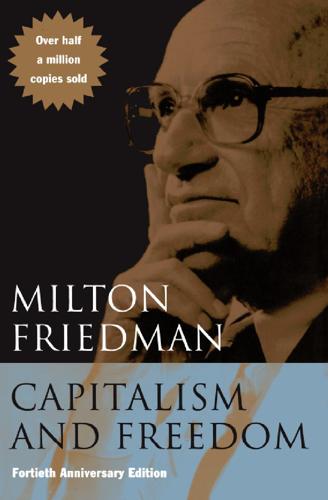
Capitalism and Freedom
by
Milton Friedman
Published 1 Jan 1962
No amount of exchange control or direct restrictions on trade enabled them to peg an exchange rate that was far out of line with economic realities. In consequence, it is unquestionably true that floating exchange rates have frequently been associated with financial and economic instability—as, for example, in hyperinflations, or severe but not hyperinflations such as have occurred in many South American countries. It is easy to conclude, as many have, that floating exchange rates produce such instability. Being in favor of floating exchange rates does not mean being in favor of unstable exchange rates. When we support a free price system at home, this does not imply that we favor a system in which prices fluctuate wildly up and down.
…
Perhaps worse than either tariffs or quotas are extra-legal arrangements, such as the “voluntary” agreement by Japan to restrict textile exports. FLOATING EXCHANGE RATES AS THE FREE MARKET SOLUTION There are only two mechanisms that are consistent with a free market and free trade. One is a fully automatic international gold standard. This, as we saw in, the preceding chapter, is neither feasible nor desirable. In any event, we cannot adopt it by ourselves. The other is a system of freely floating exchange rates determined in the market by private transactions without governmental intervention. This is the proper free-market counterpart to the monetary rule advocated in the preceding chapter.
…
A system of floating exchange rates would therefore enable us to proceed effectively and directly toward complete free trade in goods and services—barring only such deliberate interference as may be justified on strictly political and military grounds; for example, banning the sale of strategic goods to communist countries. So long as we are firmly committed to the strait jacket of fixed exchange rates, we cannot move definitively to free trade. The possibility of tariffs or direct controls must be retained as an escape valve in case of necessity. A system of floating exchange rates has the side advantage that it makes almost transparently obvious the fallacy in the most popular argument against free trade, the argument that “low” wages elsewhere make tariffs somehow necessary to protect “high” wages here.
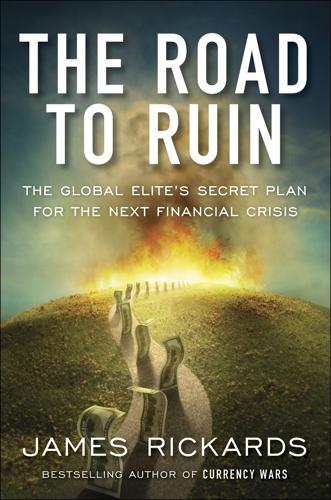
The Road to Ruin: The Global Elites' Secret Plan for the Next Financial Crisis
by
James Rickards
Published 15 Nov 2016
One distortion embraced by elites is floating exchange rates, a flawed idea foisted on the world by Milton Friedman in the 1970s. If a builder hired you to construct a house using a one-foot ruler, then told you on day two that a foot was thirteen inches, and on day three that a foot was ten inches, and so on, the resulting house would be unsound and in danger of collapse. That’s how comparative advantage works under floating exchange rates. Currency hedges are generally unavailable more than one year forward; too short a time for capital commitments that have five- to ten-year horizons. Floating exchange rates enrich currency traders and speculators, but add costs to commerce and impede capital flows.
…
A central bank can impose capital controls and refuse to allow the dollar investor to reconvert local currency and remit the proceeds. Capital controls were common in the 1960s even in developed economies. Later, these controls largely disappeared from developed economies, and were greatly reduced in emerging markets. The relaxation has been partly at IMF urging, and partly because floating exchange rates make local economies less vulnerable to a run on the bank. Yet, in an extraordinary speech on May 24, 2016, David Lipton, first deputy managing director of the IMF, laid the foundation for an international ice-nine solution: The time has come to re-examine our global architecture. … What elements of the architecture are worth revisiting?
…
The Money Riots The period from 1971 to 1980 in international finance is best described as chaotic, not only in a colloquial sense, but in a scientific sense. Equilibrium was perturbed. Values wobbled violently. IMF members tried, and failed, to reestablish fixed exchange rates at new parities along with a new dollar parity to gold. Monetarists such as Milton Friedman urged the world to abandon gold as a monetary standard. Floating exchange rates became the new normal. Countries could make their goods cheaper by letting their currencies devalue instead of making structural adjustments to improve productivity. Keynesians embraced the new system because inflation caused by devaluation lowered unit labor costs in real terms. Workers would no longer have to suffer pay cuts.
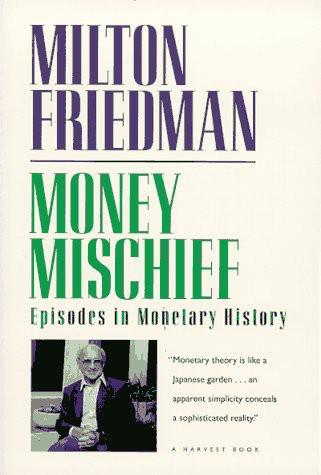
Money Mischief: Episodes in Monetary History
by
Milton Friedman
Published 1 Jan 1992
I concluded then that true economic unification in Europe, defined as a single relatively free market, was possible only in conjunction with a system of freely floating exchange rates. (I ruled out a unified currency on political grounds, if memory serves.) Experience since then has only strengthened my confidence in that conclusion, while also making me far more skeptical that a system of freely floating exchange rates is politically feasible. Central banks will meddle—always, of course, with the best of intentions. Nonetheless›, even dirty floating exchange rates seem to me preferable to pegged rates, though not necessarily to a unified currency. CHAPTER 10 Monetary Policy in a Fiat World We saw in chapter 2 that a world monetary system has emerged that has no historical precedent: a system in which every major currency in the world is, directly or indirectly, on an irredeemable paper money standard—directly, if the exchange rate of the currency is flexible though possibly manipulated; indirectly, if the currency is unified with another fiat-based currency (for example, since 1983, the Hong Kong dollar).
…
A free market arose in which the "greenback price of gold" rose above the official legal price—indeed, at the extreme, to more than double the official price. The government required customs duties and certain other obligations to be paid in gold; banks provided separate gold and greenback deposits for their clients. In short, gold and greenbacks circulated side by side at a floating exchange rate determined in the market, although greenbacks were clearly the dominant currency for most purposes and in most areas. Finally, we come to 1873. A movement was afoot to end the greenback episode and resume a specie standard. It was time for Congress to start tidying up the coinage legislation.
…
Thè countries it traded with were on a gold standard, and prices in those countries fell drastically after 1929, including the price of silver. With China on a silver standard, the fall in the price of silver was equivalent to a depreciation of the exchange rate of its currency with respect to gold-standard currencies; it gave China the equivalent of a floating exchange rate. For example, in 1929 the Chinese dollar was valued on the foreign exchange market at 36 U.S. cents; in the next two years the price of silver in terms of gold fell more than 40 percent, making the Chinese dollar worth only 21 cents. Since U.S. wholesale prices fell by only 26 percent, China could command higher prices in terms of its own currency for its exports, despite their lower price in terms of gold.
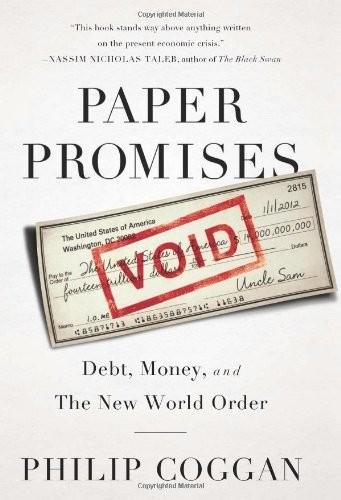
Paper Promises
by
Philip Coggan
Published 1 Dec 2011
If the country runs a trade deficit, it must borrow the money from abroad. If foreign creditors demand too high an interest rate, as has happened in Greece, Portugal and Ireland, then the country faces a severe crisis; cutbacks, if not rationing, will be required. There would be no need to choose between fixed and floating exchange rates if there were a global currency that was accepted everywhere. Trade and tourism would be much easier. But the idea, akin to the spread of global languages like Esperanto, while attractive in theory, is unlikely to be adopted in practice. Governments would lose a lot of independence in monetary policy, as Europeans have discovered; capital flows would be much harder to control if a single currency was accepted worldwide, something that would upset the Chinese, for example.
…
Once again, it was the Americans, still at that stage a creditor nation, who led the way to a new system in which central banks acted to bring down inflation and thereby protect the interest of creditors. But the debate has evolved over the years. Go back a century and the banking establishment would have been firmly in favour of fixed exchange rates and sound money. In practice, however, the banking sector has benefited hugely from floating exchange rates, which have created a highly liquid trading market and a desire for financial products that insure against exchange-rate risk. And the abandonment of fixed exchange rates has led to a huge expansion of cross-border capital flows, from which the finance sector has taken a very large bite. The seeds of the financial crisis of 2007 – 08 were sown in the exchange-rate revolution of the early 1970s.
…
In other words, countries wanted to have their cake (a fixed exchange rate) and eat it (independent monetary policy). They did not want the markets to have the ability to point out when monetary policy was incompatible with the exchange-rate target. Establishing the Bretton Woods system evoked many of the arguments that still rage today. Graham favoured floating exchange rates, but that turned out to be a policy whose time had not yet come. His arguments (and those of laissez-faire economists like Friedrich Hayek and Ludwig von Mises) were to be taken up in the 1960s and 1970s by the Chicago economists Milton Friedman and Robert Lucas. The creation of the euro owes much to the feeling – prevalent at Bretton Woods – that exchange rates should be stable and speculation curbed.
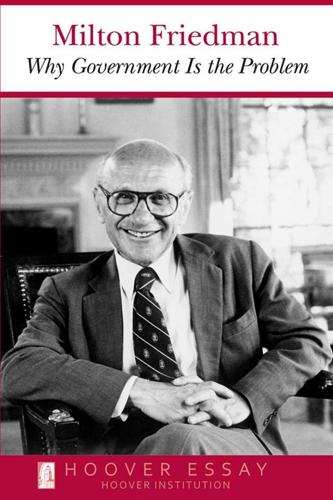
Why Government Is the Problem
by
Milton Friedman
Published 1 Feb 1993
It is interesting to note that every economic plank of the 1928 Socialist party platform has by now been either wholly or partly enacted. So ideas are important, but they take a long time and are not important in and of themselves. Something else has to come along that provides a fertile ground for those ideas. I mentioned the adoption of floating exchange rates in 1971; it was the same thing. Many economists during the previous twenty years had been talking about how much more desirable floating exchange rates would be, but they never got anywhere until gold started leaving the United States and Nixon closed the gold window because there was nothing else he could do. All of a sudden you had a crisis. What happened then was determined by the ideas that had already been explored and developed.
…
A clear example in the international sphere is the International Monetary Fund (IMF), which was established to administer a system of fixed exchange rates. Whether that is a good system or a bad system is beside the point. In 1971, after President Nixon closed the gold window, the fixed exchange rate system collapsed and was replaced by a system of floating exchange rates. The IMF's function disappeared, yet, instead of being disbanded, it changed its function and expanded. It became a relief agency for backward countries and proceeded to dig deeper into the pockets of its sponsors to finance its new activities. At Bretton Woods, two agencies were established: one to administer a fixed exchange rate system and the other, the World Bank, to perform the function of promoting development.
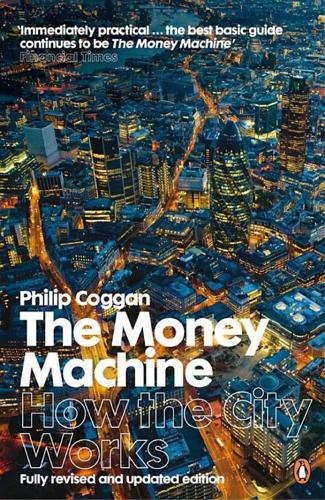
The Money Machine: How the City Works
by
Philip Coggan
Published 1 Jul 2009
So companies looked for ways to protect themselves from these risks. Secondly, floating exchange rates created the potential for continuous speculation. The 1970s saw the creation of the financial futures market in Chicago, which allowed traders to bet on the likely movement of exchange rates. Both developments were opportunities for financial companies. They could make money speculating on the markets and they could make money helping companies protect themselves from foreign-exchange risk. Both opportunities were taken. Floating exchange rates also had significant implications for governments. Think of three key elements of monetary policy: exchange rates, interest rates and capital controls.
…
The easiest way of doing so was to raise interest rates; this had the effect of cutting consumer demand for foreign goods. But the result was a stop– go kind of economy, in which periods of rapid expansion were suddenly cut short as governments raised interest rates to protect sterling. In a world of floating exchange rates, there is no requirement for governments to ratchet up interest rates every time the currency falls. Voters naturally don’t like high interest rates. The problem was exacerbated by governments’ desire to keep unemployment low; at the slightest sign of economic weakness, they acted to boost the economy.
…
In the late 1990s, however, LIFFE abandoned trading in the face of competition from the German futures market. Trading moved to a screen-based system, which was designed to be cheaper for investors. However, Chicago, the world’s biggest futures market, retains the pits and coloured jackets. With the advent of floating exchange rates (see Chapter 14), it occurred to Chicago traders that there may well be a market for trading in currency futures, since exchange rates seemed to be exhibiting the same volatility as commodity prices. Currency futures quickly became a success; some experts now estimate that 10 per cent of all US foreign-exchange transactions take place on the Chicago futures floor.
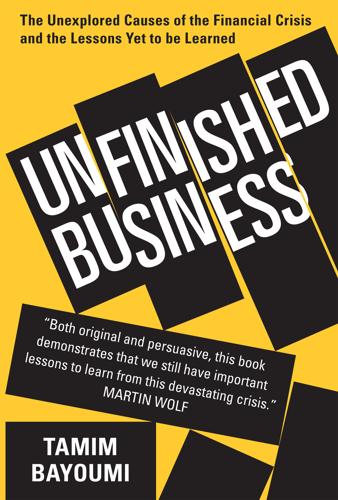
Unfinished Business
by
Tamim Bayoumi
The crisis only happens once a sufficient number of investors switch to expecting a devaluation—the exact timing of a crisis depends on the mood of investors.7 If fixed exchange rate regimes create risks of a currency crisis, then why not simply adopt a floating exchange rate regime where the value of the currency is left to market forces? While a floating exchange rate solves the problem of investors rushing in on the assumption they will be able to leave before the inevitable devaluation of a fixed exchange rate, it has its own potential problems. Like other asset prices, exchange rates can experience excessive swings as a result of herding behavior by investors.
…
The future Delors Report was to take a much more decentralized approach to sovereignty, in large part because it was driven by French dissatisfaction with the growing dominance of the Deutsche mark in European monetary policy, a dynamic to which we now turn. The Hard D-Mark In the period from the early 1970s to the mid-1980s plans for monetary union were overshadowed by monetary instability coming from the collapse of the Bretton Woods system of fixed exchange rates. Globally, the main challenges were managing the switch from fixed to floating exchange rates and taming inflation, which rose in the wake of the 1973 oil price shock. On curbing inflation, Germany and Japan were notably more successful than other major economies including the United States and other members of the European Economic Community such as France, Italy, and the United Kingdom.
…
The Outskirts Cannot Hold: The European Exchange Rate Mechanism Crisis After the collapse of the Bretton Woods fixed exchange rate system, the European Economic Community (EEC, later the European Union) tried to maintain fixed exchange rates across its membership even as the United States and Japan switched to floating exchange rates. There were good reasons for Europe to choose a different approach. The United States and Japan were large economies that were relatively closed to international trade. As a consequence, while the value of the exchange rate mattered, it was not regarded as a central policy issue. By contrast, the members of the Community had deliberately fostered much closer trade ties through a customs union that made exchange rate fluctuations between them more important.
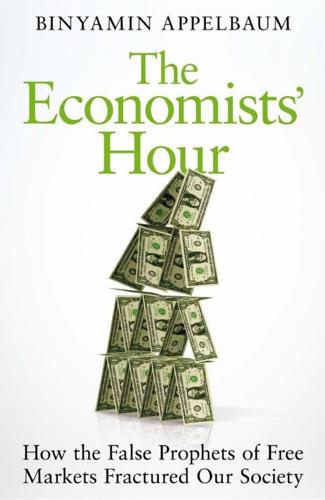
The Economists' Hour: How the False Prophets of Free Markets Fractured Our Society
by
Binyamin Appelbaum
Published 4 Sep 2019
Friedman favored markets of all kinds, and he thought a futures market was a necessary complement to a system of floating exchange rates. It would provide a vehicle for investors to signal their views of the direction of currency prices. And just as farmers benefited from protection against fluctuations in crop prices, businesses would benefit from protection against fluctuations in exchange rates. When Melamed announced the creation of the International Money Market on December 20, 1971, the press release had Friedman’s name all over it. Melamed called the five-thousand-dollar endorsement deal “the best investment the Merc ever made.”63 Friedman had predicted that floating exchange rates would change slowly over time, because the relative strength of national economies also changed slowly over time.
…
They agreed the primary goal of economic policy was to increase the dollar value of the nation’s economic output. They had little patience for efforts to address inequality. A 1979 survey of the members of the American Economic Association found 98 percent opposed rent controls, 97 percent opposed tariffs, 95 percent favored floating exchange rates, and 90 percent opposed minimum wage laws.37 Their differences were matters of degree, and while those differences are consequential — and are described in these pages — the degree of consensus was consequential, too. Critiques of capitalism that remained a staple of mainstream debate in Europe were seldom heard in the United States.
…
Melamed called the five-thousand-dollar endorsement deal “the best investment the Merc ever made.”63 Friedman had predicted that floating exchange rates would change slowly over time, because the relative strength of national economies also changed slowly over time. Moreover, he said that speculators would contribute to stability, because they would make money by driving prices back toward the levels justified by those fundamentals. But instead of floating, exchange rates soared and sank. Economists offered a variety of tortured theories for the volatility, avoiding the actual and obvious explanation: there was gambling going on.64 By 1985, daily currency trading topped $150 billion; by 1995, $1.2 trillion; by 2007, $3.3 trillion.65 An industry popped into existence: currency managers for industrial firms, bankers to take their instructions, speculators to take advantage.* The losers did not take long to start washing up onshore.
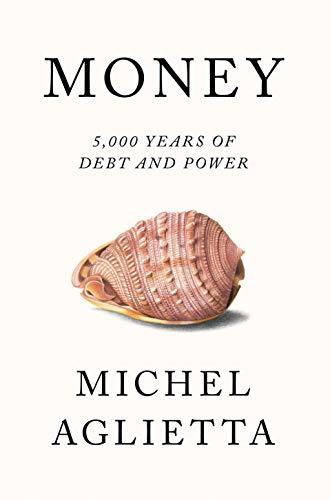
Money: 5,000 Years of Debt and Power
by
Michel Aglietta
Published 23 Oct 2018
The result is a rise in the correlation of asset yields across several countries. The macroeconomic effect of exchange crises in countries with debts in dollars and incomes in national currencies plays out on the balance sheets of both banks and non-banking actors. The debt liabilities to asset values ratio is a function of the exchange rate. If the country is on a floating exchange rate, the anticipated depreciation of the currency’s exchange rate will be self-fulfilling. The rise in the foreign exchange rate swells indebtedness and weakens the balance-sheet structure. This increases risk premiums and thus increases the short-term cost of renewing the debt. The result is a fall in capital’s profitability, weakened investment and a sharp brake on growth, or even a recession if the balance sheets worsen significantly.
…
The major differences between the two plans concerned the nature of the initial quotas (whether these would be drawing rights on a bank, or subscription to a Fund’s capital); the role of the exchange market and the extent of capital controls; and, finally, the symmetry or asymmetry of compulsory adjustments. In Keynes’s view, capital controls had to be permanent, since floating exchange rates were not capable of leading to an economically satisfying equilibrium in the balances of payments. The Clearing Union would much more effectively take over this role, just as the banking principle had unified currencies within nations by eliminating the dualist system of the Middle Ages, as well as the confusion among different units of account that resulted from it.
…
The Failure of the Reform Attempt (1972–74) and the Jamaica Accords (1976) The SDR were at the heart of the negotiations seeking to rebuild the international monetary system between 1972 and 1974. These negotiations took place within the Committee of Twenty (C20) and subsequently the IMF Interim Committee.18 The SDR stood at the crossroads between two crucial questions: the demonetisation of gold and the future of the dollar. Firstly, with the establishment of floating exchange rates, in June 1974 the SDRs’ value passed from being attached to gold to being attached to a basket of currencies. This matched with the US’s desire to approve floating exchanges rather than return to a system of parities centred on SDR. But, this being the case, there was an inherent contradiction in purporting to make SDR the main reserve asset.
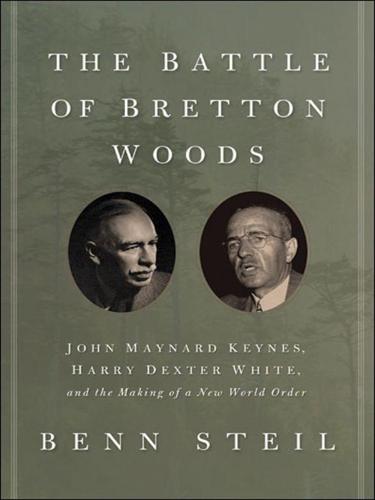
The Battle of Bretton Woods: John Maynard Keynes, Harry Dexter White, and the Making of a New World Order
by
Benn Steil
Published 14 May 2013
The issue of replacing the gold standard with something else was as difficult and fraught as the issue of replacing the dollar globally today. Even a thinker as radical and creative as Keynes never made a total break with it. The extreme of purely floating exchange rates, such as the world has known since 1971, was considered by few economists in the ’30s (Lionel Robbins being a notable exception) to be a “system” as such, helping to restore equilibrium. Today associated with laissez-faire economics, floating exchange rates were then frowned upon by economists of the right as well as the left as both symptom and cause of disorder in monetary affairs; disorder that triggered others to initiate mutually destructive competitive responses.
…
“I hold that in modern conditions,” he wrote in a letter to The Times of London on August 1, “wages in this country are, for various reasons, so rigid over short periods, that it is impracticable to adjust them to the ebb and flow of international gold-credit, and I would deliberately utilise fluctuations in the exchange as the shock-absorber.” Though this might appear a defense of floating exchange rates, he would far more often than not in his career defend the desirability of “stable” rates. This continuous finessing of so fundamental an issue in monetary management would flummox his supporters and enervate his detractors. Simultaneous with his Times letter Keynes published The Economic Consequences of Mr.
…
The United States now had the most to gain from adoption of the proposals, not because it would need assistance from the fund or the bank but because it would “get assurance that other countries will be enabled to pursue monetary credit and trade policies that we regard as essential for a high level of world trade.” Floating exchange rates during White’s time at the Treasury were anathema to powerful U.S. commercial interests—large exporters and domestic producers—owing to upward pressure on the dollar. Foreign currencies falling against the dollar tended to depress U.S. exports and fuel imports competitive with American-made goods.
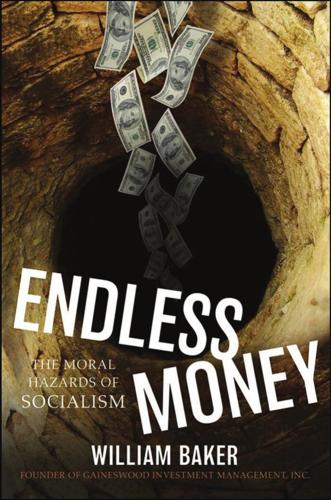
Endless Money: The Moral Hazards of Socialism
by
William Baker
and
Addison Wiggin
Published 2 Nov 2009
One is the tendency of credit to grow excessively under a regulated centralized bank that targets inflation through interest rate setting. Another is why modern day floating exchange rates were unable to prevent the buildup of destabilizing trade and capital imbalances. Economists have gained notoriety in recent decades for linking gold to the Depression’s downturn and then crediting the revival of the late 1930s with the lessening of its use as a currency reserve, not necessarily by outright accusation but through its ability to transmit deflation globally. This being the case, the inability of today’s floating exchange rates to block the transmission of credit contraction and the deflation of asset prices (and prospectively wages and consumer prices) is a glaring counterpoint to singling out adherence to gold as a cause of poor economic performance of certain nations during that era.
…
Bordo is a monetarist who is of the view that a gold exchange standard is flawed because there is a “tendency for such a system to amplify and propagate the effects of unstable policies in the reservecurrency countries.”40 Schwartz partnered with Milton Friedman on his groundbreaking monetary explanation of the Depression. Although they seem to vigorously support freely floating exchange rates, they conclude in a 1988 paper looking at the economic volatility from the end of Bretton Woods (1971) that “floating rates may not provide the degree of insulation once believed,” debunking the thesis that “transmission that occurred under fixed exchange rates …was mostly prevented when exchange rates floated.”41 Their disparagement of the work of other economists studying the field of fixed and floating exchange rates and their degree of stability to the world economic system is illuminating, for it highlights the inadequacy of econometric capability: “The exercises in model building that have occupied specialists in international economics seem designed to impress readers with the ingenuity of the effort rather than the value of the analytical contribution.
…
But Fisher then became a leading indicator of the intellectual mood of the 1930s. He quickly grasped reflation as a way out of the liquidity trap and, out of self-interest, his personal dilemma. Fisher helped construct a new orthodoxy that likewise has calcified academia around support for floating exchange rates, elastic currency, and the uselessness of commodity-backed currency. If the world, as Einstein proved, is circular and contains an unseen dimension, then why might not also the riddles of finance be? As we shall see in the following chapter, “Spitting into the Wind,” the Federal Reserve governors have clung to the prevailing attitudes of the Fisherian and Friedmanist school of thought.
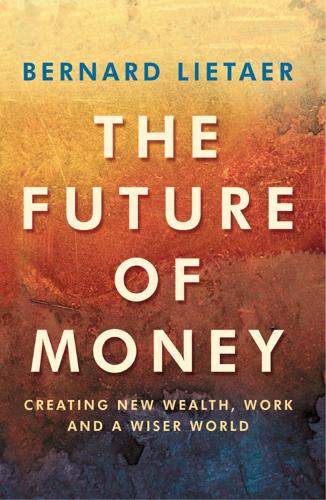
The Future of Money
by
Bernard Lietaer
Published 28 Apr 2013
Compare this with the situation as recently as 1983 (see Figure P.7), when the reserves still provided a pretty safe cushion. Even people who profit from explosive speculative activity are becoming seriously worried. For instance George Sores, widely considered one of the biggest players in this game, states: 'Freely floating exchange rates are inherently unstable; moreover, the instability is cumulative so that the eventual breakdown of a freely floating exchange rate system is virtually assured. Joel Kurtzman, business editor of The New York Times, is even more damning. He titles his latest book The Death of Money: How the Electronic Economy has destabilised the World’s Markets. A master of understatement like Paul Volcker, ex-governor of the Federal Reserve, goes on record to express his concern about the growth of 'a constituency in favour of instability', i.e. financial interests whose profits depend on increased volatility.
…
Fired Ercbnnge Rnte: Rate fixed by an authority at which one currency can be exchanged against another. This was the rule in the Bretton Woods Agreement from 1945 to 1971, and the IMF was the authority, which had to approve any, changes in exchange rates. The rule of fixed exchange rates was replaced by floating exchange rates after 1972 for most national currencies. Floating Exchange Rate: Rate at which one currency can be exchanged for another as determined by the free bidding and asking in the foreign exchange market. Has been the regime for most national currencies since 1972. Fractional Reserves: When a currency is issued with only a fraction backed by whatever supports it.
…
They have therefore created the Time Dollars necessary for their transaction by agreeing on the transaction itself. The main advantage of mutual credit systems is that they self-regulate to have always currency available in sufficiency. Negotiated exchange rate: In contrast with ‘fixed exchange rates', when the exchange rate is negotiated as part of the transaction itself. Currently under floating exchange rates, all national currencies have negotiated exchange rates among each other. Similarly with ROCS the value of one hourly service is negotiated at the moment of a transaction: a dentist may charge five ROCS for each hour of work for example. OECD: The Organisation of Economic Co-operation and Development, based in Paris, and grouping the 'developed' countries in the world.
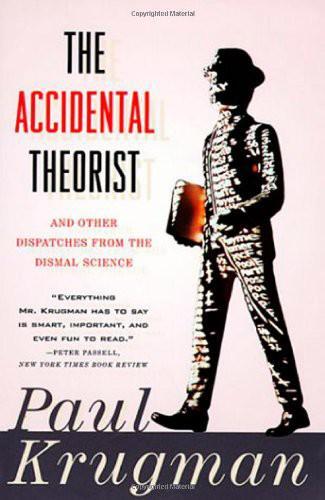
The Accidental Theorist: And Other Dispatches From the Dismal Science
by
Paul Krugman
Published 18 Feb 2010
Moreover, how can you discuss globalization without noticing that the U.S. has a floating exchange rate? If the Fed were to pursue a radically more expansionary monetary policy, one sure consequence would be a lower value of the dollar. If you really think that U.S. prices are basically limited by foreign competition, then you have to believe that a fall in the dollar will translate almost directly into higher inflation. In fact, traditional analyses of inflation in trading economies conclude that expansionary monetary policy has more, not less, effect on inflation in a country with a large import share and a floating exchange rate than it does in a relatively self-sufficient economy.
…
The answers one might give to these questions define four boxes, all of which have their adherents. Here is the matrix: Is exchange rate flexibility useful? No Yes Can the forex market be trusted? Yes Relaxed guy Serene floater No Determined fixer Nervous wreck Suppose that you believe that the policy freedom a country gains from a floating exchange rate is actually worth very little, but you also trust the foreign exchange market not to do anything silly. Then you will be a very relaxed guy: You will not much care what regime is chosen for the exchange rate. You may have a small preference for a fixed rate or better yet a common currency, on the grounds that stable exchange rates reduce the costs of doing business; but you will not lose sleep over the choice.

Foolproof: Why Safety Can Be Dangerous and How Danger Makes Us Safe
by
Greg Ip
Published 12 Oct 2015
If one country’s inflation is too high or it consumes too much and produces too little, its currency will decline to bring its costs back in line or force it to import less and save more. As chaotic as floating exchange rates (currencies that fluctuate against one another) are, they thus serve a vital economic purpose: they allow separate economic cultures to coexist. Milton Friedman compared floating exchange rates to daylight saving time: Isn’t it absurd to change the clock in summer when exactly the same result could be achieved by having each individual change his habits? All that is required is that everyone decide to come to his office an hour earlier, have lunch an hour earlier, etc.
…
In the early 1990s Mexico, as it had in the 1970s and 1980s, borrowed heavily from foreigners, this time in the form of short-term Treasury bills whose value was linked to the dollar rather than via bank loans. When the peso collapsed in 1994, the cost of servicing that debt soared, and the United States and International Monetary Fund bailed Mexico out. Mexico learned its lesson, and thereafter kept a floating exchange rate and stuck to borrowing in its own currency. When the rich world sank into crisis in 2008, Mexico’s central banker observed, with relief, “This time it wasn’t us.” Individual firms learned lessons, as well. While almost forgotten now, the collapse in 1990 of Drexel Burnham Lambert, home of the junk bond king Michael Milken, was the largest closure of an investment bank in the United States.
…
A similar problem afflicts the entire global economy. The crisis that befell America was in its own way the product of too much saving in other parts of the world. Indeed, this could be traced to the roots of a previous crisis, in East Asia, which was itself the result of a failed effort to eliminate the uncertainty of floating exchange rates. Thailand entered the 1980s suffering from double-digit inflation, excessive private borrowing, and a gaping budget deficit. It put in place several strict policies to restore health, among them fixing the exchange rate of its currency, the baht. That stable exchange rate made foreign investors less worried about lending to Thai companies in local currency, believing that when the Thai borrower repaid the money, it would not have lost value because of a devaluation.
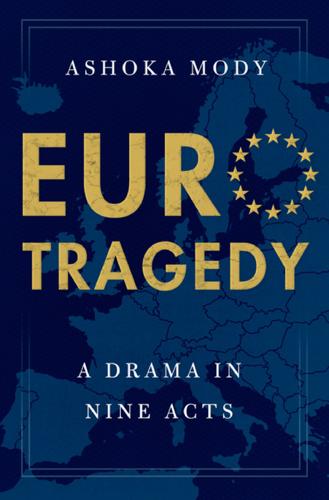
EuroTragedy: A Drama in Nine Acts
by
Ashoka Mody
Published 7 May 2018
The term “flexible Wechselkurs” was used for German books, and “taux de change flexible” was used for French books. The English variation “floating exchange rate,” the German variation “schwankender Wechselkurs,” and the French variation “taux de change flottant” yielded similar trends. three leaps in the dark 41 Robert Hetzel, economist at the Federal Reserve Bank of Richmond, would later explain: “Germany’s commitment to a free market economy pushed it to reject fixed exchange rates and adopt floating exchange rates.”82 Thus, in proposing a monetary union, Pompidou was defying not only the global experience that was causing fixed-exchange-rate systems to break down, but he was also ignoring the clash between the French dirigiste temperament and the German market-oriented economic ideology.
…
A consensus toward more flexibility, even floating, of exchange rates was emerging. The values of currencies would change continuously as national and global conditions changed. introduction 5 German officials opposed a monetary union. Germans, traditionally more pro-market, were inclined toward floating exchange rates. But the French initiative to create a single European currency was pulling them in the opposite direction. From the start, the political worry for Germans was that they would be sucked into paying for countries that had fallen into prolonged recessions and financial crises. Yet at The Hague, German Chancellor Willy Brandt did not disengage from the discussion.
…
Two days before the summit, on Saturday, November 29, the New York Times reported that Pompidou would “press for closer monetary links within the European Economic Community” at the summit.84 Pompidou’s finance minister, Valéry Giscard d’Estaing, added that the summit would chart a path toward a common European monetary policy. The Germans could have said no and walked away. Germany was an economically powerful nation. It preferred floating exchange rates. The idea of a European monetary union would have been shelved in the archives. The Shadow of the War Continues to Fall on Germany Germany’s politics and leadership were also changing. The Christian Democratic Union (CDU) had finally lost its postwar grip on power, and Willy Brandt of the Social Democratic Party (SPD) had just become chancellor.
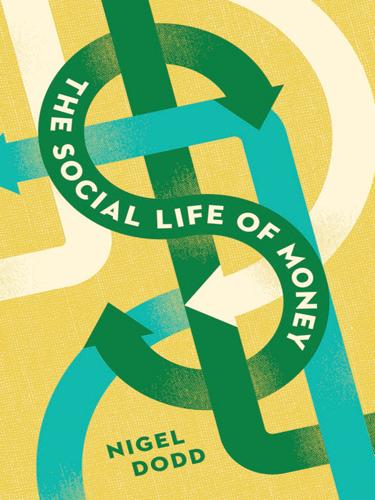
The Social Life of Money
by
Nigel Dodd
Published 14 May 2014
Even here, a narrative is attached to the rating, which is unraveled whenever the rating shifts, or when various ratings agencies offer different grades for a particular financial product. 42 Bretton Woods refers to the international monetary system that was established in 1944, wherein countries agreed to adopt monetary policies aimed to ensure that their currencies maintained fixed rates of exchange against the U.S. dollar, which was in turn “pegged” to gold. After a series of difficulties during the 1960s, the system finally broke down in 1973, when a system of “floating” exchange rates was adopted. President Nixon’s decision to suspend the dollar’s convertibility into gold in 1971—known as the “Nixon shock”—was a major step toward this breakdown. 43 It was Bourdieu who accused Hans Tietmeyer, then President of the Bundesbank, of perpetuating a “monetarist religion” (see Tognato 2012: 135). 44 Issing was a key figure in the euro’s design and a founding member of the executive board of the European Central Bank. 2 CAPITAL This boundless drive for enrichment, this passionate chase after value, is common to the capitalist and the miser; but while the miser is merely a capitalist gone mad, the capitalist is a rational miser.
…
In other words, the burden of devaluation shifts from private capital onto money, as private problems (money’s particularism) are transposed into public ones (money’s universalism) (Harvey 2006: 310). It is at the top of the hierarchy of monetary institutions that the fundamental question of money’s value must always be defended. It is on this level, moreover, that capitalist crises take on an international dimension through money. After the collapse of Bretton Woods, states with floating exchange rates were competing to determine which of them bear the brunt of devaluation. Alternatively, in the aftermath of the 2007–8 banking crisis, periodic “currency wars” have ensued as states seek to boost export-led growth by devaluing their currencies. For Harvey, the increasing involvement of the state in the economy since Marx’s time is not a refutation of his basic law of value.
…
Harvey cites Roosevelt’s New Deal as one major example of these forces at work. Two more recent instances that I want to discuss here are the aftermath of the collapse of the Bretton Woods regime, which saw major struggles between capital and labor being waged against the background of a new international regime of floating exchange rates, and the ongoing crisis within the Eurozone, whose devastating effect across classes and generations is still being played out. One of the classic analyses of the Bretton Woods crisis from the perspective of Marx’s theory of money and credit was advanced by Christian Marazzi in his 1976 paper, “Money in the World Crisis” (Marazzi 1995).

Manias, Panics and Crashes: A History of Financial Crises, Sixth Edition
by
Kindleberger, Charles P.
and
Robert Z., Aliber
Published 9 Aug 2011
In fact, he considered clinging to rigid beliefs in the face of disconcerting evidence to be one of the more dangerous forms of irrationality, especially when it is practiced by those in charge. The international economy would be a safer place if CPK’s tolerant skepticism were more common among the powers that be. I am thinking, in particular, about current discussions of the so-called ‘Washington consensus’, and the pros and cons of both freely floating exchange rates and unfettered capital markets. Any reader of this book will come away with the distinct notion that large quantities of liquid capital sloshing around the world should raise the possibility that they will overflow the container. One issue omitted in the book – because it is well outside its scope – is the other side of the ledger: What are the social benefits of free capital flow in its various forms, the analogue of gains from trade?
…
The range of movement in the values of national currencies since the early 1970s has been much larger than ever before. In 1971 the United States abandoned the US gold parity of $35 an ounce that had been established in 1934. The effort to retain a modified version of the Bretton Woods system of pegged currencies that was formalized in the Smithsonian Agreement of 1972 failed and a floating exchange rate arrangement was adopted by default early in 1973. At the beginning of the 1970s, the dominant market view was that the German mark and the Japanese yen might appreciate by 10 to 12 percent because their inflation rates had been below the US rate in the previous few years. The German mark and the Japanese yen appreciated more rapidly than anticipated through most of the 1970s, and then both currencies depreciated significantly in the first half of the 1980s, although not to the levels of the early 1970s.
…
The United States made no effort to defend the new parity for the US dollar that had been set in the Smithsonian Agreement. By February 1973 speculation that the mark would be revalued led to increasingly large money flow to Frankfurt; the Bundesbank stopped buying the US dollar, and the mark immediately appreciated. Most economists had thought that the adoption of floating exchange rates would severely dampen the movement of interest-sensitive money and that once currencies were floating central banks would be able to follow independent monetary policies without any untoward external effects. Economists differed about whether speculative money movements would be stabilizing or, occasionally, destabilizing in a serious way; the general view was that fear of currency losses would deter cross-border money flows.
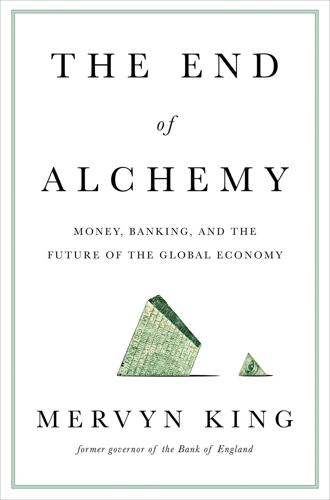
The End of Alchemy: Money, Banking and the Future of the Global Economy
by
Mervyn King
Published 3 Mar 2016
But in the late 1960s differences in inflation across countries, especially between the United States and Germany, appeared to be more than temporary, and led to the breakdown of the Bretton Woods system in 1970–1. By the early 1970s, the major economies had moved to a system of ‘floating’ exchange rates, in which currency values are determined by private sector supply and demand in the markets for foreign exchange. Inevitably, the early days of floating exchange rates reduced the discipline on countries to pursue low inflation. When the two oil shocks of the 1970s – in 1973, when an embargo by Arab countries led to a quadrupling of prices, and 1979, when prices doubled after disruption to supply following the Iranian Revolution – hit the western world, the result was the Great Inflation, with annual inflation reaching 13 per cent in the United States and 27 per cent in the United Kingdom.7 Economic experiments From the late 1970s onwards, the western world then embarked on what we can now see were three bold experiments to manage money, exchange rates and the banking system better.
…
So the euro area must pursue one, or some combination of, the following four ways forward: Continue with high unemployment in the periphery countries until wages and prices have fallen enough to restore the loss in competitiveness. Since the full-employment trade deficits of these countries are still significant, further reductions will be painful to achieve. Unemployment is already at very high levels in these countries. In small countries, for which a floating exchange rate may seem too risky, such a route may be the only option. Create a period of high inflation in Germany and other countries in surplus, while restraining wages and prices in the periphery, to eliminate the differences in competitiveness between north and south. That would require a marked fall in the euro for a long period, which would be unpopular in both Germany, whose savers would earn an even lower return on their assets than at present, and the rest of the world, which would interpret the fall as a hostile move.
…
The aim should be fourfold: to reinvigorate the IMF and reinforce its legitimacy by reforms to its voting system, including an end to a veto by any one country; to put in place a permanent system of swap agreements among central banks, under which they can quickly lend to each other in whichever currencies are needed to meet short-term shortages of liquidity; to accept floating exchange rates; and to agree on a timetable for rebalancing of major economies, and a return to normal real interest rates, with the IMF as the custodian of the process. The leadership of the IMF must raise its game. The two main threats to the world economy today are the continuing disequilibrium between spending and saving, both within and between major economies, and a return to a multipolar world with similarities to the unstable position before the First World War.
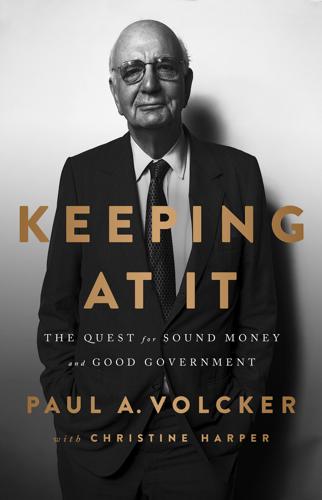
Keeping at It: The Quest for Sound Money and Good Government
by
Paul Volcker
and
Christine Harper
Published 30 Oct 2018
Milton Friedman, openly and loudly, had been advocating much more radical action: a system of freely floating exchange rates which, in his view, would let the markets rapidly and efficiently correct international payment imbalances and better reconcile differences in national monetary policies. In effect, he was proposing to discard a major part of the Bretton Woods agreement and leave currencies to the whim of the (in his view, perfectly rational) market, without any concern for other countries’ wishes. His principal intellectual opponent was Bob Roosa, who argued that the 1930s experience amply demonstrated the instability that floating exchange rates could create, the very antithesis of the order embodied in the Bretton Woods agreement.
…
The major European nations invited the United States to an emergency meeting in Paris on Friday, March 9. It turned out to be momentous. The morning session was spent largely by ministers expressing their individual frustrations about the lack of practical options. Finally, temporary floating seemed the only reasonable avenue. Shultz, ideologically in favor of floating exchange rates and free markets in general, had been among the Nixon advisors who wanted to adopt that approach when the gold window was closed in 1971. At that point, he had been overruled by Connally and Burns and eventually the president. I wasn’t sure how he would react once he had the full responsibilities of Treasury secretary.
…
See also specific events Financial Reporting Council (Britain’s Accounting Standards Board), 194 Financial Services Modernization Act/1999 (Gramm-Leach-Bliley law/1999), xv, 205 Financial Stability Oversight Council (FSOC), 214 Financial Times, 201 First Chicago, 98, 124 First Pennsylvania rescue/as model, xii, 125, 127, 146 Fiscal Policy Seminar, 24 fixed exchange rates Bretton Woods system and, ix, 24, 67 Federal Reserve and, 49, 49n foreign currency swaps, 49 freely floating exchange rates/problems and, 63–64 gold committee and, 51–52 gold reserves levels and, 51, 61–62, 64, 70 Kennedy and, 45 “market” vs. “official” price, 61–62 Operation Twist, 49 problems/possible solutions, 61–69, 70–71 Roosa/“Roosa bonds” and, 48–49 “Triffin dilemma,” 48, 54, 64, 65, 87 US/other countries and, 62, 64, 65, 66, 67, 68, 70–71, 72, 73–74 fixed exchange rates/end Camp David meeting (1971), 71–74 currency crises continuing and, 101 Nixon meetings/actions following, x–xi, 76, 78, 79 Nixon’s August 15 speech and, x, 75 problems/solutions and, xi, 76–86 reactions US/abroad, 75–79 Smithsonian agreement and, xi, 79–80, 82, 87 Volcker travels/meetings and, 75–82 Folsom, Suzanne Rich, 189 Ford, Gerald, xi, 173 “four nos” economic policy (Connally), 70 Fowler, Joe Federal Reserve discount rate and, 54 Goldman Sachs and, 93, 93n special drawing rights (SDRs) and, 57, 65–66 Treasury and, x, 53–54, 57, 61 Volcker and, 93, 149, 150 France, x–xi, 48, 62, 64, 76, 84.
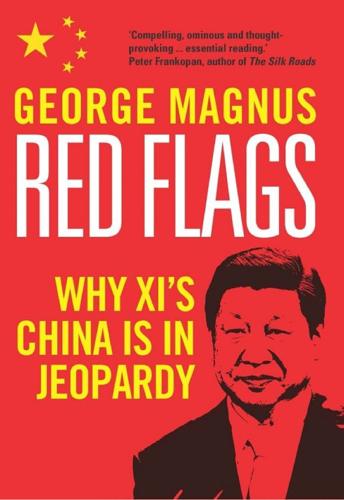
Red Flags: Why Xi's China Is in Jeopardy
by
George Magnus
Published 10 Sep 2018
Liberalisation of the exchange rate over the years has proceeded in fits and starts, culminating in the adoption in 2014 of trading bands that were 2 percentage points either side of a daily central rate, the admission in 2015 of the Renminbi to the IMF’s Special Drawing Rights and, in the same year, the announcement that the Renminbi would be managed not only against the US dollar, but also against a new basket of currencies. China’s long-standing intention to have a fully convertible currency, and to have a flexible currency, however, does not necessarily mean that the authorities are getting any closer to having a floating exchange rate. Indeed, if anything, the activities of the People’s Bank suggest that a free float is not on the agenda anytime soon. Liberalisation of the capital account has a mixed scorecard. Inward and outward flows are controlled by the Qualified Foreign Institutional Investors, and Renminbi Qualified Institutional Investors quotas, and the Qualified Domestic Institutional Investors ceiling, respectively.
…
If China wants to manage its exchange rate within certain limits, there has to be a stable relationship between the growth of domestic Renminbi assets due to credit creation and the level of foreign exchange reserves needed to ‘back’ the asset base of the financial system and keep the currency stable. Countries with floating exchange rates don’t have this problem, because the currency can fall without there being any reserves constraint. Consider China’s situation in the light of the experience of many countries during the Asian crisis just over two decades ago. In the run-up to that crisis, many Asian economies pegged their exchange rates to the US dollar, wanted to run their own monetary policy, and opened their capital accounts to large inflows of financial and physical capital.
…
Larger trade deficits became common from the 1980s onwards, and the trend was underpinned as emerging markets also took up their positions as export-led economies from the 1990s. The US function in the global system necessarily changed. In the immediate post-war years, it mainly supplied US dollar liquidity via capital outflows. Since the advent of floating exchange rates, it has done so mainly via trade deficits, the counterpart of which are net inflows of capital from other countries, including China. The bottom line, however, is that US imports played a key role in greasing the world’s demand for US dollars and sustaining global economic growth.12 There is no question that the US dollar has survived as the premier global currency – contrary to repeated warnings – with its reputation for stability, safety and liquidity largely intact, but not wholly.
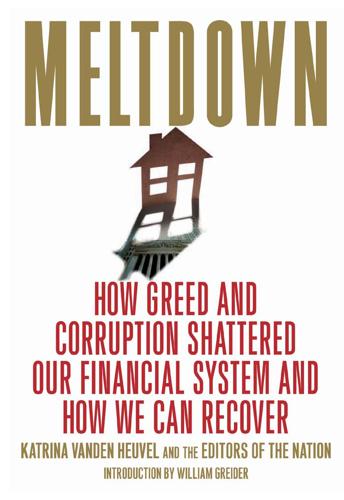
Meltdown: How Greed and Corruption Shattered Our Financial System and How We Can Recover
by
Katrina Vanden Heuvel
and
William Greider
Published 9 Jan 2009
Addressing these issues should be an integral part of a new economic model, including requirements for more transparent reporting (including on hedge funds and other private investment vehicles), greater shareholder power and more restrictions on how executives are compensated. The system also favors debt. Closer oversight of credit standards is required. Similarly, the international flow of hot capital has upended theories about the system of floating exchange rates. The fact that America’s dollar stays high despite a huge trade deficit is not self-correcting. As Robert Wade of the London School of Economics argues, some intelligent combination of semi-pegged currencies and capital-flow restraint would go miles toward rebalancing the international economy.
…
When in 1971 the Nixon administration was faced with the choice of increasing taxes to finance the Vietnam War or abandoning the Bretton Woods fixed-exchange-rate system that delivered pre-dictability and less risk in international financial relationships, it had no hesitation. The markets would do the job instead—and if other governments did not like the new risks, tough. For a long time, it looked as though private markets could step into the breach—recycling first petrodollars in the 1970s and then Asian dollars back into the global system. Floating exchange rates were volatile, but instruments like markets in future exchange rates emerged to manage new risks. There might be serious ruptures, like the 1980s Latin American debt crisis or the 1990s Asian financial crisis when private markets took fright, but basically governments could step away from global economic management.
…
It was not just Lyndon B. Johnson who opened the way to the Republicans’ “Southern Strategy” and nearly 40 years of conservative dominance: It was also Nixon’s abandonment of government-led economic disciplines through his suspension of Bretton Woods fixed exchange rates. Obama should propose the end of floating exchange rates and argue for a system of managed rates between the euro, dollar and yen to bring back more pre-dictability into the system. The American, EU and Japanese governments would undertake, as in Bretton Woods I, whatever economic action is needed to maintain stability between their exchange rates.
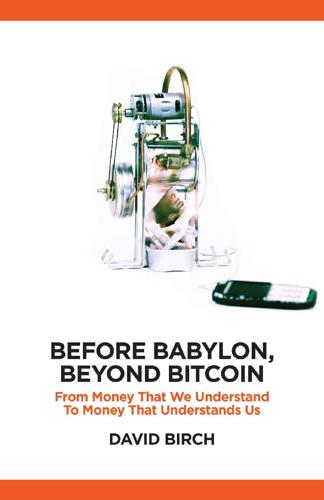
Before Babylon, Beyond Bitcoin: From Money That We Understand to Money That Understands Us (Perspectives)
by
David Birch
Published 14 Jun 2017
This episode led Sir Thomas to derive his eponymous maxim: ‘bad money drives out good’ (although it should be noted that he was far from the first person to understand the principle). It might be more accurately rendered as ‘bad money drives out good money at fixed exchange rates’, since at floating exchange rates the market will simply adjust: thus, one Zimbabwean dollar used to be worth considerably less then one World of Warcraft gold piece. If an economically illiterate dictator (in Zimbabwe, for example) had set the exchange rate between Zimbabwean dollars and gold pieces at one-to-one, then sane citizens would offload all their dollars for worthless trinkets as soon as possible while hanging on to their gold pieces.
…
This market continued to grow long after the end of convertibility, incidentally, and by 1994 the ‘eurodollar contract’ that gave the purchaser the obligation to borrow $1 million in London in three months’ time was the most heavily traded financial instrument in the world (Mayer 1998b). The drain on the American reserves simply could not continue. In 1971, when Richard Nixon made the famous decision to end the convertibility of the US dollar into gold, we entered the world of fiat currency, floating exchange rates, computers, global telecommunications and global trading. In March 1973 the European countries that were still tied to the US dollar announced that they would sever the link, bringing the Bretton Woods system to an end. In 1973, then, one economic era ended and another began (Conway 2014b).
…
He goes on to say: Monetary nationalism is simply incompatible with globalization. It has always been, even if this has only become apparent since the 1970s, when all the world’s governments rendered their currencies intrinsically worthless. I strongly agree with Steil’s view that the era of floating exchange rates between nation-state-based fiat currencies is a historical ‘blip’ that won’t be part of the future of money (Steil 2007a). I think a reactionary reset to digital gold is unlikely, though, because of the wider spectrum of alternatives that will be enabled through new technology. I hope to persuade you of this in Part III
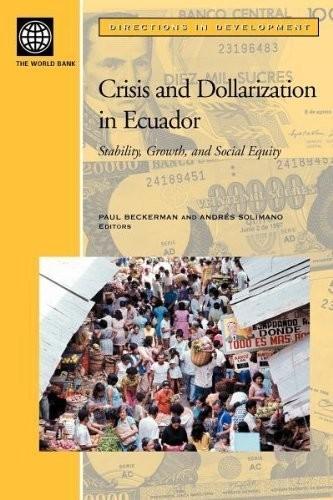
Crisis and Dollarization in Ecuador: Stability, Growth, and Social Equity
by
Paul Ely Beckerman
and
Andrés Solimano
Published 30 Apr 2002
Although exchange-rate regime harmonization among its member countries is not practiced in the CAN, and monetary integration is still not on their agenda, the fact is that Ecuador’s new monetary system adds to the already large variety of exchange-regimes in the Andean region. At present (mid-2002) we have floating exchange-rate regimes in Peru, Colombia, and República Bolivariana de Venezuela, a crawling peg system in Bolivia, and a foreign-currency regime in Ecuador. The fact that two trade partners (and neighboring countries) of Ecuador—Peru and Colombia—are in a floating exchange-rate regime while Ecuador is dollarized creates the potential for Ecuador to lose regional competitiveness, should these countries depreciate their currencies, an option unavailable to Ecuador.
…
Under León Febres Cordero’s liberalizing government, which took office in August 1984, real GDP rebounded, growing 4.2 and 4.3 percent in 1984 and 1985, respectively, while inflation moderated to around 20 percent. In 1986, however, at the same time it began liberalizing commercial-bank interest rates, the government began a floating exchange rate for privatesector imports. Oil-export prices fell by more than half that year, how- LONGER-TERM ORIGINS OF ECUADOR’S “PREDOLLARIZATION” CRISIS 29 Table 2.1 Ecuador: Governments, 1979–2001 Period President Aug 79–May 81 May 81–Aug 84 Jaime Roldós Osvaldo Hurtado Aug 84–Aug 88 Aug 88–Aug 92 Aug 92–Aug 96 Aug 96–Feb 97 León Febres Cordero Rodrigo Borja Sixto Durán Ballén Abdalá Bucaram Feb 97–Aug 98 Fabián Alarcón Aug 98–Jan 00 Jan 00– Jamil Mahuad Gustavo Noboa Acceded to office through Election Vice President, assumed office Election Election Election Designation by Congress Election Vice President, assumed office Departure from office Accidental death Term concluded Term concluded Term concluded Term concluded Removed by Congress Term concluded Resigned ever, and in January 1987 the government suspended debt service to commercial banks.
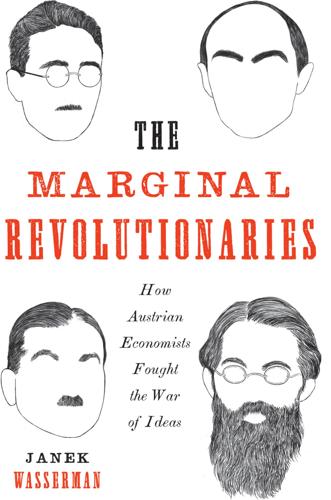
The Marginal Revolutionaries: How Austrian Economists Fought the War of Ideas
by
Janek Wasserman
Published 23 Sep 2019
Moving beyond the idea of limiting an already-existing state, neoliberals like the Austrians imagined how to create a state that protected economic freedom from government planners, international governing institutions, and democratic polities alike.20 The Austrians thus helped build postwar neoliberalism, which, in the name of freedom, prioritized the creation of a market-based society sustained by a strong state, the rule of law, and limited democratic involvement. They also contributed to the formation of a number of transnational epistemic communities that advocated trade liberalization, floating exchange rates, state deregulation, and privatization. Austrians played instrumental roles in these communities by persuading institutional actors, state and nonstate, to follow their prescriptions in times of uncertainty and crisis. Through GATT, the Bellagio Group, the RAND Corporation, and others, Haberler, Machlup, and Morgenstern proved adept at behind-the-scenes policy interventions that shaped economic liberalization and Cold War reasoning in the 1960s and 1970s.
…
I can assure you I miss the presence of you [at the Group of Thirty, or G-30].”71 The G-30, a powerful consulting group formed in 1978 to address problems in the global economy, evolved out of a series of conferences on the international monetary system that “the Quartet” had orchestrated in the early 1960s. Over twenty-seven meetings, Machlup and his colleagues reshaped the Bretton Woods landscape, providing the intellectual foundation for the shift from the postwar gold exchange standard to floating exchange rates and financial liberalization. In coordinating elite networks of academics, government officials, and financial leaders, the Machlup Group proved as significant to the neoliberal order as Hayek and the MPS or Haberler and GATT.72 By the time Machlup convened the first conference of scholars at the RF-owned Villa Serbelloni on Lake Como in Bellagio, Italy, in 1963, the Bretton Woods monetary system faced mounting problems.
…
Machlup served on the Group of Thirty as its intellectual lodestar until his retirement.76 Economic experts acknowledged the significance of the Bellagio Group at the time, yet they disagreed about its aims and underestimated its lasting effects. In 1965, Machlup’s friend Herbert Furth criticized it for its lack of clear prescriptions. Milton Friedman, an early advocate of floating exchange rates, also disapproved of the lack of policy direction. However, the Bellagio Group was the main site of international monetary discussions in the 1960s and 1970s, and its members transformed the terms of debate. They helped bring about the end of the Bretton Woods system by proposing viable alternative monetary regimes, including a floating currency system, which replaced the gold exchange standard after the United States went off gold in 1971.
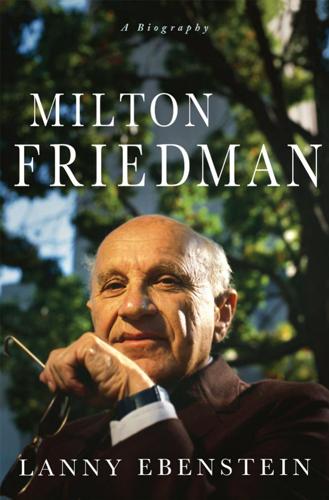
Milton Friedman: A Biography
by
Lanny Ebenstein
Published 23 Jan 2007
Yet few industries rely so heavily on special government favors.6 Changes in monetary growth affect the economy only slowly—it may be six or twelve or eighteen months or even more before their effects are manifest.7 Inflation is always and everywhere a monetary phenomenon.8 From the 1940s to 2006, Friedman put forward a bevy of public policy proposals, many of which have at least to some extent been implemented or considered—this can be said of very few individuals. Daniel Patrick Moynihan remarked in 1971: “If you were to ask me to name the most creative social-political thinker of our age I would not hesitate to say Milton Friedman.”9 Starting in the 1940s, Friedman put forward the idea of floating exchange rates, which were implemented in the United States in the early 1970s. In the 1950s, he developed his idea of a fixed expansion of the money supply each year. Although this policy proposal had only mixed success, his general emphasis that the way to limit inflation is to limit increases in the supply of money became the accepted opinion in the late 1970s to early 1980s.
…
After the 1968 election but before Nixon was inaugurated, Friedman met with him in New York, giving the president-elect a memorandum recommending flexible exchange rates, which Friedman had long advocated. He wrote in Newsweek the year before: “We should set the dollar free and let its price in terms of other currencies be determined by private dealings. Such a system of floating exchange rates would eliminate the balance of payments problem... and informal exchange controls, and [would allow the ability] to move unilaterally toward freer trade.”2 A negative balance of payments, or trade deficit, was much more of a problem in a system of fixed exchange rates than in one of market-determined exchange rates, because under the latter system, there is no loss of national government financial reserves when there is a trade deficit in order to maintain a currency’s value.
…
That would be much higher because Italy has been accumulating so much debt. In the past, Italy has inflated away its debt. The virtue of the euro is that Italy can’t do it alone. A tight ECB policy wouldn’t permit that to happen again. In this sense, the euro is good for Europe. But only if there is flexibility all around. The problem is that, in a world of floating exchange rates, as Italy was before the euro, if one country is subjected to a shock which requires it to cut wages, it cannot do so with a modern kind of control and regulation system. It is much easier to do it by letting the exchange rate change. Only one price has to change, instead of many. But now, in the euro, that option is taken away.
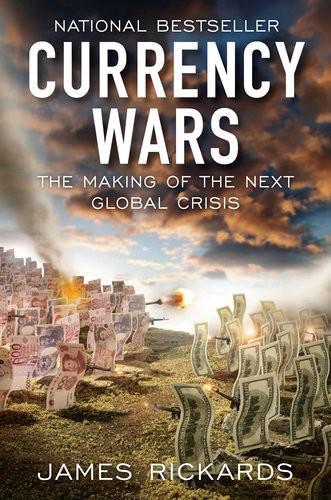
Currency Wars: The Making of the Next Gobal Crisis
by
James Rickards
Published 10 Nov 2011
Finally, in 1973, the IMF declared the Bretton Woods system dead, officially ended the role of gold in international finance and left currency values to fluctuate against one another at whatever level governments or the markets desired. One currency era had ended and another had now begun, but the currency war was far from over. The age of floating exchange rates, beginning in 1973, combined with the demise of the dollar link to gold put a temporary end to the devaluation dramas that had occupied international monetary affairs since the 1920s. No longer would central bankers and finance ministries anguish over breaking a parity or abandoning gold.
…
In the 1950s and 1960s, it had provided bridge loans to countries suffering temporary balance of payments difficulties to allow them to maintain their currency peg to the dollar. In the 1980s and 1990s it had assisted developing economies suffering foreign exchange crises by providing finance conditioned upon austerity measures designed to protect foreign bankers and bondholders. Yet with the elimination of gold, the rise of floating exchange rates and the piling up of huge surpluses by developing countries, the IMF entered the twenty-first century with no discernable mission. Suddenly the G20 breathed new life into the IMF by positioning it as a kind of Bank of the G20 or proto–world central bank. Its ambitious leader at the time, Dominique Strauss-Kahn, could not have been more pleased, and he eagerly set about as the global referee for whatever guidelines the G20 might set.
…
bank regulation Board of Governors on classical gold standard in creating a new gold-backed system creation of current assets of Dodd-Frank reform legislation of 2010 and and dollar price stability gold and money supply during 1930s gold and money supply in 2011 handling of its own balance sheet and IMF IOUs to the Treasury as lender of last resort and management of unemployment mandates of mercantilism compared to and monetarism quantitative easing program Financial Crisis Inquiry Commission financial economics financial war game financial warfare strategy First National Bank of New York First National City Bank of New York fixed exchange rates floating exchange rates, 1970s Fort Knox, Kentucky Foundations of Economic Analysis (Samuelson) fractal dimension framing, in economics France currency collapse in 1920s and European sovereign debt crisis of 2010 gold reserves and gold standard invasion of Germany’s Ruhr Valley Paris Peace Conference of 1919 Treaty of Versailles and Tripartite Agreement of 1936 withdrawal from London Gold Pool free-floating currency free trade barriers Friedman, Milton Gallarotti, Giulio M.
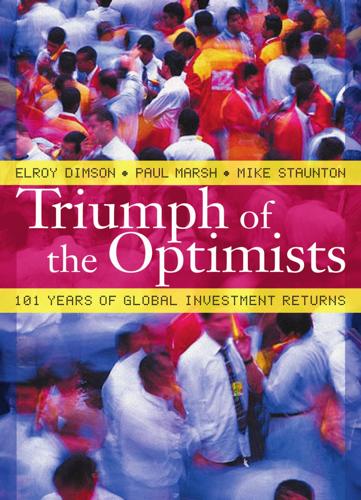
Triumph of the Optimists: 101 Years of Global Investment Returns
by
Elroy Dimson
,
Paul Marsh
and
Mike Staunton
Published 3 Feb 2002
After some last-ditch attempts to set new fixed rates, the world turned in 1973 to the floating exchange rate system that persists to the present day. There were thus four exchange rate regimes over the twentieth century. During 1900–14 the gold standard was in effect. After that, apart from a brief return to the Gold Exchange Standard, the period 1914–45 contained the two world wars. The Bretton Woods fixed-rate system then operated from 1946–71. Finally, the period since has been one of floating exchange rates. Currencies went through an adjustment to the Bretton Woods system until 1949. It is therefore helpful to start by dividing our period into two: 1900–49 and 1950–2000.
…
Given the potential measurement error in inflation indexes, and the fact that real exchange rates involve a ratio of two different price index series, it is all the more striking that, with the exception of South Africa, all real exchange rates appreciate or depreciate annually by no more than a fraction of one percentage point. 7.5 Volatility of exchange rates At the time floating exchange rates were adopted in 1973, it was asserted that exchange rates would become free to adjust to international differences in inflation. Countries with price levels that were rising fast would see their currencies depreciate, and countries with relatively low price inflation would see their currencies appreciate.
…
Dr Staunton holds a BSc from Manchester University, and a MBA and PhD in Finance from London Business School. 331 Index ABN AMRO, xi, xii, 4, 44, 78, 126, 128, 135, 136, 228, 299 ABN AMRO/LBS Indexes, 228, 299–305 Active management, 144, 205, 207–8 Adams, K., 38 Agarwal, V., 35 Ahearne, A.G., 120, 121 Akiyama, R., 269 Aleotti, A., 264 Alternative Investment Market (AIM), 23, 160 American Stock Exchange (Amex), 11, 23, 46, 158 Amsterdam, 19 Annaert, J., xii, 234 Anomalies, 7, 8, 9, 124–38, 139–48, 153, 205, 207, 208, 209 see also seasonality, size effect, value-growth effect Arbulu, P., 249 Archy, the cockroach, 224 Argentina, 20, 21, 84 Arithmetic mean, 54–5, 181–5, 214–5 Arnott, R.D., 156, 192, 204 Asset allocation, 9, 205, 207, 217 Asset class comparisons, 51–3, 59–61 Australia, 229–33, see also cross-country comparisons Austria, xi, 15, 20, 67 Austria-Hungary, 21–2 Bachmann, J.W., xii Baggaley, R., xii Ball, R., 229 Banz, R., 124, 125, 126, 127, 130, 131, 133 Barber, B., 207 Barclays Capital, 38, 174 Barsky, J., 161 Basu, S., 146 Belgium, 234–8 see also cross-country comparisons Benavides, F.G., 284 Benchmarks, 7, 31, 34–44, 55, 63, 73, 74, 105, 163, 169, 187, 206, 207, 208, 215, 217 see also indexes Berman, D., xi Bernstein, P.L., xi, 189, 192, 195, 199, 204 Beta, 180, 214, 215 Bianchi, B., 264 Bias, 34–36 see also easy data bias, look-ahead bias, success bias, survivorship bias Bill markets, 19, 68 Bills, 68–73 Biscaini Cotula, A.M., 264 Bittlingmayer, G., xii, 254 Black, F., 141, 208 Blake, C.R., 35 Bodie, Z., 84, 185, 217 Bond markets, 11, 14–9, 45–50, 53, 62, 100–4, 107–11, 172, 205, 221 see also bonds Bond ratings, 87–9 Bond returns, 51–3, 59– 61, 74–90 Bond yield, 35, 75, 76, 81, 207, 284, 289 Bond, T., 38 Bonds, 74–90 see also bond markets, bond ratings, bond returns, bond yield, corporate bonds, default risk, inflationindexed bonds, maturity premium, term premium Book-to-market ratio, 139–43, 148, 216, 218 Book value, 139–43, 148, 216, 218 Borchardt, K., 66 333 Boskin, M.J., 43 Bouman, S., 138 Bowers, J., xii, 229 Bowley, A.L., 259 BP, 28, 31 Brav, A., 188 Brazil, 12, 15, 20, 21, 84 Brealey, R.A., xi, 185, 211, 218, 239 Breeden, D., 180 Breen, W., 146 Brennan, M.J., 35 Bretton Woods, 93, 94, 99, 103, 115, 116 British economy, 48 British Empire, 21, 48, 114 Brown, M., xi Brown, P., 229 Brown, R.H., xi, 85 Brown, S., 35, 41 Bruner, R.F., 194, 216 Buckley, K.A.H., 239 Buelens, F., xii, 234 Buy-and-hold strategies, 207–8 see also indexation Buybacks, see repurchases Calendar anomalies, 8, 135–8, 208 Campbell, J.Y., 57, 84, 118 Canada, 239–43 see also cross-country comparisons Capaul, C., 145 Capital Asset Pricing Model (CAPM), 179–81, 215 Capital gains, 5, 35, 39, 85, 140, 149–51, 159, 161, 171, 234, 279, 301 Capitalization weighting, 13, 38–40, 128, 311 Carhart, M.M., 35 Carpenter, J.N., 35 Center for Research in Securities Prices (CRSP), 30, 38, 39, 45, 46, 125, 126, 133, 136, 140, 158, 187, 306 334 Chan, L., 145 Chen, P., 190, 192 Chicago, 20, 38, 45, 306 Chile, 20, 21 China, xi, 12, 13, 15, 41, 222 Christiansen, J., 244 Chung, S., 211 Ciocca, P., 264 Claus, J., 188 Closet index funds, 208 Cold War, 22, 189, 210, 223, 224 Columbia, 20 Common-currency returns, 17, 40, 100–3, 105 Conant, C.A., 122 Concentration, 5, 11, 28– 33, 223, 300 Constant growth model, 155, 162, 177–9, 189–92 see also dividend growth Cooper, I., xi, 121, 122, 184 Copenhagen, 244 Cornell, B., 181 Corporate bonds, 6, 14, 16, 87–90 Corporate financing, 10, 217, 219 Corporate investment, 211–7 Correlation, 13, 86, 87, 106, 107–8, 114–17, 128, 143, 153, 154, 156, 157, 161, 173, 180 Cost of capital, 3, 9, 18, 149, 193, 198, 211–9 Cost of debt, 212, 218 Cost of equity, 9, 163, 183, 211–9 Coverage, 11–28, 34–40, 43, 44, 128, 133, 158, 222, 264 Cowles, A., 23, 39, 46 Crash of October, 1987, 47, 58, 117 Credit Suisse First Boston (CSFB), 174 Triumph of the Optimists: 101 Years of Global Investment Returns Cross-holdings, 12, 13, 39 Cross-country comparisons, bills, 59–61, 71–2 bonds, 51–3, 59–61, 79– 80, 100–3, 105–8 bond markets, 14–7 common-currency returns, 100–3 concentration, 28–32 correlation, 114–7 dividend growth, 154–7 dividend yield, 157–8 easy data bias, 42–3 equities, 50–3, 59–61, 100–3, 105–8 equity markets, 11–4 exchange rates, 91–108 gains from international diversification, 111– 4, 117–20 home bias, 120–2 inflation, 65–8 interest rates, 71–2 maturity premia, 82–4 risk premia, 166–8, 171– 3, 183–5, 188–90, 201–4 sector weightings, 26–8 size effect, 129–35 value-growth effect, 145–8 Currency, 3, 91–104, 105– 8, 311 see also common-currency returns, currency risk, exchange rates Currency risk, 17, 98–9, 105–8 Currency volatility, see currency risk Cuyvers, L., 234 Czech Republic, 20, 21 Darlington, K., xi Das, S., 117 Datastream, 27, 234, 244, 259, 289, 294 Davis, J., 142 Day-of-the-week effect, 135 de Ceuster, J., 234 De Long, B., 161 de Ridder, A., 289 de Zoete, 36, 37, 38 Default, 87–9 Default risk, 68, 74, 87–90, 163, 169, 214, 219 Deflation, 6, 64, 68, 70, 71, 73, 78, 221 Denmark, 244–8 see also cross-country comparisons Devos, G., 234 Dimson, E., iii, v, xi, xii, 27, 35, 126, 129, 130, 138, 184, 193, 299 Disappearing dividends, 149, 153, 158–61 Distress, financial, 87, 141, 147, 218, 219 Diversification, 6, 7, 20, 45, 56–8, 61, 105, 108, 109, 111, 114–23, 168, 180, 188, 189, 194, 201 Dividends, 8, 10, 35, 38, 46, 47, 49, 51, 124, 126, 139–43, 149–62, 174, 177–9, 190–3, 211, 234, 239, 244, 274, 284, 289, 294, 300, 306 see also disappearing dividends, dividend growth, dividend policy, dividend yield Dividend growth, 8, 9, 124, 134, 149, 152–7, 161, 162, 178, 190–3, 214 Dividend growth and GDP, 155–7 Dividend payout, 157–61 Dividend policy, 158–61, 216–9 Dividend yield, 8, 38, 39, 139–48, 149–51, 155, 157–8, 162, 177, 190–4, 218, 234, 259, 279, 284, 294, 300 Dodd, D.L., 139 Dow Jones, 39, 47, 58, 176–9 Dulberger, E.R., 43 Eades, K.M., 194, 216 Index Early stock markets, 19– 23 Easy-data bias, 6, 34, 40– 4, 174, 221, 222 Eatwell, J., 48 Egypt, 20, 21 Eichholtz, P., 274 Elias, D., 176 Elton, E.J., 35 Equity premium puzzle, 180, 202 Equity returns, 4, 9, 37, 38, 39, 42, 43, 44, 45–62, 105–23, 124–38, 138–48, 163–75, 176–94, 195– 204, 206, 220–4 Equity risk premium, see risk premium Ericsson, 29 Euro, 15 Eurobonds, 16–7 Eurozone, 15, 17, 99, 213 Excess returns, 82, 112, 114, 165 Exchange rate risk, 98–9, 105–8 Exchange rate volatility, 98–9, 105–8 Exchange rates, xii, 7, 11, 36, 91–104, 219, 220, 227, 254 see also commoncurrency returns, exchange rate volatility, real exchange rates Expectations, 4, 54, 77, 79, 81, 85, 87, 89, 90, 158, 161, 166, 167, 169, 171, 176–94, 201, 202, 210, 212, 223, 224 Fama, E.F., 70, 141, 142, 143, 146, 147, 155, 158, 159, 160, 162, 192, 218 Fat tails, 56, 204 Financial distress, 87, 218, 219 Financial management, 211–9 Financial reporting, 218–9 Financial Times (FT), 23, 24, 36, 37, 223, 299 335 Financial Times-Stock Exchange (FTSE), xi, 28, 38, 115, 133, 134, 143, 299 Finland, 12, 20, 28, 29, 121 Finn, F.J., 229 Firer, C., xii, 42, 279 First World War, 37, 44, 47, 69, 75, 76, 93, 94, 116, 122, 123, 153 Fisher, I., 38, 69, 70 Fisher, L., 38 Fisher effect, 69–70 Floating exchange rates, 94, 98 Foreign bonds, 16–7 Foidl, N., 254 France, 249–53 see also cross-country comparisons Frankfurt, 19 Fraser, P., 188 Free float, 13, 39 French, K.R., xi, xii, 140, 141, 142, 143, 146, 155, 158, 159, 160, 162, 192, 218 Frennberg, P., xii, 289 FT Index, 36, 37 Fujino, S., 269 Function of bond markets, 18–9 Function of stock markets, 18–9 Fund managment, 9, 144, 205–9 Gallais-Hamonno, G., xii, 249 GDP, see gross domestic product Gemis, M., 234 General Electric Corp, 18, 23, 28, 32 Geometric mean, 38, 51, 59–61, 71, 82, 89, 92, 110, 152, 154, 163–75, 181–94, 197, 198, 202, 203, 214, 219, 223 Germany, 254–8 see also cross-country comparisons Giammarino, R., 239 Gielen, G., 254 Glassman, J.

The Making of Global Capitalism
by
Leo Panitch
and
Sam Gindin
Published 8 Oct 2012
What was essentially happening was a transition from the fixed exchange rates designed to foster capitalist reconstruction under the Marshall Plan and the European Payments Union, to the establishment of the legal, institutional and market infrastructure that would sustain capitalist globalization amid floating exchange rates anchored by a US dollar– Treasury bill standard. As President Ford’s Treasury secretary, William Simon, put it when the IMF finally ratified the new monetary order (five years after the fact): This is of major interest to the United States, not only because gold is an inherently unstable basis for the monetary system but because it is inevitably linked to a fixed exchange rate system.
…
As Paul Volcker noted, “traders and investors were reminded that the United States, after all, was still a relative bastion of strength and stability and a safe haven in troubled times.”46 The lead taken by the Treasury and Fed in preventing bank failures during this period from turning into an international financial conflagration also goes very far to explaining why, despite all the initial fears that the move to floating exchange rates would undermine the financing of world trade, an internal Treasury memorandum was able to note in 1976 that “businessmen have found that the difficulties of operating under floating rates were not as great as many of them had anticipated.”47 The pragmatic, tentative, and uncertain steps the US had taken in approaching the decision to go off gold were replicated in successive rounds of G10 and IMF meetings to attempt to revive a fixed exchange rate system.
…
When Volcker proposed during the IMF’s Interim Committee negotiations in 1972 that an “indicator system” be adopted, “whereby a country’s deviation from an established norm of international reserves would trigger application of ‘graduated pressures’ on the offending country to impel it to take the necessary steps towards adjustment, European participants objected to the automaticity implied in the plan . . . [They] were unwilling to accept automatic interference in their own policies.”48 Thus, when in early 1973 the US prevailed on the Japanese and European states to embrace a system of floating exchange rates, this decision, as Volcker put it, “was not taken out of any general conviction that it was a preferred system. It was simply a last resort when, by general assent, the effort to maintain par values or central rates seemed too difficult in the face of speculative movements of capital across the world’s exchanges.”49 Just as Volcker also explains the US imposition of an import surcharge in August 1971 as a bargaining counter to secure currency revaluation and agricultural tariff reductions from the Europeans (a tactic that would again and again be deployed as part and parcel of the US push for “free trade”),50 so were the Europeans’ calls for capital controls mainly tactical.
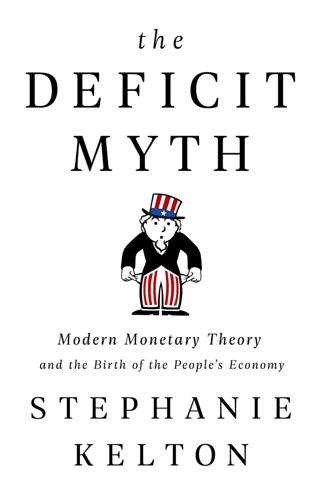
The Deficit Myth: Modern Monetary Theory and the Birth of the People's Economy
by
Stephanie Kelton
Published 8 Jun 2020
Just as the Greek government was incapable of preventing a spike in borrowing costs, countries that fix their exchange rates sacrifice control of their interest rates. From an MMT perspective, “this explains the very high interest rates paid by governments with perceived default risk in fixed exchange rate regimes, in contrast to the ease a nation such as Japan has in keeping rates at 0 in a floating exchange rate regime, despite deficits that would undermine a fixed exchange rate regime.”36 The lesson is simple. Currency regimes matter. The simple crowding-out story was built for a world that no longer exists. Yet conventional economic theory treats the sequence of falling dominoes as an inevitable consequence of deficit spending.
…
It is best to imagine monetary sovereignty as a continuum with some nations having a very high degree of sovereignty and others having less, little, or practically none. Countries with the highest degree of maximum sovereignty are those that spend, tax, and borrow in their own nonconvertible (floating exchange rate) currencies. Nonconvertible means that the state does not promise to convert the domestic currency into gold or foreign currency at a fixed price. Under this definition, the US, the UK, Japan, Australia, Canada, and even China are monetary sovereigns. In contrast, countries like Ecuador and Panama lack monetary sovereignty because their monetary systems are designed exclusively around the US dollar, a currency their governments cannot issue.
…
Randall Wray, “Deficits, Inflation, and Monetary Policy,” Journal of Post Keynesian Economics 19, no. 4 (Summer 1997), 543. 31. The yield curve is a curve (or graph) that shows the interest rates on different debt instruments across a range of maturities. 32. Recall from the Introduction that we have defined monetary sovereignty to include countries that tax, borrow, and spend in a nontethered, that is, floating exchange rate currency that can only be issued by the government or its fiscal agents. 33. Today, it is standard operating procedure to coordinate deficit spending with bond sales. It doesn’t have to be that way. Congress could always rewrite its operating procedures to change this practice, especially now that the Federal Reserve no longer needs access to government bonds to hit its short-term interest rate target.
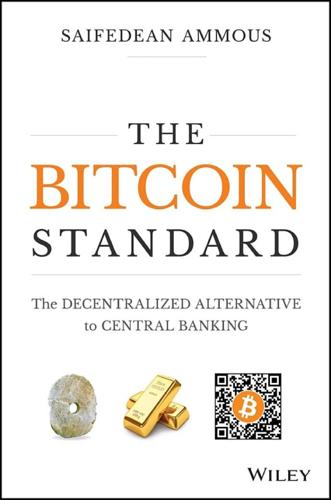
The Bitcoin Standard: The Decentralized Alternative to Central Banking
by
Saifedean Ammous
Published 23 Mar 2018
There can be no rational ground for determining the outcome of these negotiations in international organizations, as each country's government attempts to pursue its own special groups' interest and will do whatever it takes to do just that. After 1971, the world predominantly moved to having an independent monetary policy and free capital flows, but floating exchange rates between currencies. This arrangement has the advantage of allowing Keynesian economists to play with their favorite tools for “managing” economies while also keeping international financial institutions and large capital owners happy. It is also a huge boon for large financial institutions which have generated a foreign exchange market worth trillions of dollars a day, where currencies and their futures are trading.
…
Firms that have spent decades working on a competitive advantage could see it wiped out in 15 minutes of unpredictable foreign exchange volatility. This usually gets blamed on free trade, and economists and politicians likewise will use it as an excuse for implementing popular but destructive protectionist trade policies. With free capital flows and free trade built on a shaky foundation of floating exchange rate quicksand, a much higher percentage of the country's businesses and professionals need to concern themselves with the movements of the currency. Every business needs to dedicate resources and manpower toward studying an issue of extreme importance over which they have no control. More and more people work in speculating on the actions of central banks, national governments, and currency movement.
…
Unfortunately, however, the people in charge of the current monetary system have a vested interest in it continuing, and have thus preferred to try to find ways to manage it, and to find ever‐more‐creative ways of vilifying and dismissing the gold standard. This is entirely understandable given their jobs depend on a government having access to a printing press to reward them. The combination of floating exchange rates and Keynesian ideology has given our world the entirely modern phenomenon of currency wars: because Keynesian analysis says that increasing exports leads to an increase in GDP, and GDP is the holy grail of economic well‐being, it thus follows, in the mind of Keynesians, that anything that boosts exports is good.

An Extraordinary Time: The End of the Postwar Boom and the Return of the Ordinary Economy
by
Marc Levinson
Published 31 Jul 2016
Yoshimitsu Imuta, “Transition to a Floating Exchange Rate,” in Mikiyo Sumiya, ed., A History of Japanese Trade and Industry Policy (Oxford: Oxford University Press, 2000), 528; Sueo Sekiguchi, “Japan: A Plethora of Programs,” in Hugh Patrick, ed., Pacific Basin Industries in Distress (New York: Columbia University Press, 1990), 437. 15. William Diebold Jr., Industrial Policy as an International Issue (New York: McGraw-Hill, 1980), 162; Japan Automobile Manufacturers Association, Motor Vehicle Statistics of Japan 2014, 16, 32. 16. Imuta, “Transition to a Floating Exchange Rate,” 527. Data on Japanese R&D spending are from Steven Englander and Axel Mittelstädt, “Total Factor Productivity: Macroeconomic and Structural Aspects of the Slowdown,” OECD Economic Survey 10 (1988): 36. 17.
…
If exchange rates moved the wrong way, the loan repayments could be worth less than the banks’ dollar obligations to their depositors. And should an oil sheikhdom suddenly demand its dollars back, a bank that had used them to make five-year loans in British pounds or Dutch guilders could find itself desperate for cash. This was a frightening prospect, for in the new world of global finance and floating exchange rates, banks were more intimately connected than ever before. They not only lent one another money and joined forces to make loans, but also traded currencies to meet their customers’ needs. In many cases, those trades involved betting on an exchange rate at some future date. For example, a Spanish textile company expecting to receive one million West German deutsche marks in six months could lock in the value of that sum in Spanish pesetas, with its bank assuming the risk if the exchange rate on that date turned out to be different from what it anticipated.
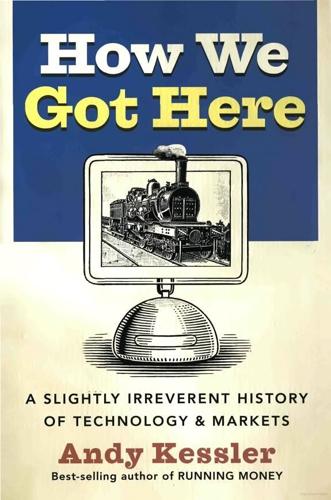
How We Got Here: A Slightly Irreverent History of Technology and Markets
by
Andy Kessler
Published 13 Jun 2005
If wages had been held relatively constant and the exchange rate of money into gold allowed to float (like today), then workers would not have been as disaffected. In an uncompetitive country, instead of wages going down, the value of the currency would drop, import prices rise, and the blame laid on the foreigners for increasing prices. The flip side would have worked well for England. With a rising currency from a floating exchange rate, products like textiles would have gotten cheaper in both England and foreign markets, but not quite as cheap. So what? The market would still grow. National wealth would be created from a rising currency and money supply could grow at its natural Real Bills rate, rather than be affected by too much gold.
…
A guy named Churchill put England back on the gold in 1925, at the pre-War exchange rate. Heck, it was still Isaac Newton’s rate. Big mistake. It overpriced the pound, which got dumped, and gold quickly flowed out of the country. Banks had 166 HOW WE GOT HERE restricted money supply and England went into a nasty recession, a loud advertisement for floating exchange rates. By 1928, the rest of the world went back on the gold standard, but not for long. Following the 1929 stock market crash, 1930 saw the introduction of the protectionist Corn Law-esque “Smoot-Hawley” tariffs (some say the market predicted the tariffs, which were debated in 1929.) Trade dried up as most other countries put up protective trade tariffs and increased taxes to make up for lost duties.
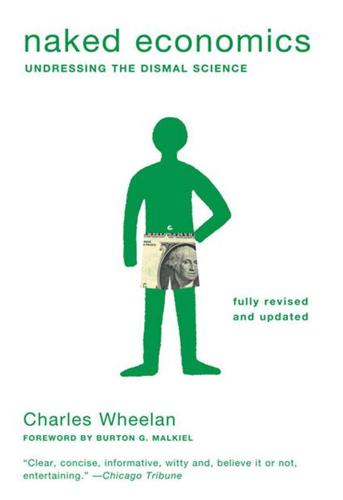
Naked Economics: Undressing the Dismal Science (Fully Revised and Updated)
by
Charles Wheelan
Published 18 Apr 2010
Foreign governments could redeem gold for dollars on Friday—but not on Monday. Since then, the United States (and all other industrialized nations) have operated with “fiat money,” which is a fancy way of saying that those dollars are just paper. Floating exchange rates. The gold standard fixes currencies against one another; floating rates allow them to fluctuate as economic conditions dictate, even minute by minute. Most developed economies have floating exchange rates; currencies are traded on foreign exchange markets, just like a stock exchange or eBay. At any given time, the exchange rate between the dollar and yen reflects the price at which parties are willing to voluntarily trade one for the other—just like the market price of anything else.
…
At any given time, the exchange rate between the dollar and yen reflects the price at which parties are willing to voluntarily trade one for the other—just like the market price of anything else. When Toyota makes loads of dollars selling cars in the United States, they trade them for yen with some party that is looking to do the opposite. (Or Toyota can use the dollars to pay American workers, make investments inside the United States, or buy American inputs.) With floating exchange rates, governments have no obligation to maintain a certain value of their currency, as they do under the gold standard. The primary drawback of this system is that currency fluctuations create an added layer of uncertainty for firms doing international business. Ford may make huge profits in Europe only to lose money in the foreign exchange markets when it tries to bring the euros back home.

Broken Markets: A User's Guide to the Post-Finance Economy
by
Kevin Mellyn
Published 18 Jun 2012
The Bretton Woods deal included a gold window, where dollar claims could be converted, but the United States lacked the gold. So, over a weekend, with no consultations, the United States blew up the Bretton Woods system, closing the gold window. This kicked off the Great Inflation, and it ushered in an era of floating exchange rates that we are still living with today. OPEC, an attempt by oil producers to use cartel tactics to raise the price of their commodity (priced in dollars) in nominal terms to make up for the fall in the real value of the dollar, was a key side effect. The OPEC price hikes stuck, despite the fact that many countries could not afford them.
…
Once interest rates were deregulated, how banks funded themselves in the market and, especially, what degree of mismatch between loans and funding they were willing to risk, became an important way of making higher profits. Treasury became a “profit center,” not a utility function, in the largest banks. Trading income was also scarce before the collapse of Bretton Woods created a world of floating exchange rates. The value of any currency vs. any other currency became a second-to-second market determination. Interbank trading of foreign exchange became one of the largest markets in the world, and remains such, with trillions turning over every day. Again, a new profit center for the largest banks was born.
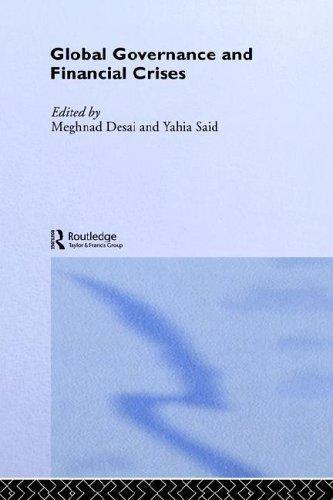
Global Governance and Financial Crises
by
Meghnad Desai
and
Yahia Said
Published 12 Nov 2003
The fierce competition between banks, in search of high volumes of international credit to make up for lost domestic credit with the growth slowdown in OECD countries, had made the supply of funds highly elastic to demand changes. Subsequently the recurrent problem of the scarcity of reserves, which had motivated the creation of the SDR, was no longer relevant. Moreover, as far as adjustment was concerned, floating exchange rates had resolved in principle the conflict between internal and external balance and jettisoned the need of policy cooperation. The monetarist counterrevolution was at high tide at the time. It offered an ideological background to the rebound of monetary nationalism according to which “each country should put its own house in order.”
…
International capital markets fed the world with a fast-increasing amount of reserves, but they proved unable to regulate the distribution of borrowed reserves among countries. Sovereign indebtedness was not properly assessed, entailing abrupt disruptions between excessive tolerance to borrowing and acute credit crunches. Besides, equilibrium exchange rates were elusive. Huge gyrations of floating exchange rates and foreign exchange crises, which devastated pegged regimes, convinced most governments that exchange rates were too important to be left to the markets. But individual governments were powerless against speculative attacks while reduced to their own means. The malfunctioning of the market-led system in both exchange rate adjustment and solvency control gave content to the Fund’s missions restated in Jamaica.
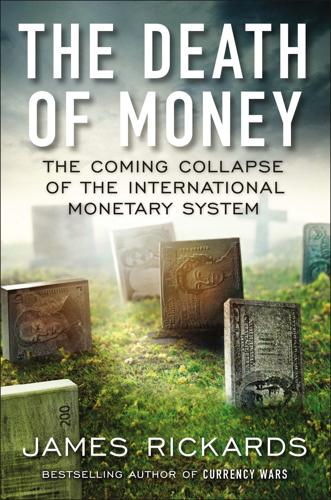
The Death of Money: The Coming Collapse of the International Monetary System
by
James Rickards
Published 7 Apr 2014
The IMF’s mission has repeatedly morphed over the decades since Bretton Woods. In the 1950s and 1960s, it was the caretaker of the fixed-exchange-rate gold standard and a swing lender to countries experiencing balance-of-payments difficulties. In the 1970s, it was a forum for the transition from the gold standard to floating exchange rates, engaging in massive sales of gold at U.S. insistence to help suppress the price. In the 1980s and 1990s, the IMF was like a doctor who made house calls, dispensing bad medicine in the form of incompetent advice to emerging economies. This role ended abruptly with blood in the streets of Jakarta and Seoul and scores killed as a result of the IMF’s mishandling of the 1997–98 global financial crisis.
…
The dollar was devalued again on February 12, 1973, by an additional 10 percent so that gold’s new official price was $42.22 per ounce; this is still gold’s official price today for certain central banks, for the U.S. Treasury, and for IMF accounting purposes, although it bears no relationship to the much higher market price. During this period, 1971–73, the international monetary system moved haltingly toward a floating-exchange-rate regime, which still prevails today. In 1972 the IMF convened the Committee of Twenty, C-20, consisting of the twenty member countries represented on its executive board, to consider the reform of the international monetary system. The C-20 issued a report in June 1974, the “Outline of Reform, that provided guidelines for the new floating-rate system and recommended that the SDR be converted from a gold-backed reserve asset to one referencing a basket of paper currencies.
…
Treasury’s view of, 60–62 virtual targets, 46 Wall Street’s cybercapabilities, 54 war games, 58–59 fine art, as investment, 299 fiscal dominance, 287–88 Fiscal Stability Treaty (EU), 135–36 Fisher, Irving, 168, 246–47 Fisker, 123 Fitzgerald, F. Scott, 252 flash crash, 63, 270, 296–97 floating-exchange-rate regime, 235 Fonda, Jane, 1 food price inflation, 3 food stamps, 246 Ford, Gerald, 271–72 forward guidance, 83, 86, 185–88 forwards, gold, 275, 285–86 France, 235, 236 Franco-Prussian War, 115 Frank, Barney, 204, 205 Frankenreich, 112, 113–14 Freakonomics (Levitt and Dubner), 32–33 Freddie Mac, 248 Friedman, Milton, 84, 168, 263 Friedman, Tom, 256 Froman, Michael, 195, 196, 202–3 futures, gold, 275, 284–86 G7, 139, 140, 147 G9, 139–40 G20, 140, 147, 202, 203 Galloni, Alessandra, 131–32 Gang of Ten, 138, 139 Geithner, Timothy, 195, 196, 203, 244 General Electric, 255 General Theory of Employment, Interest and Money, The (Keynes), 246–47 Genoa Conference, 1922, 221–22 Gensler, Gary, 195, 196 geopolitics, 12–13 Germany, 125, 127, 136–37, 281 gold repatriation by, 231–32 GIIPS (Greece, Ireland, Italy, Portugal, Spain), 140, 142–46 Glass-Steagall, repeal of, 196, 253, 296 gold, 215–42 BIS transactions, 276–78 central bank acquisition of, since 2010, 225–30 central bank manipulation of, 271–81 Charlemagne’s switch from gold to silver standard, 114 Chávez’s repatriation of, 40, 231 China’s accumulation of, 12, 61, 226–30, 282–84, 296 classical gold standard, 1870–1914, 176, 234–35 constructing new gold standard, 237–42 contract money system, role in, 169–71 contracts based on, risks associated with, 217–18 disorderly price movements, implications of, 295–96 dollar convertibility abandoned, in 1971, 1, 2, 5, 209, 220, 235, 285 dollar standard, 234–35 drop from 1980 highs, 2 forwards, 275, 285–86 futures, 275, 284–86 Germany’s repatriation of, 231–32 gold exchange standard, 221–22, 224, 234–35 gold-to-GDP ratios, 157, 279–82 Great Depression caused by gold myth, 221–24 IMF sales of, 235–36, 277 as investment portfolio recommendation, 298–99 Iranian trading of, in financial war with U.S., 55–56 lease arrangements, 275, 284 market panics caused by gold myth, 224 monetary policy, and classical gold standard, 176 monetary system, role in, 217, 220–25 as M-Subzero, 280, 283–84 nature of, 218–20 as numeraire, 219–20 price rise of, 1977 to 1980, 1 price rise of, 2006 to 2011, 3 private market demand for, 230 quantity insufficient to support world trade and finance myth, 220 repatriation of, 40, 231–34 reserves, rebalancing of, 279–84 return-to-gold-standard scenario, 293–94 as risk-free asset, 219 Russia’s accumulation of, 12, 229–30 shadow gold standard, 236 storage of, at Federal Reserve and Bank of England vaults, 230–31 swaps, 275 Switzerland’s repatriation of, 232–33 U.S. attitude to, shift in, 235, 236 Gold and Foreign Exchange Committee, 272–73 Goldberg, Jonah, 294 Gold Bloc devaluations, 222 Goldman Sachs, 32–33, 128, 139, 140, 205, 206, 262 gold-to-GDP ratios, 157, 279–82 Goodhardt, Charles, 71, 72, 87, 188 Goodhardt’s Law, 71, 87 Gotthard Base Tunnel, 123 government debt repayment, impact of deflation on, 9, 258 government program dependency, in U.S., 246 Graeber, David, 255 Grant, James, 177 Great Depression, 84, 85, 125–26, 155, 221–22, 223–24, 234, 244, 245 Greece, 128, 133–34, 142, 153, 200, 290 greed, 25 Greenspan, Alan, 76, 77, 122 gross domestic product (GDP) of China, 93, 96 components of, 84, 96 debt-to-GDP ratio, 9, 159–60, 173, 258–59, 261 of U.S., 96, 244 Gulf Cooperation Council (GCC), 12, 150, 152–57 monetary integration process and, 153–57 as quasi-currency union, 153 Hague Congress, 116 Hall, Robert, 86–87 Hamilton, Alexander, 120–21 Han Dynasty, 90 Hanke, Steve, 80 Haydn, Michael, 37 Hayek, Friedrich, 70–71, 72, 87 hedge fund covert operations, 47–51 Hemingway, Ernest, 256 Herzegovina, 136 Himes, James, 284 Holocaust, 115 Holy Roman Empire, 114, 115 Hong Ziuquan, 91 Hoover, Herbert, 85 housing market bubbles in, 75, 76–77, 248 collapse of, 2007, 248, 296 rise in, since 2009, 291 wealth effect and, 72, 73 HSBC, 227 Hu Jintao, 151–52, 202 Hunt, Lacy H., 74, 79 Hunt brothers, 217 Hyundai, 82 ImClone Systems, 25 income inequality, in China, 106 India, 12, 139, 151.
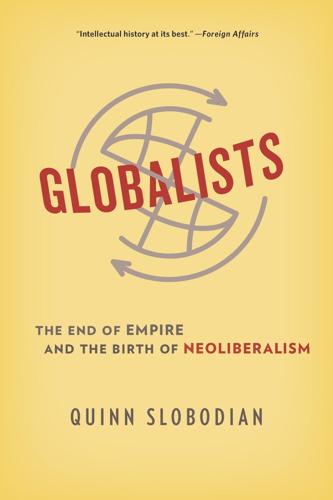
Globalists
by
Quinn Slobodian
Published 16 Mar 2018
Colloque Walter Lippmann, Compte-Rendu des séances du Colloque Walter Lippmann (August 26–30, 1938), vol. 1 of Travaux du centre international d’études pour la renovation du libéralisme (Paris: Libraire de Médicis, 1938). 35. Heilperin himself was an advocate of the return of the gold standard. See Anthony M. Endres, Great Architects of International Finance: The Bretton Woods Era (London: Routledge, 2005), 162–173. On the role of the Bellagio Group in advocating the shift to floating exchange rates, see Carol Connell, Reforming the World Monetary System: Fritz Machlup and the Bellagio Group (London: Pickering and Chatto, 2013); Matthias Schmelzer, Freiheit für Wechselkurse und Kapital: Die Ursprünge neoliberaler Währungspolitik und die Mont Pèlerin Society (Marburg: Metropolis, 2010). 36.
…
Craig VanGrasstek, The History and Future of the World Trade Organization (Geneva: World Trade Organization, 2013), 539. 123. Olivier Long, “International Trade under Threat: A Constructive Response,” The World Economy 1, no. 3 (1978): 257. 124. On the campaigns of Haberler, Fritz Machlup, Milton Friedman, and other economists for floating exchange rates, see Carol Connell, Reforming the World Monetary System: Fritz Machlup and the Bellagio Group (London: Pickering and Chatto, 2013); Robert Leeson, The Eclipse of Keynesianism: The Political Economy of the Chicago Counter-Revolution (New York: Palgrave, 2000); Matthias Schmelzer, Freiheit für Wechselkurse und Kapital: Die Ursprünge neoliberaler Währungspolitik und die Mont Pèlerin Society (Marburg: Metropolis, 2010). 125.
…
See also Federation; League of Nations; Multilevel governance; United Nations Graduate Institute of International Studies: as center of neoliberal research, 74, 77, 78, 85, 88, 92, 94, 99, 109, 113, 127–128, 130, 187, 216; faculty at, 244, 245, 278; founding of, 75 Gray, John, 105, 235 Great Depression, 58, 64, 69, 71, 87, 107, 154; causes of, 46, 55, 57, 69; graphic depiction of, 59; reflection on, 6, 17, 54, 58, 187, 208, 215 Great Society, 57, 81 Greece, 97 Greenspan, Alan, 1 Gregory, Theodore, 172 Grünberg, Carl, 75 Guardians: of the cybernetic system, 251, 274; of the economic constitution, 214, 251, 275; of the world economy, 22, 194, 275 Guatemala, 139, 193 Gueye, Djeme Momar, 197 Haberler, Gottfried, 8, 99, 147, 164, 190, 207; and business cycle research, 17, 21, 31, 49, 71; on European integration, 183, 194, 216; on floating exchange rates, 241; Haberler Method, 72–73, 75, 77, 127; Haberler Report, 183, 191, 198, 200–202, 215, 222, 285; interwar international collaboration, 30, 57, 71–77, 78, 124, 128; and Mises Circle, 48–49; on the NIEO, 221, 253; on trade theory, 41–42, 49–50 Habsburg Empire, 13, 31, 32, 68, 111; dissolution of, 21, 27, 56, 67, 69, 93, 109–110, 128; as model, 12, 94, 105–106, 112, 144, 264; successor states, 123, 147 Hague Academy of International Law, 11 Hallstein, Walter, 197 Hamilton College, 129 Hanover, 74 Hansen, Alvin, 73 Haq, Mahbub ul, 219 Hardin, Garrett, 239 Harvard Committee for Economic Research, 61 Harvard Economic Service, 62–64, 67 Harvard University, 64, 75, 164, 199, 221 Haussmann, Baron George-Eugène, 32, 47 Havana, 126, 130; ITO Charter, 128–130, 132–134, 318n64 Hayek, F.
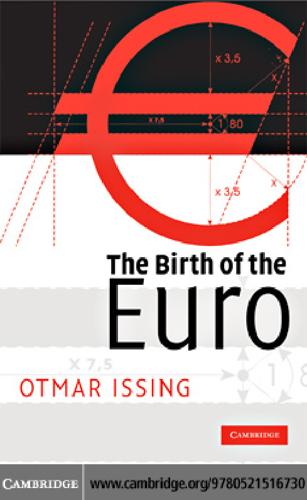
Birth of the Euro
by
Otmar Issing
Published 20 Oct 2008
Initial empirical studies do indeed confirm that the ECB need not fear comparison with other, established central banks.30 Not a bad outcome for such a young institution, one which moreover has to formulate monetary policy under inordinately more difficult conditions. Monetary policy and the exchange rate Fundamental significance of the exchange rate regime One of the most important economic policy decisions at the macro level concerns the choice of exchange rate regime. This can best be illustrated by looking at the two extremes of a fixed and a floating exchange rate respectively. If a country fixes, or pegs, the exchange rate of its currency to that of another country, this has serious consequences for monetary policy in particular. Given full convertibility, such a fixed exchange rate system can only mean that the institution responsible, generally the central bank, must intervene in the foreign exchange market whenever the market rate threatens to diverge from the fixed rate, or parity.31 Essentially, this obligation to intervene implies that monetary policy must be geared to stabilising the exchange rate.
…
The same considerations apply if the currency is linked to a metal (such as under the gold standard) or the price of a basket of commodities (commodity-reserve currency). 170 • The ECB – monetary policy for a stable euro If, in contrast, the market is left to determine the exchange rate, and the central bank therefore has no obligation to intervene, it can in principle direct its policy measures towards fulfilling a domestic mandate. Only with a flexible (floating) exchange rate is the central bank able to achieve a domestic objective (generally speaking, the objective of price stability).32 The choice of exchange rate regime is of central importance for monetary policy and also for the place of the central bank in the macroeconomic policy framework. If a fixed exchange rate system is chosen, this ultimately means no less than that, even if it may continue to exist de jure, the independence of the central bank exists de facto only on paper, in that its obligation to intervene in the foreign exchange market fundamentally robs the central bank of its sovereignty over monetary policy-making.33 The same considerations as for an individual country also apply to the currency and the central bank of a monetary union.
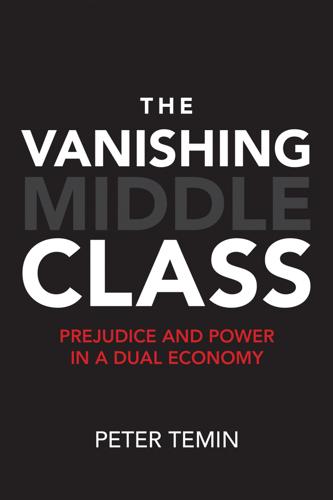
The Vanishing Middle Class: Prejudice and Power in a Dual Economy
by
Peter Temin
Published 17 Mar 2017
He won election to the presidency through a Southern Strategy that appealed to Southern racism and opposition to the Civil Rights Movement. He abandoned Johnson’s War on Poverty and declared a War on Drugs in 1971. He also abandoned the fixed exchange rate of the Bretton Woods system to deal with the strain on the dollar exerted by the expanding war in Vietnam.2 Nixon switched the United States to a floating exchange rate, transferring responsibility for the domestic economy from the federal government, which controls fiscal policy, to the Federal Reserve System, which controls monetary policy. The Fed had been securing the exchange rate for the previous quarter century, and it had to learn how to fulfill its new role.
…
Bradley, 116–117, 129, 142 Mincer, Jacob, 165 Minimum wage, 62, 72, 79 Minow, Martha, 111, 134 Mobility, 7, 32, 46, 133, 154, 159 Mortality, 33, 39–40, 58, 126, 154 Mortgages bubbles and, 154–155 discrimination and, 117 Fannie Mae and, 138 FIRE sector and, 80 forgiving, 156 Freddy Mac and, 138 Great Migration and, 34 HAMP and, 139–140 hedge funds and, 179n5 housing and, 34, 44–45, 69, 80, 117, 137–140, 154, 156, 179n5 Investment Theory of Politics and, 69 low-wage sector and, 34 race and, 117 reform for, 156 restricted access to, 117 security and, 138 transition and, 44–45 Mundell-Fleming model, 169n3 Murray, Charles, 132 Mutual funds, 31 NAACP, 116–117 National defense, 17–18, 93 National Federation of Independent Business, 97 National Review magazine, 51 National Rifle Association, 97 Native Americans, xi, 84 Neoliberalism, 17, 21–22 New Deal, 21, 52, 65, 80–81, 101, 141 New Federalism, 21–22, 35, 44, 83, 103, 110 New Jim Crow, 27, 49, 104, 154 New Jim Crow, The (Alexander), xvi Newman, Oscar, 131–132 New Yorker magazine, 83, 135 New York Times newspaper, 125 Nineteenth Amendment, 56, 58, 67 Nixon, Richard M. depletion allowance and, 81 floating exchange rate and, 15 Ford and, 168n2 Johnson and, 15, 27, 168n2 Kennedy and, 81 mass incarceration and, 104, 109 military draft and, 16 New Federalism and, 21–22, 35, 44, 83, 103, 110 Powell and, 17, 27, 117 Project Independence and, 16, 71, 143 public education and, 117 Rehnquist and, 95, 142 Roberts and, 142 segregation and, 27 Southern Strategy and, 15, 27, 35, 81, 117, 142 War on Drugs and, xv–xvi, 15, 37–38, 53, 55, 104, 106, 110, 132 Nixon Shock, 169n3 Nobel Prize, 7, 49, 124, 162, 164 North cities and, 132–134 concepts of government and, 88, 94 FTE (finance, technology, and electronics) sector and, 20 Great Migration and, 20, 27–28 (see also Great Migration) Investment Theory of Politics and, 62–66 low-wage sector and, 27–29, 32, 34 manufacturing jobs in, 20 mass incarceration and, 104 public education and, 119, 125 race and, 51–53, 55, 59 unions and, 20 North American Free Trade Agreement (NAFTA), 55 Northeast Corridor, 134 Norway, 149 Obama, Barack, 25, 38, 81–84, 91, 96, 127, 175n12 Occupational Safety and Health Administration (OSHA), 90 Offshoring, 28, 32 Oil, 80–81, 180n13 depletion allowance of, 81 Koch brothers and, 17–19, 83–85, 92, 97, 110–111, 158–159, 169n12, 175n17 OPEC and, 16, 143 Project Independence and, 16, 71, 143 shock of, 16 Oligarchy, 65, 72, 87–89, 93–97, 115, 159 One-percenters CEO salaries and, 24 Reagan and, 22–23 tax cuts for, 22–23 very rich and, 3, 9–12, 22–24, 77–85, 92, 96, 155, 170n28 Organization of Petroleum Exporting Countries (OPEC), 16, 143 Oxymorons, 15, 101, 110-111, 156.
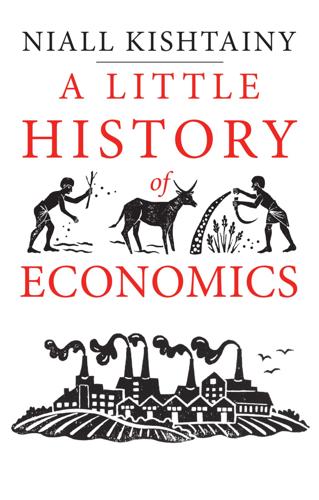
A Little History of Economics
by
Niall Kishtainy
Published 15 Jan 2017
When the value of pesos in dollars moves around a lot it’s hard for a Mexican shopkeeper to know what price to agree for an order of American jeans over the next six months because an affordable dollar price today could be unaffordable in six months if the peso loses value. Some countries live with this: they let their exchange rates move up and down, what’s called a ‘floating’ exchange rate. Others try to stop it moving and ‘peg’ their exchange rates – in other words, fix them at a certain value of a leading currency like the dollar. The hope is that this will bring more certainty to consumers and businesspeople. They know how much they’ll be able to get for their goods abroad and how much foreign goods will cost.
…
absolute poverty (i) acid rain (i) adaptive expectations (i) adverse selection (i) advertising (i) agriculture (i), (ii), (iii) aid (i) Akerlof, George (i) alienation (i) Ambrose, St (i) animal spirits (i), (ii), (iii) antitrust policies (i) Apple (i) Aquinas, St Thomas (i), (ii) Aristotle (i) Arrow, Kenneth (i) ascending auction (i) Asian Tigers (i), (ii) Atkinson, Anthony (i), (ii) auction theory (i) auctions (i) Augustine of Hippo, St (i) austerity (i) balance of trade (i) banks and entrepreneurs (i) and interest rates (i) and loans (i) and monopoly capitalism (i), (ii) and speculation (i) see also Britain, Bank of England; central banks; independent central banks; World Bank battle of the methods (i) Becker, Gary (i) behavioural economics (i) benevolent patriarch (i) Beveridge, William (i) big push (i) Black Wednesday (i) bonds (i) bourgeoisie (i), (ii), (iii) brand image (i) Britain Bank of England (i) inflation (i) pegged currency (i) Second World War (i) war with China (i) war with South Africa (i) bubbles (i), (ii) Buchanan, James (i) budget deficit (i) Burke, Edmund (i) capabilities (i) capital (i) and growth (i) Marx on (i) Capital (Marx) (i) Capital in the Twenty-First Century (Piketty) (i) capitalism (i), (ii), (iii) and entrepreneurs (i) and governments (i) and the Great Depression (i) and the Great Recession (i) historical law of (i) Marx on (i) world (i) see also communism Capitalism and Freedom (Friedman) (i) Capitalism, Socialism and Democracy (Schumpeter) (i) capitalists (i), (ii), (iii), (iv) and imperialism (i), (ii), (iii) Marx on (i), (ii), (iii), (iv), (v) carbon tax (i) carbon trading permits (i) Carlyle, Thomas (i), (ii) Castro, Fidel (i), (ii) central banks (i), (ii), (iii), (iv), (v) central planning (i), (ii) chaebols (i) chain of being (i), (ii) Chamberlin, Edward (i) Chaplin, Charlie (i) Chicago Boys (i) Chicago school (i), (ii), (iii), (iv) China, war with Britain (i) Christianity, views on money (i) Churchill, Winston (i) classical dichotomy (i) classical economics (i), (ii), (iii), (iv), (v) coins (i), (ii) Colbert, Jean-Baptiste (i) colonies/colonialism (i), (ii), (iii), (iv) American (i) Ghana (i), (ii) commerce (i), (ii), (iii), (iv) communism (i) and the Soviet Union (i) Communist Manifesto, The (Engels and Marx) (i), (ii) comparative advantage (i), (ii) competition (i), (ii), (iii), (iv) Condorcet, Marquis de (i) Confessions of an Economic Heretic (Hobson) (i) conspicuous consumption (i) constitution (rules) (i) consumers (i), (ii), (iii), (iv) contagion, economic (i) core (i) Corn Laws (i), (ii) Cortés, Hernan (i) cost (i) creative destruction (i) Credit Crunch (i) crime, economic theory of (i) Cuba (i) currency (i), (ii) see also coins currency markets (i), (ii) currency reserves (i) Debreu, Gérard (i) demand law of (i) see also supply and demand demand curve (i) democracy (i), (ii) Democratic Republic of the Congo (i) dependency theory (i) Depression (Great) (i), (ii), (iii), (iv), (v), (vi), (vii) and economic growth (i) and the US central bank (i) descending auction (i) developing/underdeveloped countries (i), (ii) development economics (i) Development of Underdevelopment, The (Frank) (i) diminishing marginal utility (i), (ii) diminishing return to capital (i) discretion (i) discrimination coefficient (i) distribution of income (i), (ii) diversification (i), (ii) dividends (i) division of labour (i) doomsday machines (i) Drake, Sir Francis (i) Drew, Daniel (i) dual economy (i) economic value (i), (ii), (iii), (iv) economics defined (i) normative (i) Economics of Imperfect Competition (Robinson) (i) economies of scale (i) economists (i), (ii), (iii) efficient markets hypothesis (i), (ii), (iii), (iv) efficient/inefficient economic outcome (i) see also pareto efficiency; pareto improvement Elizabeth I (i) Elizabeth II (i) employment, full (i) Engels, Friedrich (i) England’s Treasure by Forraign Trade (Mun) (i) entitlement (i), (ii) entrepreneurs (i), (ii) equilibrium (i), (ii), (iii), (iv), (v) exchange of goods (i), (ii) exchange rates (i) expectations, adaptive/rational (i), (ii), (iii), (iv) exploitation (i), (ii), (iii), (iv), (v) exports (i) and poor countries (i), (ii), (iii) externalities (i), (ii), (iii), (iv) Extraordinary Popular Delusions and the Madness of Crowds (MacKay) (i) failure, market (i), (ii), (iii), (iv) Fama, Eugene (i) famine (i), (ii), (iii), (iv) feminist economics (i) feudalism (i), (ii), (iii), (iv) financial systems (i), (ii) Finer, Herman (i) first price auction (i), (ii) First Welfare Theorem (i), (ii) First World War (i) fiscal policy (i), (ii) floating exchange rate (i) Florence (i) Folbre, Nancy (i) Fourier, Charles (i) framing (i), (ii) France agriculture (i) economic models (i), (ii) revolution (i), (ii), (iii), (iv) and taxation (i) Frank, Andre Gunder (i) free choice (i), (ii) free-market economics (i), (ii), (iii), (iv) free trade (i), (ii), (iii) Friedman, Milton (i), (ii), (iii) full employment (i) game theory (i), (ii), (iii) general equilibrium (i), (ii), (iii), (iv) General Theory of Employment, Interest and Money, The (Keynes) (i) Germany, infant industries (i) Ghana (i), (ii) Gilded Age (i) Global Financial Crisis (i), (ii) global warming (i) Goethe, Johann Wolfgang (i) gold (i), (ii) Golden Age (i) goods and services (i) government, and economies (i), (ii), (iii), (iv), (v), (vi), (vii) Great Moderation (i), (ii) Great Recession (i) Greece (i), (ii), (iii) gross domestic product (i) growth (i) and dependency theory (i) of government (i) and the Great Moderation (i) and Pakistan (i) and population (i) theory (i) Guevara, Ernesto ‘Che’ (i), (ii) guilds (i) Hamilton, Alexander (i) Hansen, Alvin (i) harmony, system of (i) Hayek, Friedrich (i), (ii) hedge funds (i) herds (i) Hicks, John (i) historical law of capitalism (i) HIV/AIDS (i) Hobson, John (i) Homobonus, St (i) human capital (i) human development (i), (ii) Human Development Index (i) imperfect competition (i), (ii) imperialism (i) Imperialism: The Highest Stage of Capitalism (Lenin) (i) imports (i), (ii), (iii) income (i), (ii) and bank loans (i) and capitalism (i) and communism (i) distribution of (i), (ii) and growth (i), (ii) national (i), (ii), (iii), (iv), (v) income per person (i), (ii) independent central banks (i) Industrial Revolution (i), (ii), (iii), (iv), (v) inequality (i), (ii) infant industries (i) inflation (i), (ii), (iii), (iv), (v) information economics (i), (ii), (iii) injection of spending (i) innovations (i), (ii) insurance (i), (ii) interest rates (i) British (i) and monetary policy (i) and recession (i) and usury (i) International Monetary Fund (i) investment (i) and the big push (i) and recession (i), (ii) invisible hand (i), (ii), (iii), (iv), (v) iron law of wages (i) Irrational Exuberance (Shiller) (i) Jefferson, Thomas (i) Jevons, William (i) just price (i) Kahneman, Daniel (i), (ii) Kennedy, John F.
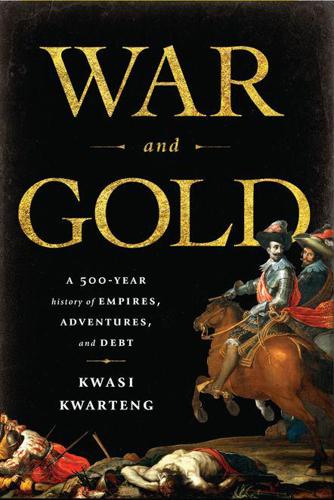
War and Gold: A Five-Hundred-Year History of Empires, Adventures, and Debt
by
Kwasi Kwarteng
Published 12 May 2014
By contrast, he had noticed that the ‘atmosphere in the House of Lords yesterday [when he made his speech in support of the Bretton Woods proposals] was quite free’ from the rather antagonistic mood of the House of Commons.19 To modern analysts, however, Bretton Woods was a lot more similar to the pre-1914 gold standard than it would be to the world of freely floating exchange rates of the late twentieth century. Like the gold standard, the Bretton Woods system proposed a regime of fixed exchange rates, though it did allow for some devaluation, if ‘fundamental disequilibrium’ occurred. In many ways, Bretton Woods was even more rigid than the old gold standard, as it required capital controls, whereas the old system had not.
…
As Paul Volcker remembered, Jimmy Carter’s appointments to the ‘main economic posts in the Treasury, the Council of Economic Advisers, and the State Department were of a quite different breed from the monetarists predominant during the later Nixon–Ford years’. Carter’s people all had ‘professional training in economics and had seen substantial governmental service in the 1960s’. These advisers and officials supported ‘floating exchange rates’ and shared, by ‘instinct and experience’, the ‘Keynesian faith in the ability of governments to maximize the performance of the economy and indeed of the market itself’.41 The persistence of inflation in the second half of the 1970s well into the Carter presidency created yet more uncertainty and despondency.
…
The result of this pressure was that ‘the dollar today [2010] has fallen 75 percent against the yen, and we still have a trading deficit’. China’s successful export policy, its continuing trade surpluses with the United States, had more to do with the ‘trade policies and structure’ of the United States than with the exchange rate. Once again, Chinese officials emphasized the benefits of stability as opposed to the free-floating exchange rates which had been a feature of global currency markets since the collapse of Bretton Woods: ‘A stable yuan is of vital significance to the global economic development and the stability of the international monetary system.’43 The consequence of China’s exporting success was the accumulation of trillions of dollars of reserves.

The Shifts and the Shocks: What We've Learned--And Have Still to Learn--From the Financial Crisis
by
Martin Wolf
Published 24 Nov 2015
But that is not a sufficient explanation. Note that many ageing societies do not run large current-account surpluses (consider Italy, for example) and that Germany ran sizeable current-account surpluses before ageing had really set in (prior to German unification). In the case of Japan, a floating exchange rate makes this policy more difficult to sustain than for Germany (as we will see later in this chapter), at least since the latter became part of the Eurozone. That is why Japan has periodically felt obliged to keep the yen down by accumulating foreign-currency reserves.27 The aggressive monetary policies of Abenomics, introduced under Prime Minister Shinzo Abe, may also be an attempt to restore lost growth by improving external competitiveness: between November 2012 (that is, just before he became prime minister for the second time) and July 2013, the JP Morgan broad trade-weighted real exchange rate of the yen fell by 17 per cent.
…
Other economists have argued for such a policy in the event of crises, among them Keynes with his celebrated suggestion that people be paid to dig up bottles full of pound notes, and Ben Bernanke, when considering policy options confronting Japan in the early 2000s.52 This seems a solution to any long-term problem of structural-demand deficiency. Instead of relying on private-sector credit booms to generate a temporary return to full employment or accept a semi-permanent depression, let the government use its capacity to create money, already accepted when countries moved to floating exchange rates. This is not only what many in the Chicago School would have accepted. It is also the recommendation of those who believe in Modern Monetary Theory (see Chapter Six above). Meanwhile, control over the quantity of money to be printed would be left with the central bank, which would create the amount of money it deemed non-inflationary.
…
If one wants to understand the problems of such arrangements, in modern circumstances, one need merely look at what happened in the 1920s and 1930s and more recently in the Eurozone. Fixed exchange rates are a recipe for instability. For small open economies with flexible labour markets, such as Hong Kong or the Baltic states, this may be better than the instability generated by floating exchange rates. For larger economies the idea that the exchange rate should dictate monetary policy is less sensible. It is also inconceivable that the US would follow such a rule: it did not do so after creation of the Federal Reserve in 1913, even though the dollar was notionally tied to gold until 1971.

More: The 10,000-Year Rise of the World Economy
by
Philip Coggan
Published 6 Feb 2020
The gold standard revived The war had brought a lot of economic and financial, as well as physical, destruction. So policymakers had a hankering to return to pre-war conditions. In particular, after the surge in wartime inflation, they wished to see a return to the gold standard. The rapid rise and fall of prices in the immediate aftermath of the war was unsettling, and suggested that floating exchange rates were a cause of instability. Furthermore, a fixed exchange rate was perceived to be a good form of discipline, stopping governments from cheating creditors by repaying them in depreciated currency. In Britain, many believed that the decision to return to the gold standard after the Napoleonic Wars had been the key to the country’s 19th-century success.
…
After 1943, it became fairly clear that the Germans would be defeated and the Allies started to plan a post-war settlement. Among the first issues to be settled was the monetary system. A return to the full gold standard seemed out of the question, not least because the US economy was even more dominant than before. But politicians worried about adopting floating exchange rates, which seemed a recipe for chaos. A conference was duly organised at the Bretton Woods hotel in the mountains of New Hampshire. Harry Morgenthau, the US Treasury secretary, said at the opening ceremony that “We came here to work out methods which would do away with the economic evils – the competitive currency devaluations and destructive impediments to trade – which preceded the present war.”1 The British were represented by their top economist, John Maynard Keynes, and the Americans by Harry Dexter White, a Treasury official who was passing secrets to the Soviet Union, according to KGB archives.
…
The underlying problem with the snake was that the West German economy was stronger than many of the others in the group and there was a natural tendency for the mark to rise. Despite two revaluations of the mark, the French withdrew from the system in 1974 and again in 1976.74 The first attempt to align European exchange rates thus proved a failure. Milton Friedman, the US economist, argued that floating exchange rates could be an improvement on a fixed rate system, provided that flexible rates were accompanied by a policy regime that could control inflation. First of all, he was a great believer in free markets, which would be more likely to establish the most appropriate exchange rate than central bankers or politicians.
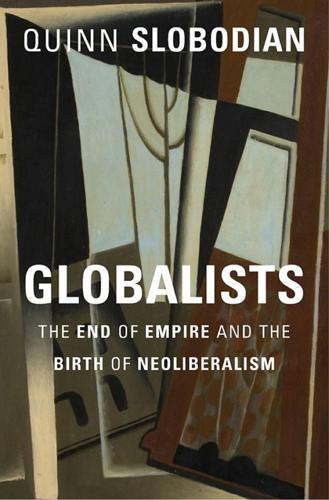
Globalists: The End of Empire and the Birth of Neoliberalism
by
Quinn Slobodian
Published 16 Mar 2018
Colloque Walter Lippmann, Compte-Rendu des séances du Colloque Walter Lipp mann (August 26–30, 1938), vol. 1 of Travaux du centre international d’études pour la renovation du libéralisme (Paris: Libraire de Médicis, 1938). 35. Heilperin himself was an advocate of the return of the gold standard. See Anthony M. Endres, Great Architects of International Finance: The Bretton Woods Era (London: Routledge, 2005), 162–173. On the role of the Bellagio Group in advocating the shift to floating exchange rates, see Carol Connell, Reforming the World Monetary System: Fritz Machlup and the Bellagio Group (London: Pickering and Chatto, 2013); Matthias Schmelzer, Freiheit für Wechselkurse und Kapital: Die Ursprünge neoliberaler Währungspolitik und die Mont Pèlerin Society (Marburg: Metropolis, 2010). 36.
…
Craig VanGrasstek, The History and Future of the World Trade Organization (Geneva: World Trade Organization, 2013), 539. 123. Olivier Long, “International Trade under Threat: A Constructive Response,” The World Economy 1, no. 3 (1978): 257. 124. On the campaigns of Haberler, Fritz Machlup, Milton Friedman, and other economists for floating exchange rates, see Carol Connell, Reforming the World Monetary System: Fritz Machlup and the Bellagio Group (London: Pickering and Chatto, 2013); Robert Leeson, The Eclipse of Keynesianism: The Political Economy of the Chicago Counter-Revolution (New York: Palgrave, 2000); Matthias Schmelzer, Freiheit für Wechselkurse und Kapital: Die Ursprünge neoliberaler Währungspolitik und die Mont Pèlerin Society (Marburg: Metropolis, 2010). 125.
…
See also Federation; League of Nations; Multilevel governance; United Nations Graduate Institute of International Studies: as center of neoliberal research, 74, 77, 78, 85, 88, 92, 94, 99, 109, 113, 127–128, 130, 187, 216; faculty at, 244, 245, 278; founding of, 75 Gray, John, 105, 235 Great Depression, 58, 64, 69, 71, 87, 107, 154; causes of, 46, 55, 57, 69; graphic depiction of, 59; reflection on, 6, 17, 54, 58, 187, 208, 215 371 Great Society, 57, 81 Greece, 97 Greenspan, Alan, 1 Gregory, Theodore, 172 Grünberg, Carl, 75 Guardians: of the cybernetic system, 251, 274; of the economic constitution, 214, 251, 275; of the world economy, 22, 194, 275 Guatemala, 139, 193 Gueye, Djeme Momar, 197 Haberler, Gottfried, 8, 99, 147, 164, 190, 207; and business cycle research, 17, 21, 31, 49, 71; on European integration, 183, 194, 216; on floating exchange rates, 241; Haberler Method, 72–73, 75, 77, 127; Haberler Report, 183, 191, 198, 200–202, 215, 222, 285; interwar international collaboration, 30, 57, 71–77, 78, 124, 128; and Mises Circle, 48–49; on the NIEO, 221, 253; on trade theory, 41–42, 49–50 Habsburg Empire, 13, 31, 32, 68, 111; dissolu tion of, 21, 27, 56, 67, 69, 93, 109–110, 128; as model, 12, 94, 105–106, 112, 144, 264; successor states, 123, 147 Hague Academy of International Law, 11 Hallstein, Walter, 197 Hamilton College, 129 Hanover, 74 Hansen, Alvin, 73 Haq, Mahbub ul, 219 Hardin, Garrett, 239 Harvard Committee for Economic Research, 61 Harvard Economic Serv ice, 62–64, 67 Harvard University, 64, 75, 164, 199, 221 Haussmann, Baron George-Eugène, 32, 47 Havana, 126, 130; ITO Charter, 128–130, 132–134, 318n64 Hayek, F.
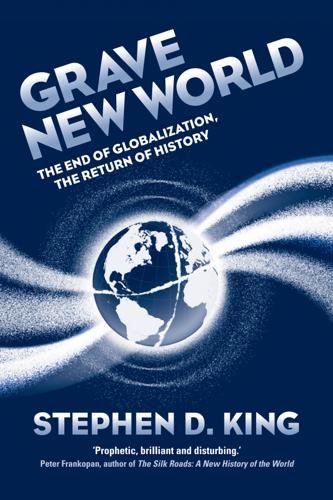
Grave New World: The End of Globalization, the Return of History
by
Stephen D. King
Published 22 May 2017
THE IMF RIDES TO THE RESCUE With all this monetary chaos, it would be reasonable to think that the IMF would be in trouble, perhaps heading in monetary terms towards oblivion, in much the same way as the League of Nations had done in diplomatic terms four decades earlier. Yet, as the 1970s progressed, it became increasingly apparent that, with a move to floating exchange rates, the IMF’s role was, if anything, strengthening. First, the dollar’s heightened volatility meant that reserve managers elsewhere in the world craved an alternative monetary store of value that would be neither dollars nor gold. The IMF’s Special Drawing Rights (SDRs) – known colloquially as ‘paper gold’ – proved to be just the ticket.
…
A country can commit to unrestrained cross-border capital flows and a stable exchange rate, but only if it relinquishes control of its inflation rate: if the currency is under upward pressure thanks to strong capital inflows, interest rates will have to come down to prevent the currency from rising. By cutting interest rates, however, inflation will in all likelihood end up higher. Finally, and for the sake of completeness, a country can choose its own inflation rate and welcome cross-border capital flows, but only if it is prepared to accept a floating exchange rate. In other words, a policymaker can commit to only two out of three key policy objectives, even if it might seem desirable to embrace them all. It is impossible to commit to free-flowing capital across borders and, at the same time, deliver both a stable exchange rate and a stable inflation rate.
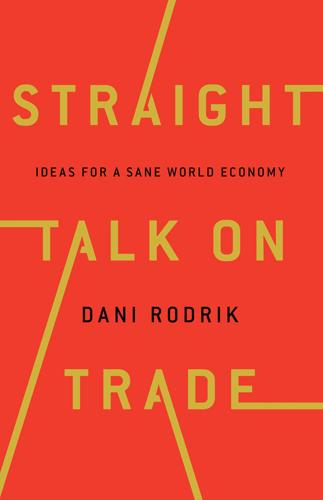
Straight Talk on Trade: Ideas for a Sane World Economy
by
Dani Rodrik
Published 8 Oct 2017
Economists agree on many things that are often politically controversial. The Harvard economist Greg Mankiw listed some of them in 2009.2 The following propositions garnered support from at least 90 percent of economists: import tariffs and quotas reduce general economic welfare; rent controls reduce the supply of housing; floating exchange rates provide an effective international monetary system; the United States should not restrict employers from outsourcing work to foreign countries; and fiscal policy stimulates the economy when there is less than full employment. This consensus about so many important issues contrasts rather starkly with the general perception that economists rarely agree on anything.
…
Moreover, it requires that economists make value judgments on distributional effects, which are better left to the electorate itself. Likewise, the proposition that rent controls reduce the supply of housing is violated under conditions of imperfect competition. And the proposition that floating exchange rates are an effective system relies on assumptions about the workings of the monetary and financial system that have proved problematic; I suspect a poll today would find significantly less support for it. Consider other issues of the day. The widely held presumption that minimum wages are damaging to employment carries considerably less weight today because of mounting evidence showing mixed results; there are models under which minimum wages either do not reduce employment or increase it.
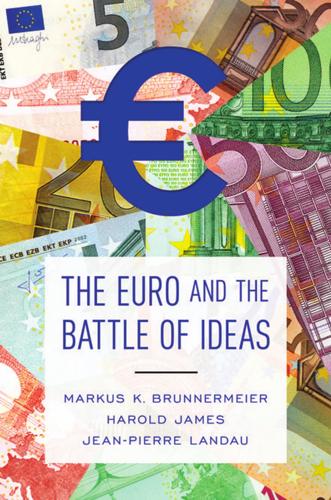
The Euro and the Battle of Ideas
by
Markus K. Brunnermeier
,
Harold James
and
Jean-Pierre Landau
Published 3 Aug 2016
Economists and policy makers alike have paid special attention to countries with debt issued in a foreign currency, and this was an issue that became a central component of the euro crisis. The fact that debt has to be serviced in a foreign currency puts a substantial constraint on monetary policy freedom, even in a world with floating exchange rates and freely flowing capital. Still, the trilemma is useful as a first-pass organizing device, and history provides us with numerous useful examples of how the underlying trade-offs were resolved in the past. Gold Standard The gold standard was the dominant international exchange rate system between the mid-nineteenth century and the early to mid-twentieth century, and many modern commentators make analogies between the gold standard and the European currency union, in that both suppressed the autonomy of monetary policy.
…
Interestingly, these patterns very much resemble the buildup of imbalances within the euro area prior to the eruption of the euro-area crisis (with the role of Italy being taken by many periphery economies). In the end, the Bretton Woods system collapsed; it simply did not incorporate a sustainable and credible way of dealing with the adjustment problem. Afterward, the global exchange rate system started to move very close to the German ideal: free capital flows and floating exchange rates. Later (in the 1980s), this became part of the Washington Consensus (which, interestingly, was also pushed by various French politicians, for example, Jacques Delors), as we discuss in chapter 14. European Exchange Rate Mechanism In Europe, however, matters continued to look different. European governments felt that volatile intra-European exchange rates would be detrimental to the European project, and so, in 1978, they launched the European Exchange Rate Mechanism (ERM for short), an attempt to recreate the Bretton Woods system in a European context.
…
The approach would also include a standardized administrative framework to ensure that similar standards are applied across European countries to the classifying of workers as unemployed. OPTIMAL CURRENCY AREA WITHOUT FISCAL UNION While Peter Kenen stressed the importance of a fiscal union, other academic contributors to the optimal currency area literature worked out conditions under which asymmetric shocks can be dealt with, even absent floating exchange rates and a fiscal redistribution scheme. Others questioned the usefulness of exchange rate movements altogether; for these economists, giving up exchange rate flexibility is no big sacrifice. What asymmetric shock absorbers are available—other than exchange rate flexibility and fiscal redistributions?
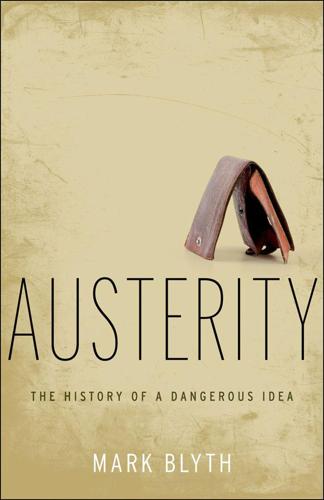
Austerity: The History of a Dangerous Idea
by
Mark Blyth
Published 24 Apr 2013
Austerity as Policy in the USA: 1921–1937 Rather than a slump after World War I, the United States experienced a boom as pent-up demand and massively expanded money supplies erupted from within war-shocked economies around the world. The boom was, however, short-lived, and in the continental European economies it was accompanied by significant inflation and, in some cases, a hard landing. No slump followed in the United States, however, for an unexpected reason—floating exchange rates in Europe (most countries were off gold) allowed countries to deflate externally instead of through domestic prices—and so recovery followed rapid disinflation.17 The Roaring Twenties began with a bump in Europe but not the United States, precisely because the Americans were not on gold. The early warning lights for the United States were blinking, however, in the form of falling agricultural prices and an increasingly volatile banking sector.
…
The End of Banking The story of the crisis reconstructed in chapters 2 and 3 can, and perhaps should, be seen in a bigger context. At the end of the Bretton Woods era, when the United States finally went off gold in 1971, states around the world had to adjust to what Eric Helleiner has called “the reemergence of global finance.”3 Floating exchange rates, deregulation, disintermediation, and the rest, which made finance the most profitable sector of the American and British economies by the 2000s, was the new order of things. But what was it all really based upon? After all, finance is most properly thought of as a part of the information system of the economy: linking borrowers and lenders while sitting in the middle collecting a fee.
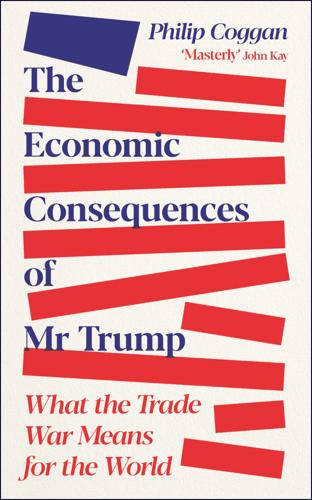
The Economic Consequences of Mr Trump: What the Trade War Means for the World
by
Philip Coggan
Published 1 Jul 2025
But higher rates would also slow the economy since consumers would have less money to buy imports. Sometimes, the required increase in rates was so large, and economically damaging, that governments decided to give up defending the currency, as happened when Britain dropped out of the European Exchange Rate Mechanism in 1992. In today’s world of mainly floating exchange rates, the trade deficit becomes much less important. If a nation’s trade deficit is large, then it is possible for the country’s currency to fall so that its exports are cheaper, and thus more attractive, and imports are more expensive, and thus less appealing. The trade deficit can right itself.
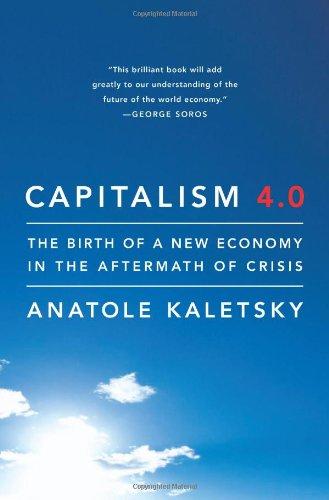
Capitalism 4.0: The Birth of a New Economy in the Aftermath of Crisis
by
Anatole Kaletsky
Published 22 Jun 2010
As long as the laissez-faire economics of Capitalism 3.3 was dominant, it was impossible for the G7, the IMF, the World Trade Organization, or any other international forum to engage in serious discussions about currencies and other issues of global management. Until the emergency meetings that followed the Lehman crisis, all that happened in such international gatherings was that the U.S., British, and German delegates felt obliged by their ideologies to preach the gospel of free-floating exchange rates and to repudiate all government intervention in currency markets at all times. By contrast, China and other emerging economies, quietly backed by Japan, France, and Italy, by contrast insisted that currencies and capital flows were government prerogatives too important to be left to turbulent and unpredictable markets.
…
The theoretical benefits of free trade and comparative advantage will be counterbalanced explicitly by other economic objectives—initially the imperative of job creation after the recession and later the desirability of preserving a diversified industrial structure. Third, the pressure to coordinate macroeconomic and currency policies among the major trading economies—America, Europe, China, and Japan—will become irresistible. Such coordination will have major implications for the post-Bretton Woods system of floating exchange rates and for the governance of global political and economic institutions—two issues discussed at the end of this chapter. Limits to Growth and Physical Resources The market-knows-best philosophy of Capitalism 3.3 assumed that there could be no constraints on the growth of the world economy.
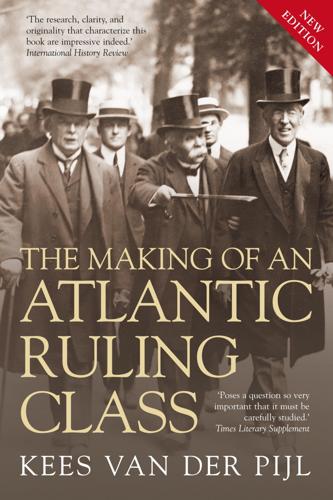
The Making of an Atlantic Ruling Class
by
Kees Van der Pijl
Published 2 Jun 2014
In May, Pompidou and Heath rejected the offer to meet with Nixon in the framework of a conference of Atlantic leaders as ‘premature’.43 The Nixon/Kissinger/Connally policy destroyed the Atlantic constraint and precipitated the crisis of the mode of accumulation which had developed under it. In the monetary field, the unilateral dollar policy provided the liquidity for a global restructuration of capital and at the same time put the United States at an advantage. As Parboni writes, ‘The system of floating exchange rates also eliminated any need for the United States to control its own balance of payments deficit, no matter what its source, because it was now possible to release unlimited quantities of non-convertible dollars into international circulation’.44 The October War in the Middle East provided the Americans with an opportunity to force compliance with the new American international concept on the part of all Western European countries except France.
…
As Parboni has argued, American supremacy henceforward rested on the fact that it could resort to such devaluations without seeing them eroded again by inflation due to more expensive imports. On the other hand, as private international dollar liquidity grew explosively after 1971, involuntary credit from the rest of the world not only financed the American deficit, but all countries turned to the booming capital markets to finance their deficits now that the regime of floating exchange rates suspended the central banks’ function of intervening in foreign money markets.52 The financing rather than balancing of deficits opened enormous markets for bank capital, and eventually, for all other forms of money-capital as well. The liberation of banks from the Keynesian controls imposed on them in the 1930s on both sides of the Atlantic still was part of the unifying trend of the mid 1960s, spurred on by the Kennedy offensive.
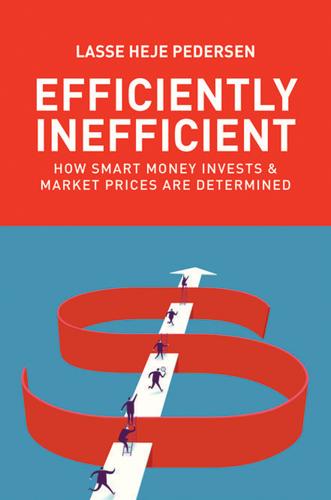
Efficiently Inefficient: How Smart Money Invests and Market Prices Are Determined
by
Lasse Heje Pedersen
Published 12 Apr 2015
They are just the most dramatic and the most directly opposed to the efficient market hypothesis; so they do deserve special attention. But reflexivity can take many other forms. In currency markets, for instance, the upside and downside are symmetrical so that there is no sign of an asymmetry between boom and bust. But there is no sign of equilibrium either. Freely floating exchange rates tend to move in large, multi-year waves. The most important and most interesting reflexive interaction takes place between the financial authorities and financial markets. While bubbles only occur intermittently, the interplay between authorities and markets is an ongoing process. Misunderstandings by either side usually stay within reasonable bounds because market reactions provide useful feedback to the authorities, allowing them to correct their mistakes.
…
Consistent with this, Ahern and Sosyura (2014) find that “fixed exchange ratio bidders dramatically increase the number of press releases disseminated to financial media during the private negotiation of a stock merger, compared to floating exchange ratio bidders, who do not have an incentive to manage their media during the merger negotiation. This effect is associated with short-lived increases in both media coverage and bidder valuation.” Furthermore, they find that floating-exchange rate bidders disseminate more news around the pricing period, perhaps trying to talk up their stock price when it matters the most. Merger Arbitrage Portfolio Portfolio construction is an important part of merger arbitrage. The merger arbitrage manager must decide which merger targets to buy and how to size the positions.
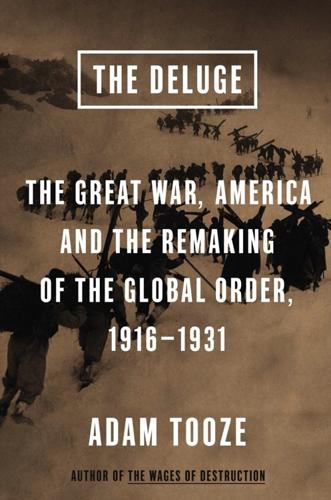
The Deluge: The Great War, America and the Remaking of the Global Order, 1916-1931
by
Adam Tooze
Published 13 Nov 2014
The initial reaction to the suspension of the gold standard was one of shock. But, within a year as the pound stabilized at a new and far more competitive level, Britain’s National Government, still headed by MacDonald, would discover that for a country with some degree of international credibility, a free-floating exchange rate offered not disaster but the possibility of a creative reinvention of economic liberalism.38 With its banking system intact, low interest rates delivered an effective stimulus to the British recovery. When compared to either the US or continental Europe, the British experience of the 1930s was far from dismal.
…
E. 380 League of Nations 4, 221–2, 231, 395, 470, 515–16 and the armistice 220, 222–3, 228 and the Berne conference 243 and Britain 258, 259–61, 262–3, 264–5, 266, 267, 268–70, 271, 455, 470 and China 261, 328, 330 and the Corfu crisis 447 Covenant drafting 255–6, 259–67, 271, 392 and Danzig 282 and democracy 243, 258 and disarmament 264–5 enforcement mechanisms 264–7 and fears of an Anglo-American condominium 257–8 and France 257–8, 261, 262, 263, 264–5, 266–8, 271, 277, 287, 325–6, 470, 492–3 and freedom of the seas 268–70 Geneva Protocols 470–71 and Germany 313, 315–16; disarmament talks withdrawal by Hitler 506 and the Hague Peace Arbitration Treaties 267 and human equality 324–5 and Japan 324–6, 329, 499 proposal as vehicle of international financial settlement 268 and racial non-discrimination 392 Saint-Germain Treaty and the League Covenant 330 and Silesia 286 and the US see United States of America: and the League of Nations Versailles and the League Covenant 255–6, 259–70, 271, 324–6, 335 and Wilson 16, 53, 54, 222–3, 243, 255–6, 259–63, 264, 266, 269–70, 277, 325, 326, 337, 516 League to Enforce Peace 45 Lebanon 193 Leffingwell, Russell C. 301, 345 Left Socialist Revolutionaries, Russia 86, 110–11, 118, 138, 157, 167 Ambassador Mirbach and the uprising of 164–5 Legien, Carl 313 Lenin, Vladimir Ilyich 10, 50, 71–2, 79–80, 83, 413, 418 at All-Russian congress (1918) 138, 141 April theses 71–2 and Asia 414–15 assassination attempt (August 1918) 168 balancing of imperialist powers strategy 151, 152, 153, 157, 234, 418 and the Bolshevik surrender 132, 136 Brest-Litovsk peace agreement see Brest-Litovsk Treaty and the ‘class struggle’ 128–9 class terror 242 and the Comintern 413, 414–15 as critic of revolutionary defensists 71–2, 110 death 233 Declaration of Rights 114 drive for one-party dictatorship 137–8 economic cooperation proposal with, and shift towards, Germany 151–2, 156–7, 159, 164, 166, 170, 200 economic cooperation proposal with the US (May 1918) 153 Entente relations after the armistice: conciliation concerns 236; and the Princes’ Islands conference proposal 236 at Fourth All-Russian congress 138, 164 ‘Imperialism, the Highest Stage of Capitalism’ 50 and Japan 146 and Keynes 295 ‘Land, Bread and Peace’ slogan 86 martial law declaration (May 1918) 157 and mass terror 165 misreading of logic of war 142 New Economic Policy 423, 424, 435, 483 October Revolution 83–6 peace demands 24, 132, 133 ‘People from Another World’ 128 post-armistice challenges 234–5 and Sinn Fein 79 and Soviet gold reserves 427 speech of 29 July 1918 to party’s Central Committee 165–6 SR mocking by 128 and the suppression of Constituent Assembly 128 views: of capitalism 141; of history 141–2; of imperialist war 142 and Wilson 10, 17, 21, 109, 146; 14 Points manifesto 123 Li Yuanhong 91–2, 98, 100–101 Liberal Party, Britain see Britain and the United Kingdom: Liberal Party liberalism and the 1920s 9 and the corrupt ‘old world’ 17 economic liberalism with free-floating exchange rate 501 embedded market-based 488 free trade 13, 14, 75, 501 as guard against resurgence of imperialism 488 imperial liberalism 15–16, 375, 383–93 interwar derailment of 17–21; and the 1918 summer politics of intervention 156–70; and the ‘Dark Continent’ model 17–18, 20, 26; and the destructive >force of imperialism 19–23; and the hegemonic crisis model 18–20, 26 and Japan 259 Keynesian ‘real liberalism’ 501 laissez-faire 300 New World support for European 312 and the Open Door 15–16, 44, 103, 205, 397, 405 and race 392–3 sentimental 272 and ‘Western values’ 10 Wilson on 232–3 and Wilsonian propaganda 17 and Wilson’s 14 Points manifesto 119–23, 198, 233 World War I and the coalition of liberal powers 511 see also democracy Liberty Bonds/Loans 206–7, 208, 215, 216, 342, 343, 344 Libya 233 Liebknecht, Karl 131, 238–9 Liga Patriotica 353 Lincheng 406 Lincoln, Abraham 41 Lindsay, Sir Ronald 507 Lithuania 114, 116, 139, 411 declaration as a republic 232 Livonia 167 Lloyd George, David, Ist Earl 3, 21, 42, 178–9, 432, 436 and 1917 joint conference of US and British War Cabinet 196–8 1918 election 245 American appeal, over Wilson’s head 203 as an exponent of liberal Empire 179 and Armenia 378 and Bohemia 281 and the Bolsheviks 235–6, 411 and Brest-Litovsk 109 on the British Empire 392 and British wages 246 Cannes Conference 429–30 charisma 173–4 Coalition government 40, 48–9, 245–9 and Danzig 282 and deflation 359 Democratic Programme of Reconstruction 248 end of premiership 438 Fontainebleau memorandum 285 and France 59; Franco-American clashes 298 Genoa Conference see Genoa Conference and German reparations 249–50, 293, 314 and Germany’s appeal for credit 427–8 and Hitler 306 and the ideological leadership of the war 197–8 and India 181, 387, 388, 389 and the Inter-Allied Conference (November 1917) 116, 197 and Ireland: conscription 192; Home Rule 191, 192; threat of massive repression 376 and the Middle East 195, 378, 381, 382 and the Monroe doctrine 269 and Mussolini 306 as pioneer of democracy 62 and Poincaré 431, 454 and the Poles 285 reflections on the war and its aftermath 5 and the risk of British dependence on the US 207 and the Romanovs 74 and the Russian famine 424 scheme to restore eastern European economies 428–9 and self-determination 120 and the Siberian intervention 159–60, 170 and the tax system 248 and trade unions 244 ‘trench vote’ encouragement 246 and Turkey 381, 382 and Versailles 249–50, 282, 307, 314, 328 war aims declaration 197, 244 war strategy 181 and Wilson 62, 158–9, 203, 224, 243, 244, 269–70, 335 and working class militancy 246–8, 359 and Zionism 195 Locarno Treaty 4, 23, 462 Lockhart, Bruce 145, 157, 160, 168 Lodge, Henry Cabot 231, 334, 335, 336 London 1916 economic conference 290 disorder, winter of 1918–1919 356 gold supplies 209 World Economic Conference 504, 506 London Conference (1924) 461 London Empire Conference 394–6 London Naval Conference (1930) 474, 486, 490–93, 499, 512 London Reparations Ultimatum 368, 371–2 London Treaty 116, 176, 177, 178, 306–7, 308, 310, 438 Lossow, Otto von 148 Louis XIV 273 Lowther, James 183, 185 Lucknow agreement 181, 188, 384, 391–2 Ludendorff, Erich 22, 24, 43, 47–8, 57, 82, 111, 129, 135, 140, 148, 153, 155, 219 aims for a dependent Russian state 161 attack on British front line 140 and the Bad Homburg conference 133 and Brest-Litovsk 118, 131 and the British in Murmansk 166 defence of Kaiser 225 desire to crush Soviet regime 161, 170 and Finland 150–51 and the Jews 135 and Petrograd 167 and Poland 135 and the SA 451 and the Supplementary Treaty 167 Lusitania 34, 43 Luther, Hans 460 Lüttwitz, Walther von 318–19 Luxemburg, Rosa 166, 167, 237, 238–9 Lwow, siege of 417 McAdoo, William Gibbs 52, 105, 207, 208, 291, 347 Macaulay, Thomas Babington, 1st Baron 391 MacDonald, Ramsay 26, 241, 244, 245, 455–6, 457, 470, 489 and Britain’s leaving the gold standard 500–501 and Brüning 495 on cessation of US debt payments 507 and French non-cooperation with Hoover proposals 496 and Hoover 474, 504 and the London Naval Conference 491–2 machine guns 156, 202, 204 McKenna, Reginald 48, 465 MacMurray, John V.
…
N. 414, 415, 416 Islamic army 416, 418 Royal Air Force 446 Royal Navy 1931 battleship construction 490 battle of Jutland 35 British Admiralty 34, 194, 365, 394 and China 481–2 cut in spending (1919) 364–5 and the defence of France 491 ‘navalism’ challenge to US 45 post-war dominance 374, 398 and the proposition of an imperial navy 394–5 and Soviet vessels in eastern Mediterranean 438 and US claim to naval dominance 269 and the Washington Conference 398, 401 Ruhr 1919 uprising 319 1923 crisis 24 French 1922 invasion and occupation 440–46, 447–9, 452–7, 459, 473 and Hitler 450, 452 Red Army 319, 337 starvation 443, 447 Russia 1917 Revolution 68–72, 73, 79–80; October Revolution 83–6; spring democratic revolution 189 abandonment of War 133 Bolshevism see Bolshevism/Bolsheviks Brest-Litovsk see Brest-Litovsk Treaty and Britain see Britain and the United Kingdom: and Russia/USSR Brusilov offensive 46–7, 70 Central Powers’ victory over 11 and China see China: and Russia/USSR civil war 142, 165, 173, 422 coal 108 Constituent Assembly 69, 83–5, 85, 86, 125; Bolshevik violent suppression of 127–8 currency 422 death penalty 69, 83 Declaration of the Rights of the People of Russia 114 democracy: 1917 spring democratic revolution 189; Allied intervention in Siberia on behalf of 156–70; Constituent Assembly elections (1917) 84–5, 85; democratic renewal (1917) 68–70; and the Entente as a democratic coalition 69–73; war grave of 76–87; and Wilson 145 Duma revival 42 Entente relations and membership see Entente: and Russia/ USSR famine 12, 423, 424, 425 and France see France/the French: and Russia/USSR and Germany see Germany: and Russia/USSR gold reserves 51 hyperinflation 212 and independence movements throughout the old Tsarist Empire 234–5 and Japan see Japan: and Russia/USSR Jews 69 Kronstadt rebellion 422–3 Left Socialist Revolutionaries see Left Socialist Revolutionaries, Russia Manchurian railway system rights 420 Menshevism see Menshevism/Mensheviks military spending 514 nationalism 150, 411 and the Ottoman Empire 193, 194 Petrograd formula for peace 71, 74, 76–8, 79, 115, 124, 138, 183 Provisional Government 68, 70, 71, 75–6, 79, 80, 81, 110, 125 Red Guards see Red Guards (Russia) repudiation of foreign debts 129, 425 requisitioning 422, 423 revolutionary defensism 71–2, 76, 82, 87, 110, 118, 122 Russian Army 69, 71, 81–3; Imperial 46; rebellion of peasant soldiers 82–3 self-determination 79, 108, 110, 114, 116, 125–6, 130–31 Siberia see Siberia Socialist Revolutionaries see Socialist Revolutionaries (SRs, Russia) and the Soviet regime see Soviet Union Soviets see Soviets (assemblies) strikes 247 Sykes-Picot agreement 193 treaty of the USSR (28 December 1922) 417–18 Tsarist autocracy 24, 59, 69, 73, 93–4, 276 Tsar’s abdication 68 and the Ukraine 124–6 and the US see United States of America: and Russia/USSR weakening between 1918 and 1920 21 Russian empire 5, 21 Ruthenia 132 Saar 277, 278, 279, 288, 289, 366, 447, 473 Saint-Germain Treaty 330 St Quentin, battle of 140 Saionji Kinmochi, Prince 144, 258–9, 321, 327, 478, 491 Salisbury, James Gascoyne-Cecil, 4th Marquess of 184 Salter, Arthur 205, 290 Salvemini, Gaetano 310 Saxony 232, 274, 418, 449–50 Scapa Flow 271, 317, 395 Schacht, Hjalmar 460, 506 Scheidemann, Philipp 114, 221, 312, 313, 315, 317, 426 Schurman, Jacob Gould 405, 406 seas, freedom of the 16, 45, 53, 75, 120, 226, 228, 257, 268–70 Seattle general strike (February 1919) 340 Second Moroccan Crisis, Agadir 59 Second Socialist International, Berne 240, 241–3, 409 Second World War see World War II Seeckt, Hans von 66, 147, 450 Seiyukai 96, 105, 144, 355, 363, 399, 467, 485, 491, 511 Selborne, William Palmer, 2nd Earl of 191 Semana Tragica 353 Senegal 227 Serbia/Serbs Entente demands for evacuation of 52 German complicity in Austria’s ultimatum to Serbia 313 and the League of Nations 261 threat of national extinction during war 5, 48 and Versailles 255 Serrati, Giacinto Menotti 414 Severing, Carl 432 Sèvres, Treaty of 381–2, 385 Shandong, Japanese occupation and claims 33, 89, 92–3, 99, 485 and Versailles 321, 323, 326–9, 336, 397 and the Washington Conference 403 Shanghai 321, 328, 478, 481–2 Shidehara Kijuro 23, 403, 478, 484 shipping 202–4, 205, 207, 292 Emergency Fleet Corporation 35, 203 see also Atlantic blockade Siberia 130, 235 Allied intervention 156–70 clashes between Red Guards and Czechs 158 and Japan 143, 146, 170, 321, 355, 363 White forces in 410 Sierra Leone 212, 374 Silesia 5, 281–3, 286, 314, 426 silver 209, 210–11, 355, 358 Singapore 394–5 Sinha, Satyendra Prassano 181 Sinn Fein 79, 180, 190, 192, 193, 227 Irish civil war 377 Easter uprising 79, 180, 376 Lenin, the Marxists and 79 Sisson, Edgar 119 Skoropadskyi, Pyotr 150, 154 slave trade 27 Slavs 158, 283–4, 307, 308 and the London Treaty 307 see also Yugoslavia Smith, Al 347 Smoot Hawley tariff 501, 504 Smuts, Jan 181, 197, 285–6, 375 Smyrna 381, 437 Snowden, Philip 456 Social Democratic International 409 Social Democratic Party of Germany (SPD) 24, 25, 34, 42, 73, 75, 112, 113, 162, 163, 319, 371, 448 and the armistice 219–21 and the Berne conference 241–2 and Brest-Litovsk 139 coalition with Centre Party and Liberals 163, 239, 243, 313, 320 Constituent Assembly election success 239 counter-revolutionary barbarity licensed by 238–9 and the DNVP 459 and the establishment of democracy 237–8 MSPD 73, 75, 130 and the Second Socialist International 240, 241–2 and the Soviet regime 237 USPD see USPD (Independent Social Democratic Party, Germany) and Versailles 317–18 Vorwaerts (newspaper) 162–3 socialism 1919 defeat of radical socialism 233 in Austria 243 in Britain: labour movement see Britain and the United Kingdom: labour movement; Labour Party see Britain and the United Kingdom: Labour Party European socialism and post-war reconstruction 240–44 in France see France/the French: Socialists in Germany see Germany: socialists in Italy 176, 177, 241, 311, 409 labour movement see labour movement in Russia 141, 151–2; SRs see Socialist Revolutionaries (SRs, Russia) see also Bolshevism/Bolsheviks; Russia Socialist International 416 Second 240, 241–3, 409 Socialist Revolutionaries (SRs, Russia) 84, 85, 85, 118, 128, 136, 138, 157 expulsion from Central Executive Committee of All-Russian Congress 157 Left SRs see Left Socialist Revolutionaries, Russia Sokolnikov, Grigori 136 Somme, battle of the 33, 37, 46, 47 Sonnino, Sidney 177, 178, 306, 307, 310, 311 South Africa Gandhi in 392 gold 209, 212; Rand gold miners 374–5 Hoover moratorium 498 Indian rights in 392–3 and Turkey and the British Empire 437 wartime wholesale price dislocation 213 White solidarity 392, 393 South-Eastern Front 147 sovereignty 5, 287, 289 German see Germany: self-determination/sovereignty and Versailles 272–6, 287, 289, 436, 448–9 Soviet Union and Afghanistan 416, 418 Asian thrust 414–16 Bolshevism see Bolshevism/Bolsheviks and Britain see Britain and the United Kingdom: and Russia/USSR and the Brussels Conference 425 and China see China: and Russia/USSR and Churchill 235, 236 collectivization 484, 511–12 Comintern see Comintern Communism see Communism Congress of Peoples of the East 415–16, 420 Congress of the Toilers of the Far East 420 and counter-revolutionary armies 234–5 creation of USSR by treaty (28 December 1922) 417–18 debt repudiation 129, 425 defensive struggle between Poland and China arenas 475 economy 408, 422, 423, 483; Five Year Plan 483–4, 511–12; GDP of total former USSR 13; gold reserves 427; New Economic Policy 423, 424, 435, 483 and the Entente 235–7, 434 famine 12, 423, 424, 425 and the Genoa Conference 433–5 Genoa Conference see Genoa Conference and Germany see Germany: and Russia/USSR and independence movements throughout the old Tsarist Empire 234–5 industrialization 483–4, 502, 511–12 and Iran 419 and the Kellogg-Briand Pact 472, 484 Kronstadt rebellion 422–3 Left Communists 137, 151 Polish-Soviet War 284, 411–13, 417; Treaty of Riga 417 Politburo 483 and the Princes’ Islands conference proposal 236 Red Army see Red Army revolutionary export failure between 1917 and 1923 408 revolutionary military council 168 Soviet bill for damage by Allies in civil war 434 and the strategic uncertainty of the late 1920s 475–84 terror: apparatus 165; Red Terror 168–9, 237 and Turkey see Turkey: and the Soviet Union and the US see United States of America: and Russia/USSR Whites 235, 236 Soviets (assemblies) 68–9 All-Russian congress see All-Russian congress of Soviets German Congress of Soviets 237 Petrograd Soviet see Petrograd Soviet Spa 161, 219, 228 Spain 282, 354 strikes 247 wartime wholesale price dislocation 213 Spanish-American War 15, 41, 44 SPD see Social Democratic Party of Germany SRs see Socialist Revolutionaries (SRs, Russia) Stalin, Joseph and Asia 415 and Brest-Litovsk 116 Declaration of Rights 114 Five Year Plan 483–4, 511–12 and the Red Army’s defeat at Zamosc 417 and the US 7 Stalinism 515 starvation 39–40, 156, 423, 443, 447 steel 125, 152 American steel strike 341 US Steel 341, 342 sterling 37, 51, 207–9, 210–11, 355, 358, 374, 457, 506 departure from gold standard 500–501, 504 devaluation 210–11, 501 free-floating exchange rate 501 Stimson, Henry 492, 496 Stinnes, Hugo 426, 427, 452 Stockholm peace conference 244 process 122 Stresemann, Gustav 24, 113, 155, 240, 320, 447–8, 450–51, 459–60, 461, 475, 495 and Briand 473, 492, 493 on debt 465 and Locarno 23, 462 Nobel Peace Prize 23, 462 Strong, Benjamin, Jr 344, 345, 373 Sturmabteilung (SA) 451 Suedekum, Albert 220–21 Suez canal 193, 377–9 suffrage see franchise suffragette militants 340 Sukhanov, Nikolai 71 Sun Yat-sen 90, 100, 101, 322, 330–31, 421, 478, 479 death 480 Sun-Joffe Declaration 478 Supplementary Treaty to Brest 167–9 Supreme War Council 205 Sweden strikes 247 wartime wholesale price dislocation 213 Sykes-Picot agreement 193, 438 Syria 193, 377, 380, 381 Taft, William Howard 230 Takahashi Korekijo 363, 399, 403, 502 Talleyrand-Périgord, Charles-Maurice de 273 Tanaka Giichi 95, 321, 485 tanks 200, 201, 202, 204 Tardieu, André 59–60, 277 taxation 250–51 British 248, 250 capital levy 250 French 251 US: inflation tax 216; tax on exports 46 Terauchi Masatake 95–6 terror 165 class terror 242 Red Terror 168–9, 237 White Terror, China 483 Thiers, Adolphe 274 Third International see Comintern Thoiry initiative 473 Thomas, Albert 76, 175 Thrace 381, 390 Thuringia 418 Tianjin 331 Tilak, Bal Gangadhar 180–81, 189, 382 Times, The 52, 56, 184, 195–6, 224 Tojo Hideki 329 Tory Party, Britain see Britain and the United Kingdom: Tory Party Trade Union Council (TUC) 466 trade unions American 46, 340, 341–2 British 42, 184, 244, 246, 247–8, 359, 466 and deflation 362 French 175 German 43, 237–8, 313, 503 and inflation 356 Japanese 356 Transcaucasian Republic 109, 147, 417–18 Trans-Siberian railway 80, 158, 331–2 Transylvania 47 Triple Entente see Entente Tripolitanian Republic 233 Trotsky, Leon on Bolshevik violence 126–7 and Brest-Litovsk 109, 116, 117, 118, 119, 126–7, 129, 130–31, 132–3, 137 calls for release of 83 and the Chinese Communists 480 class terror 242 and the Czechs 158 deportations 5 exile 483 as exponent of international relations 108 on German reparations and the Entente 489 as head of Red Army 136, 234, 422 as head of revolutionary military council 168 and Keynes 295 and the new order 8, 11–12, 18, 23, 26, 29–30 and the October Revolution 84 opposition to 1919 talks with Entente 236 and the peasantry 421 publishing text of London Treaty 116 rapprochement attempts with Western Powers 145 reflections on the war and its aftermath 4, 18 and the US 6, 8–9, 11, 12 and Wilson 109, 122 Truman, Harry S. 277, 291 Tsereteli, Irakli 71, 81, 83, 121, 127, 128 TUC (Trade Union Council) 466 Tukhachevski, Mikhail 412, 417, 422–3 Tumulty, Joseph 257 Turati, Filippo 176 Turin 74 Turkey 5, 113, 147, 193, 194 and Armenia 147, 148, 381 and Britain 436, 437–8 deployment of Imperial Forces, February 1920 375 and France 437–8 Grand National Assembly 382 and Greece 381, 382, 390, 437 and India 391 London Treaty’s effect on Turks 307 London’s aggression 381–2 nationalism 381–2, 437–8 and the Raj 384–5, 390 and the Soviet Union 419; and Britain 438; Soviet treaty 382 Treaty of Sèvres 381–2, 385 Turkish Army 437 Wilson and the British policy in 337 see also Ottoman Empire U-boats 24, 34, 43, 45, 48, 57–8, 64, 66, 74–5, 89 Uchida Yasuya, Viscount 326 UDC (Union of Democratic Control) 244, 455 Ugaki Kazushige 329, 330 Uhlans 417 Ukraine 114, 117, 124–5, 417 and Austria 132 and the Bolsheviks 124–6, 234 and Brest-Litovsk 109, 124–6, 130–32, 148–9 coal 125 Constituent Assembly elections 149 Donets industrial region 149 and Germany see Germany: and the Ukraine grain 111, 125, 132, 149–50 landgrab by peasants (1917) 149 National Assembly 150 National Bank 149–50 nationalism 122, 125 peace treaty with Central Powers 132 peasants 149, 150, 154, 164 Polish assault on 284 and the Polish-Soviet War 411–12, 417 Polish-Ukrainian army 412 Rada 125, 126, 130–31, 149, 154 Social Revolutionaries 149 USSR treaty (28 December 1922) 417–18 Ulster 180, 191 Unionist election triumph after Easter Uprising 376 see also Ireland: Unionists UMW (United Mine Workers) 341–2 unemployment Britain 359, 360, 370, 465, 500 dole 500 Germany 503 and the labour movement 362 US 345–6, 348 Union of Democratic Control (UDC) 244, 455 United Kingdom see Britain and the United Kingdom United Mine Workers (UMW) 341–2 United States of America and the 1916 balance of the war 34–40 1920 general election 338 abundance fable 201 African Americans 63, 339 agrarian movement 43 agriculture 346, 347; Farm Bloc 347, 373; Joint Congressional commission of agricultural inquiry 347 aircraft 202 American Army 35, 173, 201–2, 203, 204, 205, 218 American Federation of Labour 340 as arbiter of world affairs 16, 54–5, 67, 220–21, 222 armaments: production 202; share crash 52 and the armistice 220–31 autocracy resisted by 8, 67, 103, 190 banking system 38–9, 500, 504–5 beginning and development of American Republic 14–16 and Britain: Anglo-American ambitions in 1923 British politics 455; anti-war faction 56; balance of payments 12; and the bilateral dollar-sterling rate 207–9; British embassy in Washington 34; British Foreign Office 1928 memo on the US phenomenon 463–4, 474; and British ‘navalism’ 45; Churchill’s Atlantic unity appeal 206; collaboration with British Empire 259; and the Dawes Plan 454–5; and deflation 358–9; economic risk of British dependence on the US 40, 48–9, 78, 207–9; and emergent US power 6, 26; and European fears of an Anglo-American condominium 257–8; and freedom of the seas 226, 228, 257, 268–70; and French delegation at London Conference 491–2, 493; and French delegation at Washington Conference 400–401; French goal of trilateral transatlantic pact 268, 290; French trilateral security guarantee 277–80; and German reparations 293–5, 297–303, 454–5, 488–9; Hoover moratorium 498, 506, 507; and the Irish question 190–93, 377; and Japan 322, 395–6; joint conference November 1917 with British War Cabinet 196–8; and the Kellogg-Briand Pact 472–3; and Keynes 296–303; and the League of Nations 258, 259–61, 266, 268–70, 271, 455; Lloyd George’s appeal to American public 203; loans saving Britain from insolvency 78; and the London Naval Conference see London Naval Conference (1930); and the Middle East 193–6, 378, 379; and the Monroe doctrine 269; and the naval blockade 35, 56, 473; opposition to increasing US dependence 40, 48, 296; political scientists influenced by Westminster model 41; and shared naval supremacy 365; and US naval expansion 35–6, 56, 268–9; US private long-term investment (December 1930) 476; and war debts 302, 349, 366–7, 373, 439, 465, 468, 498, 506–7; and the Washington Conference see Washington Naval Conference; Wilson and British policy in Turkey 337; Wilson and Lloyd George 62, 158–9, 203, 224, 243, 244, 269–70; Wilson and the Labour Party 241; Wilson’s Buckingham Palace speech 240 see also British Empire: and the US capitalism see capitalism: American and the Caribbean 44 and China see China: and the US Churchill’s view of 6 Civil War 14, 29, 41, 44, 61, >63, 65 coal 341–2 Cold War see Cold War Congress and the Treaty Fight 335–8 conservatism 27–8, 29 Coolidge administration 467 cost of living rise 45–6, 216, 343 credit see credit: American declaration and entry of war 66–7, 68, 78, 87, 100, 106 democracy 62, 196; democratic capitalism 200–201; and the New Deal 505 Democratic Party 230–31, 340, 346, 347; 1916 Presidential campaign 46; Copperheads 65; and labour 340–42; Massachusetts 343; Southern Democrats 64; and the Treaty Fight 335 drive towards ‘world hegemony’ 8–9, 16 economy: ‘bombshell telegram’ of FDR 506; and British risk of dependence on the US 40, 48–9, 78, 207–9; capitalist 7, 8, 200–201; deflation 345–7, 346, 349, 354, 358–9, 367, 397, 504; destabilization through wartime mobilization 216; the dollar 207–9, 344, 355, 358, 370, 427, 436, 443, 456, 469, 505, 506; and the dollar-sterling rate 207–9; economics as medium of power 12, 200–201, 206–8; Federal government debt 349; and the Fed’s 50 per cent interest rate increase 345, 349; GDP 13, 216; global economic dominance 12–16, 36, 206–9, 211, 349–50, 362; GNP 217; and gold see United States of America: gold; and the Great Depression 345, 488–9, 495–7, 504–6 see also Great Depressiongrowth between 1865 and 1914 14; inflation tax 216; inflation–deflation succession (1919–1920) 342–7; low-growth war economy 215–16, 217; national wealth 12; recession (1919–1921) 345–7, 346; and the Reconstruction Finance Corporation 505; and war finance 36–40, 45–6, 48–9, 50, 51, 52–3, 78, 173, 206–8, 215–16, 217; wartime wholesale price dislocation 214; Wilsonian fiasco 342–7, 346, 349–50 Entente relations: appearing as new level of international cooperation 515; and the armistice 224–5, 226, 227–8, 229, 231; and the Atlantic blockade 34–5, 56, 473; dangers of clashes at Versailles 277–8, 307; Dawes Plan 453–61, 470, 497; and dependence on the US 38, 40, 48–9, 78, 207–9, 211; and the dollar exchange rate 207–9; and the end of Franco-Russian alliance 276; and Fiume 308, 337; and German reparations 293–5, 297–304, 441, 453–61, 488–9, 496–7; German U-boat campaign and the tipping of 58–9; hardening by US in December 1918 257; Harding strategy of distance from Europe 372; and the inter-Allied economic cooperation 205; and the Inter-Allied Supply Council 207; and naval power 35–6, 56, 268–9; political 40–46; and rejection of American global leadership 231; Roosevelt’s admiration for Entente efforts 43; and the Russian Revolution and democratization 69–73; and the US declaration/entry of war 66–7, 68, 78; US refusal of overt association 16, 44–5, 46, 52, 53–7, 60, 65; and US resource funnelling 201–5; and war finance and debts 36–40, 45–6, 48–9, 50, 51, 52–3, 78, 173, 206–8, 298–304, 302, 349, 366, 372–3, 439, 440, 466–70, 468, 473, 496–7, 498, 506–7; and the Washington Conference see Washington Naval Conference European exports tax 46 European power states’ overshadowing by 463–4 exceptionalism 27, 28–9, 54–5 export scheme, publicly funded 207 failures to aid global democratic campaigns 86–7, 102–6 Farm Bloc 347, 373 FBI 339–40 FDR administration 505–6 Federal government debt 349 Federal Reserve see Federal Reserve Fifteenth Amendment 63 Fordney-McCumber tariff 349 Fourteen Points see Wilson, Woodrow: 14 Points manifesto and France: American banker families leaving Paris 469; balance of payments 12; and Britain 268, 277–80, 290, 400–401; changing position between 1919 and 1945 291; and the end of Franco-Russian alliance 276; French appeal for solidarity 59–60; French goal of trilateral transatlantic pact with Britain 268, 290; and German reparations 441, 453–61, 488–9, 496–7; and Germany after the Ruhr crisis 453; Hoover moratorium 498, 506, 507; Kellogg-Briand Pact 472–3; and the League of Nations 257–8, 263; and the London Naval Conference 491–2, 493; Mellon-Berenger accord 469, 473, 497; and the occupation of the Ruhr 443–6, 448, 459; Thoiry initiative 473; trilateral security guarantee with Britain 277–80; US private long-term investment (December 1930) 476; and war compensations and reconstruction 251; and war debts 298, 299, 302, 304, 349, 366, 367, 440, 467–70, 468, 473, 496–7, 498, 506–7; and the Washington Conference 400–401; and the Washington Naval Conference 11; Wilson and the Socialists 240; Wilson on French freedom 276–7 German-Americans 43 and Germany: and American business interest 320; anti-American Mexican alliance proposal 65–6; and the armistice 220–31; breaking of diplomatic relations (February 1917) 89; Dawes Plan 453–61, 464, 497; derailment of Wilson’s ‘peace without victory’ 52, 56–8; and the French invasion of the Ruhr 443–6, 448, 459; German embassy in Washington 56; Germany’s Atlanticist internationalism 221–2; and the Great Depression 495–6; Hitler’s concerns over the US 6, 7; Hoover moratorium 498, 502–3, 507; and reparations 293–5, 297–304, 441, 453–61, 495–6, 498, 506; severing of diplomatic relations 59; stabilization of Weimar Republic after 1924 by US credit 461, 464–5; Stresemann’s policy of accommodation 448; Thoiry initiative 473; U-boat campaign 24, 45, 48, 57–8, 64, 66; US debts 498, 502–3, 506–7; US private long-term investment (December 1930) 476, 495–6; and Wilson’s 14 Points manifesto 122–3, 134, 143, 144, 145, 198, 224, 226, 227, 228, 230, 233, 327; Wilson’s demand for Kaiser’s abdication 224, 225; Wilson’s unilateral negotiations with Berlin 222–5, 229, 231 gold 344, 345, 349, 359, 505; standard 38, 345, 346, 355, 363, 505 growth in power through the war 6–7, 11 and the Hague Convention 267 Harding administration 348–9, 372, 432, 439, 441, 443; and the Washington Conference 396–7, 401 hegemonic crisis model 18–20, 26 Hoover administration 488 image 41 immigration law 348 and India 210 industry 41; industrial action (1919) 247, 341–2, 343, 409; Industrial Conference 341 interest rates 344–5, 349 invisible influence on post-war international order 3–4, 515–16 isolationism 348, 505, 517 and Italy see Italy: and the US and Japan see Japan: and the US Jewish-Americans 43 and the Ku Klux Klan 339, 347 labour movement 43, 340–42 and the League of Nations 267, 336–7; and the absent presence of US power 515–16; and Article X of Covenant 335, 336–7; and Britain 258, 259–61, 266, 268–70, 271, 455; and Geneva Protocols 470–71; and the need for the US to dissociate from former allies 303; Republican support 335; and Wilson 16, 53, 54, 222–3, 243, 255–6, 259–63, 264, 266, 269–70, 277, 325, 326, 337, 516 Liberty Bonds/Loans 206–7, 208, 215, 216, 342, 343, 344 and the London Naval Conference 491–2, 493 and the Middle East 193–6, 378 militarized great power destiny 517 military spending 514 and the Monroe doctrine 15, 310 National Equal Rights League 339 nationalism: and exceptionalism 27; and US role in international economy 349; Wilson presidency as triumphant nationalism 348 navy 15, 268–9, 362, 490; 1916 expansion 35–6, 56; and the Pacific 401 see also Washington Naval Conference New Deal 505, 517 New Freedom 340, 346, 461 Open Door policy 15–16, 44, 103, 205; and the Washington Conference 397, 405 and the Panama Canal 44 Pax Americana 7 ‘peace without victory’ goal 16, 50–67, 72, 75–8, 86–7, 211, 222, 257, 461 Penrose Bill 372–3 perception of Europe as the ‘Dark Continent’ 17–18, 26 Philippine conquest 41 Pittman Act 210 populist movement 43 post-war problems: economic 342–7, 346, 349–50; industrial 341–2, 343; racial 338–40; ‘Red movement’ 340, 342, 354, 409, 517; reluctance to face challenges 26–7 private long-term foreign investment 495–6; December 1930 476–7 privileged detachment of 67, 516 problematic entry into modernity 27–9 productivism 201 protectionism 15, 349, 492, 493, 501 and the quest for pacification and appeasement strategies 26 race riots (1919) 339–40 recognition of Provisional Government of Russia 68 Reconstruction 44, 63–4 Red movement/Red Scare 340, 342, 354, 409, 517 refusal to take sides in War 16, 44–5, 46, 52, 53–7, 60, 65 Republican Party 37, 231, 347, 348, 396; 1916 Presidential campaign 46; 1918 mid-term election campaign 340; abolitionists 63; Entente supporters 59; and the League of Nations 335; reaction to Wilson’s ‘peace without victory’ 55; and the Treaty Fight 335–6 resource funnelling into Europe 201–5 and Russia/USSR: aid (1917) 80; American anti-Bolshevik agitation 340; Bullitt’s mission to Russia 236; Cold War see Cold War; debts to US 302; economic cooperation proposal (May 1918) 152–3; famine relief 12, 425, 435; and the grave of Russian democracy 86–7; and House 86–7; and Japan 141, 144–5, 408; and the Kellogg-Briand Pact 472; Lansing’s view of Bolshevism 144; in October Revolution aftermath 86–7; and the Petrograd formula 76–8; Portsmouth Treaty arbitration 408; and refusal to attend Genoa Conference 430; and the reinvention of Communism 409; and the Siberian intervention 156, 158–9; and Soviet sponsorship of Northern Expedition 511; and the Trans-Siberian railway 80, 158; US recognition of Provisional Government 68; and the Washington Naval Conference 11; and Wilson’s 14 Points manifesto 121–3, 134, 143, 144, 145 Seattle general strike (February 1919) 340 shipping 202–4, 205; Emergency Fleet Corporation 35, 203 silver 210 Smoot Hawley tariff 501, 504 Spanish-American War 15, 41, 44 strikes: 1914–1921 247; 1919 341–2, 343; and the Communist vision 409; Seattle general strike (February 1919) 340 and the suppression of imperialism 15–16 trade policy reversal after Wilson 348–9 trade unions 46, 340, 341–2 Treasury 80, 216, 303, 304, 343–5; Certificates 345 Trotsky’s concerns and views 6, 8–9, 11, 12 and Turkey 194 unemployment 345–6, 348 and Versailles see Wilson, Woodrow: and Versailles wages 46, 216, 339, 343 War Industries Board 207 Washington Conference see Washington Naval Conference Wilson presidency see Wilson, Woodrow Wilsonianism see Wilsonianism working class militancy 246, 247 see also United States of America: strikes working hours 246 and the world economy 26, 476–7 US Steel 341, 342 USPD (Independent Social Democratic Party, Germany) 73, 75, 111, 130, 237, 238, 239, 242, 319, 320 ‘All Power to the Soviets’ slogan 409 and the Berne conference 242 and Brest-Litovsk 139 inquiry into German war guilt 313 and the Second Socialist International 240, 242 split with Comintern’s 21 Points 418 USSR see Soviet Union Varela, Hector 353 Vaterlandspartei (Homeland Party, Germany) 82, 111, 112, 130 Vatican peace initiative 87 Venezuala, US private long-term investment (December 1930) 477 Venice 82 Venizelos, Eleftherios 382, 438 Verdun, battle of 3, 11, 33, 37, 46, 47, 57, 176 Versailles/Paris peace conferences and Treaty 223, 226, 229, 251, 255–70 and the abolition of conscription 265, 277, 313 anticipated failure of 17 assigning of war guilt 9 and China 255, 282, 321–3; and Shandong 321, 323, 326–9, 336, 397 compliance in Asia 321–32 compliance in Europe 305–20 Council of Ten 291 criminalizing of the Kaiser 9 cruelty and kindness of 271–2, 280, 287 danger of clash between Europeans and Wilson 277–8, 307 and the Dawes Plan 458–9, 460–61, 470 and the DNVP 460–61 and Egypt 379 final phase (from May 1919) 312–18 and France 5, 255, 256, 257–8, 271–5, 277–80, 281, 286–7, 291; and the Middle East 378 see also Clemenceau, Georges: and Versailles German consideration of 312–18 and the German National Assembly 313, 317, 318–19 and German reparations 288, 292, 295, 297–8, 313–14, 489 and German revisionism 489, 490 and German sovereignty 272–6, 287, 289, 436, 448–9 and Italy 255, 308–11 and Japan 255, 256, 258–9, 321–8, 329, 363; and Shandong 321, 323, 326–9, 336, 397 and Keynes 271, 295–301 and the League of Nations Covenant 255–6, 259–70, 271, 324–6, 335 and Lloyd George 249–50, 282, 307, 314, 328 National Assembly vote 318 and a patchwork world order 255–70 and Prussia 283, 314, 316 Quai d’Orsay conference 235, 255 Saint-Germain Treaty 330 and self-determination/sovereignty 272–6, 287, 289, 436, 448–9 and Shandong 321, 323, 326–9, 336, 397 smaller conferences in Parisian suburbs 330 unfinished peace of 4 US assessment of budget positions ahead of 249 and Wilson see Wilson, Woodrow: and Versailles Victory Loan 343 Vienna 42, 109, 116, 117–18 Congress of 273, 274–5 Kreditanstalt 495 Viereck, George Sylvester 66 Volpi, Giuseppe 466 Vorwaerts 162–3 Vossische Zeitung 154 Wallace, Hugh Campbell 360–61 Wang, C.

Wealth and Poverty: A New Edition for the Twenty-First Century
by
George Gilder
Published 30 Apr 1981
Investment credits and rapid depreciation allowances—although better than no tax cuts at all—tend to favor the re-creation of current capital stock rather than the creation of new forms of capital and modes of production. Antitrust suits are directed chiefly against successful competitors (such as IBM) and ignore the government policies as the root of most American monopoly. The system of floating exchange rates deals with lapses in international trade by depreciating the dollar rather than by forcing a competitive response of greater productivity and new products. Our taxation and subsidy systems excessively cushion failure (of businesses, individuals, and local governments), reward the creativity and resourcefulness chiefly of corporate lawyers and accountants, and wait hungrily in ambush for all unexpected, and thus unsheltered, business success.
…
See Food and Drug Administration federal aid, economic growth and federal borrowing federal budget Federal Deposit Insurance Corporation (FDIC) federal disability benefits Federal Home Loan Bank federal programs, growth of Federal regulation. See Regulation Federal Reserve Feige, Edgar Feldstein, Martin Ferguson, Charles feudalism Filipinos Financial markets. See also Stock market Financing Failure: A Century of Bailouts first-job barrier First National Bank of Boston fiscal integrity floating exchange rates Food and Drug Administration (FDA) food stamps Forbes Ford, Gerald Ford, Henry Ford Foundation Ford Motor Company foreign money Forrester, Jay Fortune foundations France Frank, Barney Fraser, Malcolm Freddie Mac Friedman, Milton Friedman, Thomas fringe benefits G Galbraith, John Kenneth Galileo gambler’s ruin gambling impulse gambling stocks Gans, Herbert GAO.
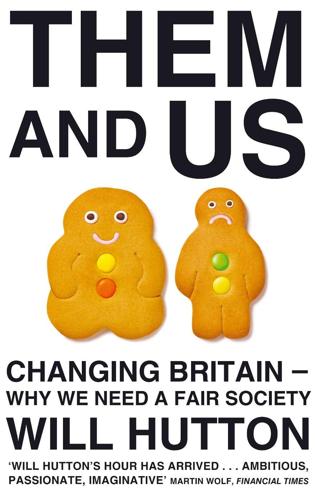
Them And Us: Politics, Greed And Inequality - Why We Need A Fair Society
by
Will Hutton
Published 30 Sep 2010
Policy-makers and bankers themselves had always been more attached to competition than regulation – it was intellectually and philosophically more acceptable, and it afforded huge opportunities to make serious money. But now there was a paradigm shift in the argument. Markets, bankers argued, would do better than the state. Banks, they claimed, needed more freedom to manage their balance sheets and risk in an environment of floating exchange rates and free capital movements. Leading the charge were the banking communities in New York and London, using all their influence, especially with free-market-inclined Conservative and Republican politicians, to break down rules and promote competition. Who, after all, could be against more competition?
…
But for big finance there remained no doubt that it was on the right track. There was already a vast pool of money available to the banks and other companies, managed by professional treasury managers – the so-called interbank money market. This had been developing since the 1960s and was given a huge boost when the era of floating exchange rates began. Companies, banks and even countries dealing in cash denominated in one of the world’s reserve currencies could lend to each other in that currency or access the interbank market in another reserve currency – principally the dollar and the yen, but also the pound, the Swiss franc and German mark – and hedge against the risk of potentially adverse, loss-making movements.
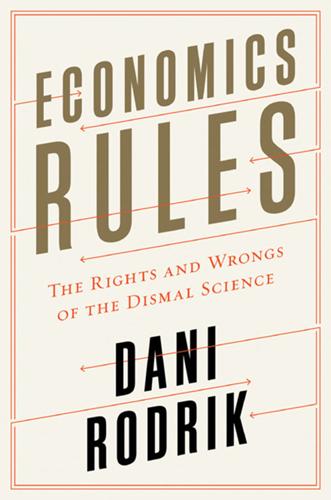
Economics Rules: The Rights and Wrongs of the Dismal Science
by
Dani Rodrik
Published 12 Oct 2015
Greg Mankiw, the Harvard professor and author of a leading economics textbook, provided a list in his blog a few years back.3 Here are some of the top ones (the numbers in parentheses indicate the percentage of economists who agree with the proposition). 1. A ceiling on rents reduces the quantity and quality of housing available. (93%) 2. Tariffs and import quotas usually reduce general economic welfare. (93%) 3. Flexible and floating exchange rates offer an effective international monetary arrangement. (90%) 4. Fiscal policy (for example, tax cuts and/or government expenditure increases) has a significant stimulative impact on a less than fully employed economy. (90%) 5. The United States should not restrict employers from outsourcing work to foreign countries. (90%) 6.
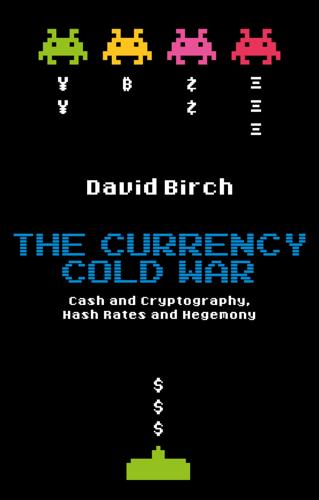
The Currency Cold War: Cash and Cryptography, Hash Rates and Hegemony
by
David G. W. Birch
Published 14 Apr 2020
The pre-eminent example of the former category is the IMF’s special drawing right (SDR). The SDR (which, confusingly, has the ISO 4217 code ‘XDR’) was created as a supplementary international reserve asset in the context of the Bretton Woods fixed exchange rate system. After the collapse of that system in 1973, the shift of major currencies towards floating exchange rate regimes lessened our reliance on the SDR as a global reserve asset. It was initially defined as equivalent to 0.888671 grams of fine gold, which, at the time, was equivalent to one US dollar. In 1973, the SDR was redefined as a basket of currencies. This basket (last reviewed in 2015) is made up of five major world currencies, as shown in table 8.
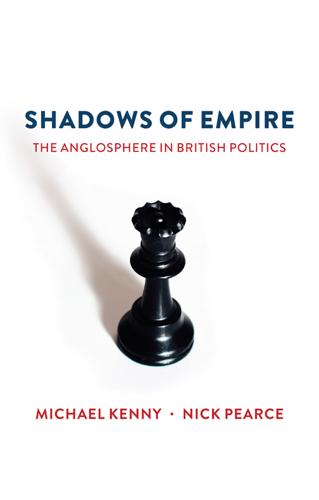
Shadows of Empire: The Anglosphere in British Politics
by
Michael Kenny
and
Nick Pearce
Published 5 Jun 2018
It was simultaneously embarking on major rises in military and social spending under conditions of full employment and, in so doing, putting enormous pressure on the dollar. The dollar was overvalued and the international monetary system that had supported its global role could no longer be patched up through the bilateral currency swaps and gold pool arrangements that had been used in the 1960s. Efforts to repair it failed. By 1973, floating exchange rates had become entrenched, and currency fluctuations became the shock absorbers of the global economy. The sterling area finally disappeared. The collapse of Bretton Woods inaugurated an era in which the governing frameworks of Anglo-American political economy changed profoundly. The managed international monetary system in which both the USA and the UK had a stake, as sovereigns of the world's two major currencies, was gradually replaced by a liberalised economic order under renewed American leadership.
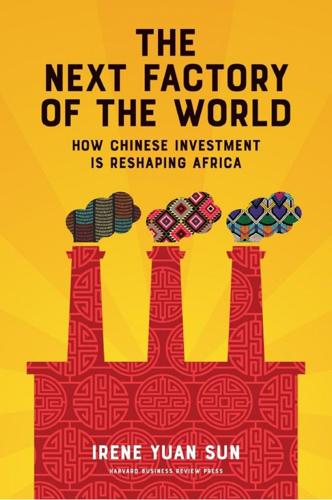
The Next Factory of the World: How Chinese Investment Is Reshaping Africa
by
Irene Yuan Sun
Published 16 Oct 2017
In 1986, with no other options left, Nigeria accepted the IMF’s Structural Adjustment Program, a package of emergency loans that gave it a much-needed fiscal lifeline in exchange for acceptance of Washington Consensus policies of privatization and liberalization of the economy. A main thrust was the adoption of a floating exchange rate program with no predefined rates of change. From an exchange rate of roughly 2 naira to US$1 at the beginning of the program, the naira depreciated to 4 in 1987, to 10 in 1991, and further to 22 in 1998.15 By the time I met Lawrence Tung, in 2013, the rate was 165 naira to the dollar. For textile mills, the continued drop in the currency’s value was devastating, because they could no longer afford to import needed spare parts and machinery, and decades of importing them meant that no domestic suppliers existed to fill those needs.
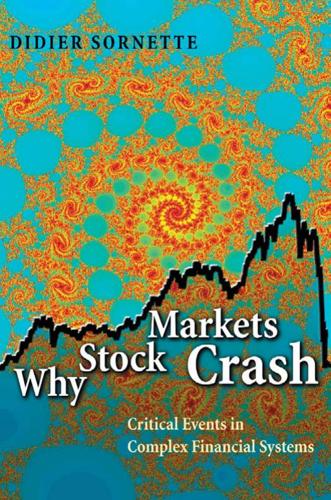
Why Stock Markets Crash: Critical Events in Complex Financial Systems
by
Didier Sornette
Published 18 Nov 2002
But hints that a devaluation might be looming can cause massive speculation against the vulnerable currency, as we shall discuss in chapter 8. See also [248] for an eye-opening description of the conundrums of monetary policies. With the end of Bretton Woods in the early 1970s, the market for foreign currency grew rapidly in both size and instability. The liberalization of capital flows that followed the adoption of floating-exchange rates brought vastly larger flows of capital between nations. The first naive presumption is that the exchange rate between two currencies, say the U.S. dollar and the European euro (since January 1999), would be determined by the needs of trade: by North Americans trading with Europeans for euros in order to buy European goods, and conversely.
…
Since these investment demands are highly variable, including a fluctuating component of speculation, currency values prove volatile and prone to the same forces as described in chapters 4 and 5 for stocks and general financial markets. Such forces proved to be at the origin of the speculative bubble on the dollar in the first half of the 1980s [340]. The role of monetary policy allowed by the floating-exchange rate was particularly clear in the context of the large deficit of the U.S. federal budget in the early 1980s, which led to fears that inflation would go sky-high. According to supporters of monetary policy, the key to controlling inflation was that the Federal Reserve did not pump up the money supply too much.
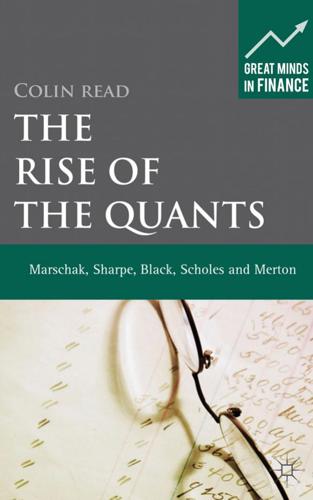
The Rise of the Quants: Marschak, Sharpe, Black, Scholes and Merton
by
Colin Read
Published 16 Jul 2012
Long Term Capital Management’s strategy was very profitable so long as the market continued on a trajectory that had been maintained ever since the company’s inception. However, in July 1997, a financial contagion began in East Asia and spread around the world. It began when Thailand decided to end the fixed exchange rate regime that had pegged the value of its currency, the baht, to the US dollar. Once it moved to a floating exchange rate regime, the baht depreciated significantly, and its public debt, much of which was denominated in US dollars, ballooned dramatically. The Thai government was unable to meet its ongoing debt obligations and it was technically in default. As a consequence of the default, there was an immediate flight out of the baht and the currencies of other neighboring nations.
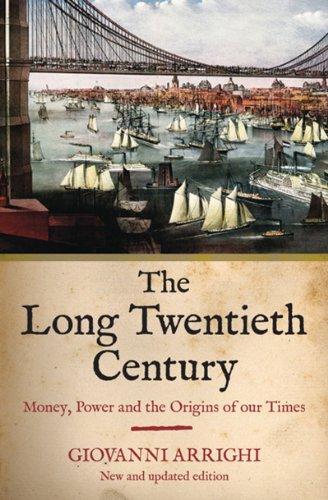
The Long Twentieth Century: Money, Power, and the Origins of Our Times
by
Giovanni Arrighi
Published 15 Mar 2010
It was during these years that deposits in the so-called Eurodollar or Eurocurrency market experienced a sudden upward jump followed by twenty years of explosive growth. And it was during these same six years that the system of fixed parties between the main national currencies and the US dollar and between the US dollar and gold, which had been in force throughout the phase of material expansion, was abandoned in favor of the system of flexible or floating exchange rates — a system which some (e.g. Aglietta 1979b: 831) regard not as a system at all, but as the form taken by the crisis of the pre-existing system. These were distinct but mutually reinforcing developments. On the one hand, the accumulation of a growing mass of world liquidity in deposits that no government controlled put increasing pressure on governments to manipulate the exchange rates of their currencies and interest rates in order to attract or repel liquidity held in offshore markets to counter shortages or surfeits in their domestic economies.
…
Instead of decreasing, the importance of the US dollar as world money increased, and what had previously existed informally was now established formally (Cohen 1977: 232-8). For about five years, from 1973 to 1978, this pure dollar standard seemed to endow the US government with an unprecedented freedom of action in the production of world money: The system of floating exchange rates . . . eliminated any need for the United States to control its own balance of payments deficit, no matter what its source, because it was now possible to release unlimited quantities of non-convertible dollars into international circulation. Therefore, while continuing to depreciate the dollar in an attempt to recover competitivity in the production of goods, the United States was no longer saddled with the problem of generating a current account surplus with which to finance its capital-account deficit. . . .
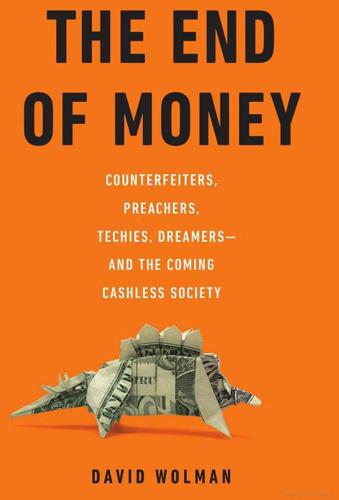
The End of Money: Counterfeiters, Preachers, Techies, Dreamers--And the Coming Cashless Society
by
David Wolman
Published 14 Feb 2012
Hub Culture’s currency, Ven, is an attempt to bridge the divide between virtual currencies and real-world goods and services. People in the network transact in the “local” currency, which is priced from a basket of major sovereign currencies, commodities, and carbon futures. Your Ven can be exchanged for one of the major national currencies based on the same floating exchange rates that govern the value of world currencies against one another. Bitcoin has captured peoples’ imaginations because the money supply is determined by an algorithm, not bureaucrats or economists, and there is a cap to the number of Bitcoins that can be created: 21 million. Two related experiments are the Wuffie Bank and Serios.
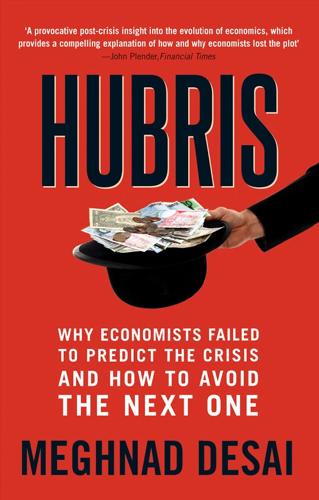
Hubris: Why Economists Failed to Predict the Crisis and How to Avoid the Next One
by
Meghnad Desai
Published 15 Feb 2015
The decision of a group of developed sovereign countries to revive something akin to a Gold Standard in the twenty-first century requires a bit of explanation. We have to go back to the 1970s when the old Bretton Woods arrangement of fixed exchange rates broke down. Countries were on a de facto flexible or floating exchange rate system. This was a regime for which there were no road maps. Western European countries had previously come together in an arrangement that was called the Common Market (it was later renamed the European Economic Community, EEC). France, the Federal Republic of Germany, Italy, the Netherlands, Belgium and Luxemburg were the original members of what was in effect a customs union.
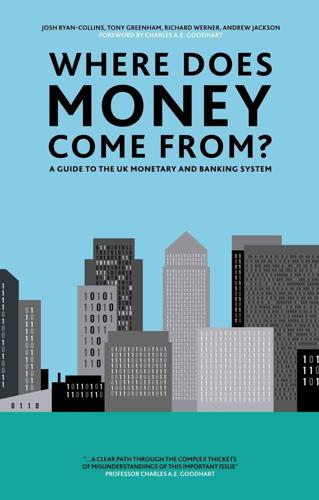
Where Does Money Come From?: A Guide to the UK Monetary & Banking System
by
Josh Ryan-Collins
,
Tony Greenham
,
Richard Werner
and
Andrew Jackson
Published 14 Apr 2012
The key point to note is foreign exchange transactions do not affect the level of reserves in aggregate in the banking system; they merely transfer reserves between banks. 6.4.2. Different exchange rate regimes As discussed in Section 3.6, the UK has moved from having a gold-backed currency to a pegged exchange rate and finally to a free-floating exchange rate. In this section we briefly review these different models and their relation to monetary policy. When countries adhered to the gold standard, their exchange rate was determined by an agreement to exchange notes for a fixed quantity of gold. However, it is also possible to have a fixed exchange rate regime with a fiat currency, as was the case before in Europe just before the introduction of the euro.
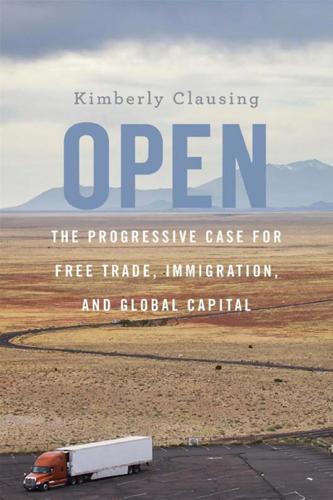
Open: The Progressive Case for Free Trade, Immigration, and Global Capital
by
Kimberly Clausing
Published 4 Mar 2019
Some suggest that, if the United States wants to reduce its trade deficit, it should pay more attention to the value of the US dollar in international markets. However, most major economies—the Eurozone (as a whole), Japan, the United Kingdom, Australia, Canada, and the United States—have floating exchange rates. In other words, the sellers and buyers of currency determine the value of exchange rates in the foreign currency markets, leaving little room for the Federal Reserve and other central banks to affect exchange rates in these countries. This is likely for the best, since monetary policy (the actions of the central bank) can then be devoted to more useful ends, like working to counter recessions.
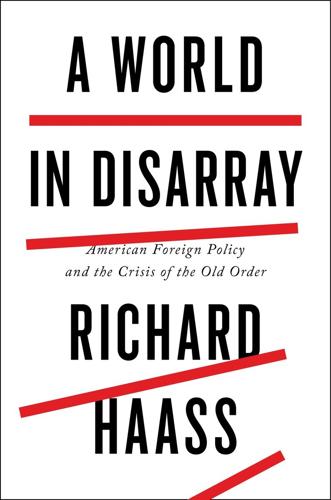
A World in Disarray: American Foreign Policy and the Crisis of the Old Order
by
Richard Haass
Published 10 Jan 2017
What also occurred was a falling off of domestic political support for trade pacts in the United States and many other countries, casting uncertainty over future efforts to promote a more open world trading system. There was arguably less formal governance but still significant coordination on the monetary side. The principal characteristics of the era were floating exchange rates, central bank independence, and dollar dominance. The IMF assessed (“surveilled”) economies and gave them public report cards but had no power to insist on reforms other than when it was involved in extending loans to governments in financial difficulty. In the banking arena, the so-called Basel Committee established standards (for example, for the amount of capital required to be kept on hand) that banks were encouraged to follow.
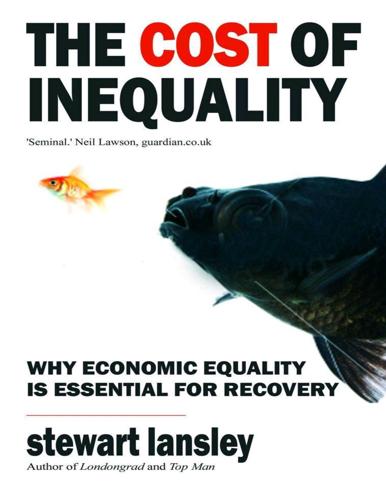
The Cost of Inequality: Why Economic Equality Is Essential for Recovery
by
Stewart Lansley
Published 19 Jan 2012
The liberalisation of global capital markets and the sweeping away of domestic controls over credit enabled global finance a gradual return to the supremacy it had last enjoyed in the nineteenth century. In the post-war era, the international finance industry was a highly regulated system with largely fixed exchange rates and heavy restrictions on capital flows. By the mid-1980s, it was marked by lax regulations on lending, the free mobility of capital and for most countries, freely floating exchange rates. Moreover the other pillars of the market experiment adopted in the US and the UK—the weakening of unions, the axing of business regulations and the switch from maintaining employment to fighting inflation—also served to re-concentrate power in the hands of the leaders of the global finance industry.
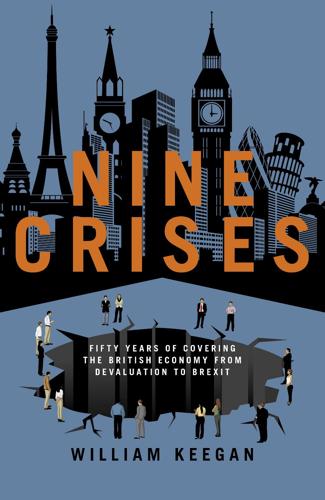
Nine Crises: Fifty Years of Covering the British Economy From Devaluation to Brexit
by
William Keegan
Published 24 Jan 2019
But when the Bretton Woods system broke down in 1971–73 – with the Nixon administration no longer being prepared to support the rates of other currencies against the US dollar, which was itself devalued – the world embarked on not so much a system as a non-system of ‘floating rates’. Once the major nations embarked on a world of floating exchange rates, there could be wild gyrations in those rates. It was concern about these in the course of the 1970s that contributed to the decision on the part of Chancellor Schmidt, President Giscard and Roy Jenkins to press for ‘a zone of monetary stability’ in Europe, which led to the setting up of the European Monetary System.

When the Money Runs Out: The End of Western Affluence
by
Stephen D. King
Published 17 Jun 2013
Admittedly, the establishment of a eurozone ‘bad bank’ would leave eurozone taxpayers to pick up the bill. That, however, would be small price to pay if, as a result, nations within the single currency were then able to thrive: far better to have orderly losses than a catastrophic collapse. DEALING WITH DEBT: COUNTRIES WITH FLOATING EXCHANGE RATES The great advantage of an independent monetary policy is the ability to delay until tomorrow what might otherwise be necessary today. It's easy enough, for example, to see that the US, the UK and Japan – all of which have ropey fiscal positions, at least judged by post-war standards – have been under no real pressure to deliver austerity with the savage urgency required of nations in southern Europe.

Life After Google: The Fall of Big Data and the Rise of the Blockchain Economy
by
George Gilder
Published 16 Jul 2018
Millions of Chinese hackers take the lead, obsessively deploying petaflops—thousands of trillions of floating-point operations per second—to simulate the extraction process. Like gold standards through most of human history—look it up—T’Rain’s virtual gold standard is an engine of wealth. T’Rain prospers mightily. Even though its money is metafictional, it is in fact more stable than currencies in the real world of floating exchange rates and fiat money. Down here, for example, the U.S. government deploys its own computer power to fabricate dollars by the trillions out of thin air to pay its bills. Goldman Sachs deploys rackfuls of computer power linked by fiber-optic lines at the speed of light to extract lucrative margins out of prestidigitory trading in nanoseconds with nary a reference to real values.
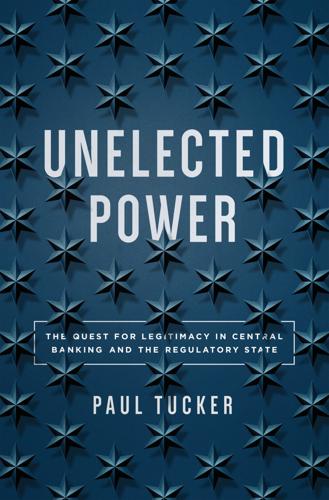
Unelected Power: The Quest for Legitimacy in Central Banking and the Regulatory State
by
Paul Tucker
Published 21 Apr 2018
At its heart, the system relied on the dollar holding its value against gold, but the US authorities proved unable to square that with their foreign and domestic policy priorities. The Bretton Woods framework collapsed in the early 1970s under the weight of US fiscal profligacy and inflationary incontinence. Since then, most countries have opted for a floating exchange rate with domestic (or, as in the euro area, regional) control of monetary policy. Technically, each jurisdiction is free under IMF treaty rules to adopt capital controls, but the strong norm has been that they do not do so. This was a world, most thought, in which the effects of one country’s monetary policy on others would be confined to shifts in exchange rates, leaving national economies to manage their own domestic monetary course in the interests of their own citizens.
…
Another demand-side force was the community of central bankers and monetary economists. Of course, CBI would increase their power and influence, but they did have arguments. Even under the Bretton Woods regime, under which most countries pegged their currency to the dollar, itself pegged to gold, Chicago economist Milton Friedman and others were making the case that floating exchange rates would permit smoother adjustment to international current account imbalances. But precisely because that would restore domestic monetary sovereignty, it posed the question of how politicians could be deterred from abusing the monetary power. After Bretton Woods collapsed, those issues could not be ducked, prompting a quarter-century-long debate about rules versus discretion (as told in the next chapter).
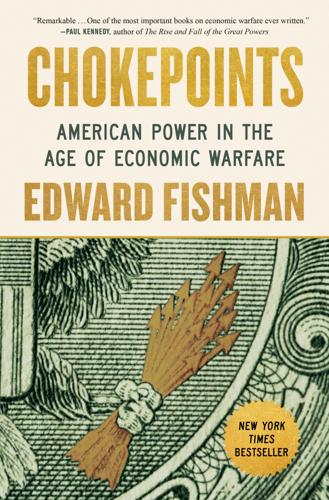
Chokepoints: American Power in the Age of Economic Warfare
by
Edward Fishman
Published 25 Feb 2025
To confront the “speculators” who were “waging all-out war on the American dollar,” Nixon declared that the United States would no longer honor requests to convert dollars for gold. In one fell swoop, the announcement cut down the central pillar of Bretton Woods and essentially forced the global financial system to adopt floating exchange rates. Under Bretton Woods, currency values had been set by agreement among governments; after the “Nixon shock,” they were set by the market. It was the dawn of a new era for the world economy—one in which financial markets, contrary to Keynes’s wishes, would reign supreme. Many contemporary observers viewed the Nixon shock as the end of U.S. economic hegemony.
…
But in an ironic turn, this decline marked only a new phase of U.S. economic dominance. America’s preeminence in manufacturing and trade was fading, but its supremacy in international finance was about to begin. 4 The Deal in the Desert The year 1973 was rough for the United States. The economy was in the dumps. The end of Bretton Woods and the new system of floating exchange rates had caused the dollar to plunge. Years of heavy spending on the Vietnam War had degraded America’s financial health. Inflation soared to heights last seen in the 1940s. Instead of focusing on confronting these headwinds, Richard Nixon floundered to contain the Watergate scandal. To make matters worse, America was rapidly declining as an energy superpower and losing its traditional status as the swing producer in the global oil market.
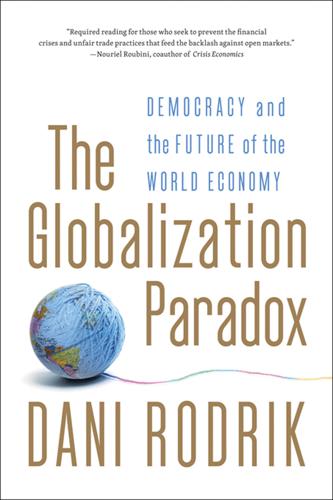
The Globalization Paradox: Democracy and the Future of the World Economy
by
Dani Rodrik
Published 23 Dec 2010
The missing ingredients would be brought into the picture much later as the problems of free finance became more apparent. The painful lessons of the interwar period would have to be relearned. Currency floating, in particular, worked very differently from what most economists expected at the time. By the 1980s, “excessive volatility” and “misalignment” had become bywords for floating exchange rates. As these pieces of economist’s jargon suggest, there were two problems: currency values fluctuated too much on a day-to-day basis; and there were prolonged periods of currency under-or overvaluation that created difficulties at home and for trade partners. Consider the travails of the British pound.
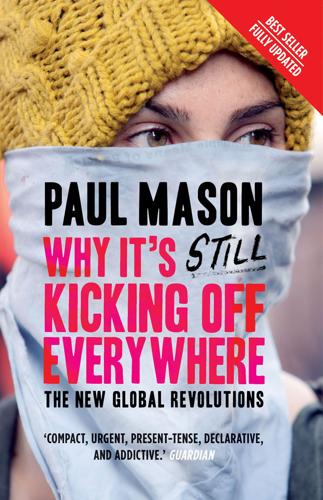
Why It's Still Kicking Off Everywhere: The New Global Revolutions
by
Paul Mason
Published 30 Sep 2013
It was Ben Bernanke’s book on the Great Depression that taught us the monetarist truism: ‘To an overwhelming degree the evidence shows that countries that left the Gold Standard recovered from the Depression more quickly than countries that remained on gold.’23 The lesson is this: he who devalues his currency first escapes the crisis first. In the 1930s, tight monetary policy, driven by adherence to gold, exacerbated the depression. This time there is no Gold Standard, but a system of free-floating exchange rates. Britain was first out of the blocks to devalue—the governor of the Bank of England, Mervyn King, told colleagues privately that he was proud of his contribution to the 20 per cent slide of sterling after 2008. America launched an effective devaluation strategy with QEII, despite simultaneously claiming to be for ‘a strong dollar’.

Rogue States
by
Noam Chomsky
Published 9 Jul 2015
That was a period, roughly up until about 1970, a period of historically unprecedented growth of the economy, of trade, of productivity, of capital investment, extension of welfare state measures, a golden age. That was reversed in the early ‘70s. The Bretton Woods system was dismantled, with liberalization of financial markets and floating exchange rates. The period since has often been described as a “leaden age.” There was a huge explosion of very short-term, speculative capital, completely overwhelming the productive economy. There was marked deterioration in just about every respect—considerably slower economic growth, slower growth of productivity, of capital investment, much higher interest rates (which slow down growth), greater market volatility, and financial crises.
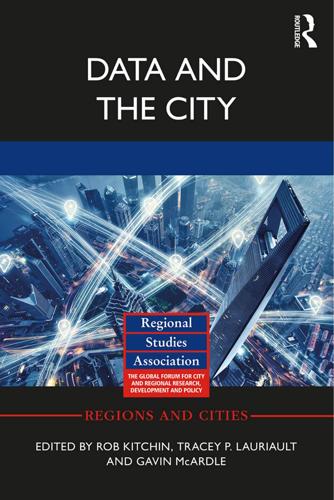
Data and the City
by
Rob Kitchin,Tracey P. Lauriault,Gavin McArdle
Published 2 Aug 2017
As global trade required ‘modern’ organization through the early part of the twentieth century, the Bretton Woods agreement was signed in 1944 by committed countries in order to maintain exchange rates to a fixed value in terms of gold. On its failure in 1971 – due to the dollar’s inability to retain value in the light of a global recession – the detachment of monetary value from a mineral ore to a new system of floating exchange rates ‘de-materialized’ money (Harvey 1990). As the representation of value continues to become further abstracted from goods and services, for example, through electronic BACS transfers and online and mobile banking, we soon arrive at the role of money in society today. In the abstraction of value from a material representation to a promissory token, both time and identity become obfuscated.

MegaThreats: Ten Dangerous Trends That Imperil Our Future, and How to Survive Them
by
Nouriel Roubini
Published 17 Oct 2022
From then on, the dollar would be a floating currency, with exchange rates for other countries’ currencies determined by the free market. Without a gold standard to restrict the money supply, the United States had new policy options. It could print money, cut interest rates to encourage lending, and let the dollar weaken over time. Moving from fixed to floating exchange rates caused dollars to lose value vis à vis other currencies. Surging imports got more expensive. Increased prices fed inflation. In this new climate, a group of stocks flourished. Investors poured their faith into so-called one-decision blue chip stocks with resilient earnings and P/E ratios.
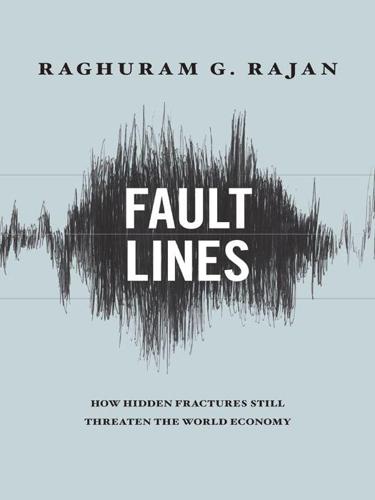
Fault Lines: How Hidden Fractures Still Threaten the World Economy
by
Raghuram Rajan
Published 24 May 2010
The Response to the Dot-Com Bust After the crash in the NASDAQ index in 2000–2001 and the recession that followed, the Federal Reserve tried to offset the collapse in investment by cutting short-term interest rates steadily. From a level of 6½ percent in January 2001, interest rates were brought down to 1 percent by June 2003. Such a low level, unprecedented in the post-1971 era of floating exchange rates, sent a strong signal to the economy. House purchases picked up as more people found they could afford the lower mortgage payments. Increased housing demand encouraged more home construction, which was already being given a boost by the low interest rates at which developers could borrow.
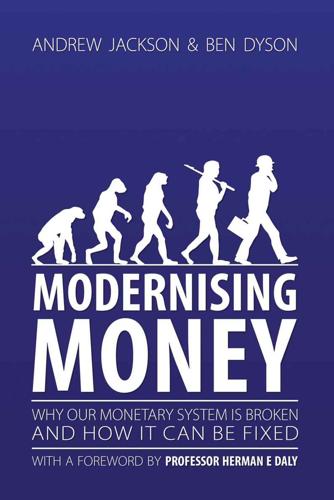
Modernising Money: Why Our Monetary System Is Broken and How It Can Be Fixed
by
Andrew Jackson (economist)
and
Ben Dyson (economist)
Published 15 Nov 2012
Despite the huge government deficits run up during the war, the destruction of large swathes of Europe, and a highly repressed financial system, from 1945 to 1971 growth was uniformly high and unemployment very low. For these reasons this period is commonly referred to as the golden age of capitalism. Floating exchange rates Between 1945 and 1971 a new dynamic developed. By international agreement, oil had always been priced in US dollars and as a consequence the oil exporting nations of the Middle East had amassed a substantial surplus of dollars, invested mainly in US Government securities (bonds). By 1965, the French President, Charles de Gaulle, was decrying the world’s dependence on the US dollar and calling for a return to a national gold standard, and in 1971 Switzerland and France each demanded redemption in gold of its central bank’s holdings of dollars.
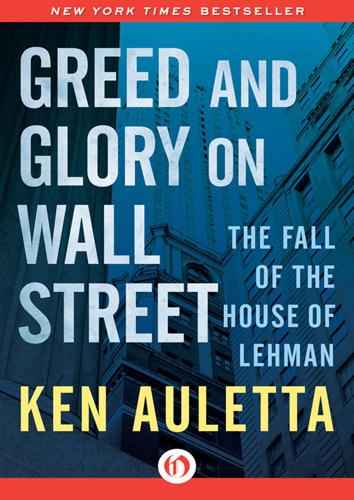
Greed and Glory on Wall Street: The Fall of the House of Lehman
by
Ken Auletta
Published 28 Sep 2015
The State Department was not focused on international finance, and National Security Adviser Henry Kissinger was preoccupied with other matters, including a miserable war in Vietnam. Peterson supervised the principal staff work leading to the replacement of the international gold standard with a floating exchange rate. Working with Kissinger, he helped prepare for the Nixon-Brezhnev Summit of 1972, and chaired important trade negotiations with the Soviet Union, Poland and Japan. In the first volume of his memoirs, White House Years, Henry Kissinger says of Peterson’s appointment: I agreed enthusiastically when, at OMB Director George Shultz’s urging, the new post of Assistant to the President for International Economic Affairs was created at the White House—though it technically represented a diminution of my power.

What's Next?: Unconventional Wisdom on the Future of the World Economy
by
David Hale
and
Lyric Hughes Hale
Published 23 May 2011
FEEDBACK LOOP: A channel or pathway that is formed by an “effect” returning to its “cause”; it generates either more or less of the same effect. FIAT MONEY: Money that has value solely through governmental decree, not through any intrinsic value or ability to be redeemed for specie or commodity. FLOATING EXCHANGE RATE: When the value of a currency is allowed to fluctuate according to market forces and is not fixed by government entities. FOREIGN DIRECT INVESTMENT: Investment of foreign assets into domestic structures, equipment, and organization. Excludes foreign investment in domestic stock markets. FOREIGN EXCHANGE RESERVES: Liquid assets held by a central bank or government entity that are used to intervene in the foreign exchange market.
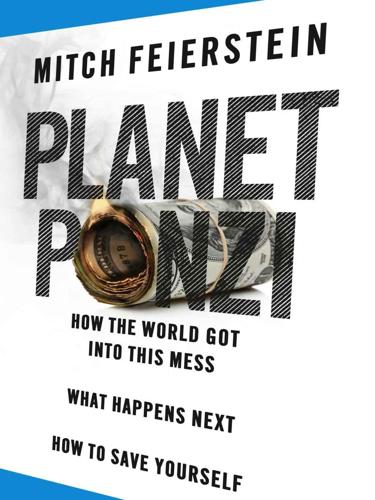
Planet Ponzi
by
Mitch Feierstein
Published 2 Feb 2012
Wall Street was still a minor player in the scheme of things, but a feisty one, a growing one. No other sector had grown at that rate. Even the computer industry, in the age of the PC and the mass-produced silicon chip, had not grown that fast. That turbocharged growth was fueled by two principal ingredients. First, the advent of floating exchange rates in 1971 had gradually led to the dismantling of international controls on the movement of capital. As capital started to become ever more mobile, Wall Street firms were ideally placed to skim a little froth from the river of money as it passed on through.2 Secondly, Wall Street had perfected the art of ‘disintermediation.’

The Blockchain Alternative: Rethinking Macroeconomic Policy and Economic Theory
by
Kariappa Bheemaiah
Published 26 Feb 2017
As the century rolled on it was this form of money that evolved into fiat money, which is currently used by modern economies. Fiat currencies came into use in 1971 following the decision of President Nixon to discontinue the use of the gold standard. The end of the gold standard helped sever the ties between world currencies and real commodities and gave rise to the floating exchange rate. A distinguishing feature between commodity-backed currencies and fiat currencies, however, is the fact that it is based on trust and not a tangible value per se. Fiat currency is backed by a central or governmental authority and functions in purpose as a legal tender that it will be accepted by other people in exchange for goods and services.
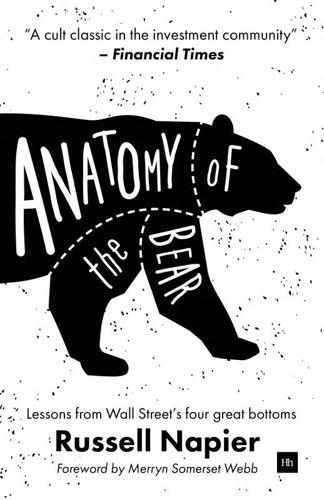
Anatomy of the Bear: Lessons From Wall Street's Four Great Bottoms
by
Russell Napier
Published 18 Jan 2016
Given the structural changes in the economy one might have expected proclivity to undervaluation to have diminished. Throughout the century, the elasticity of the US currency increased. There was the move from the gold standard to one of gold exchange standard, implementation of Bretton Woods, and then a free-floating exchange rate. The increasing ability of the Federal Reserve to provide a monetary response in periods of distress might suggest that the return of equities to fire-sale prices would become less prevalent. It is interesting that such a phenomenon is not evident in the data. The oscillation of the q ratio around the geometric mean does not appear to be any more volatile in the first half of the century than it was in the second.

The Ascent of Money: A Financial History of the World
by
Niall Ferguson
Published 13 Nov 2007
It can mean deflation, if the supply of the peg is constrained (as the supply of gold was relative to the demand for it in the 1870s and 1880s). And it can transmit financial crises (as happened throughout the restored gold standard after 1929). By contrast, a system of money based primarily on bank deposits and floating exchange rates is freed from these constraints. The gold standard was a long time dying, but there were few mourners when the last meaningful vestige of it was removed on 15 August 1971, the day that President Richard Nixon closed the so-called gold ‘window’ through which, under certain restricted circumstances, dollars could still be exchanged for gold.
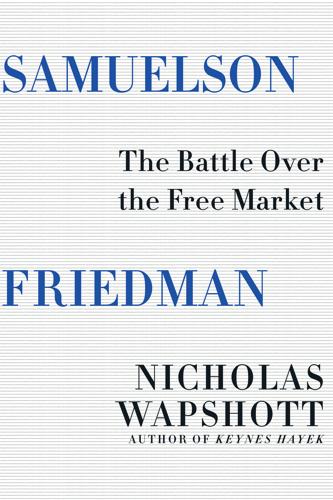
Samuelson Friedman: The Battle Over the Free Market
by
Nicholas Wapshott
Published 2 Aug 2021
In turn, banks were given leeway to set interest rates as they thought fit. Volcker was aware he was setting out on a mighty gamble: I was as skeptical of the extreme claims of [Friedman’s monetarist school] about the virtues of constant money growth as I had been about the efficacy of floating exchange rates in escaping our external constraints. But shorn of some of those extreme claims, the [quantity of money] approaches … seemed worth looking at again.33 He hoped the new emphasis on monetary targets would undermine the widespread assumption that prices were sure to rise, which fed into expectations of future inflation that set the bar for wage demands and purchasing decisions.
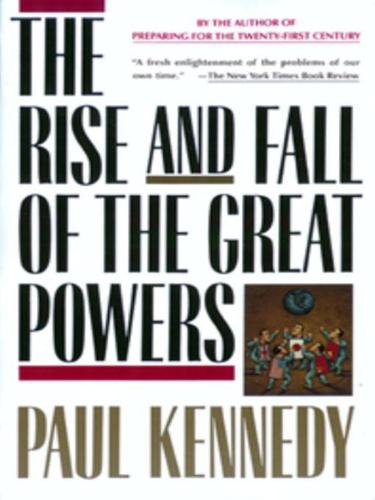
The Rise and Fall of the Great Powers: Economic Change and Military Conflict From 1500 to 2000
by
Paul Kennedy
Published 15 Jan 1989
If anything, the growth in the number of professional statisticians employed by governments and by international organizations and the development of much more sophisticated techniques since the days of Mulhall’s Dictionary of Statistics have tended to show how difficult is the task of making proper comparisons. The reluctance of “closed” societies to publish their figures, differentiated national ways of measuring income and product, and fluctuating exchange rates (especially after the post-1971 decisions to abandon a gold-exchange standard and to adopt floating exchange rates) have all combined to cast doubt upon the correctness of any one series of economic data.189 On the other hand, a number of statistical indications can be used, with a reasonable degree of confidence, to correlate with one another and to point to broad trends occurring over time. The first, and by far the most important, feature has been what Bairoch rightly describes as “a totally unprecedented rate of growth in world industrial output”190 during the decades after the Second World War.
…
Because of the growing integration of the world economy, the volume of trade both in manufactures and in financial services is much larger than ever before, and together may amount to some $3 trillion a year; but that is now eclipsed by the stupendous level of capital flows pouring through the world’s money markets, with the London-based Eurodollar market alone having a volume “at least 25 times that of world trade.”239 While this trend was fueled by events in the 1970s (the move from fixed to floating exchange rates, the surplus funds flowing from OPEC countries), it has also been stimulated by the U.S. deficits, since the only way the federal government has been able to cover the yawning gap between its expenditures and its receipts has been to suck into the country tremendous amounts of liquid funds from Europe and (especially) Japan—turning the United States, as mentioned above, into the world’s largest debtor country by far.240 It is, in fact, difficult to imagine how the American economy could have got by without the inflow of foreign funds in the early 1980s, even if that had the awkward consequence of sending up the exchange value of the dollar, and further hurting U.S. agricultural and manufacturing exports.
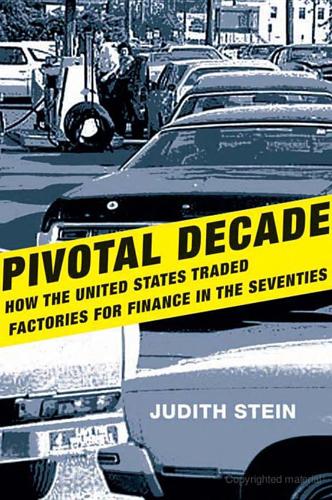
Pivotal Decade: How the United States Traded Factories for Finance in the Seventies
by
Judith Stein
Published 30 Apr 2010
Without growth, unemployment could not be reduced—the very reason that, unlike the United States, Germany and other European countries and Japan employed industrial policies and kept out goods from developing nations. The U.S. trade deficit jumped from $9.5 billion in 1976 to $31.1 billion in 1977 and $34 billion in 1978, despite a cheaper dollar.5 The increased openness of the U.S. economy—integrated finance, floating exchange rates, global trade, unencumbered capital flows—reduced the potency of Keynesian policies on the domestic economy. Some portion of the U.S. stimulus stimulated foreign economies. The United States was left with budget deficits, inflation, and rising imports. When imports flooded the U.S. market as a result of these policies, government blamed industry.
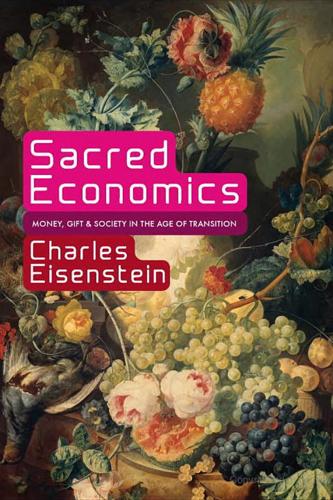
Sacred Economics: Money, Gift, and Society in the Age of Transition
by
Charles Eisenstein
Published 11 Jul 2011
Such currencies are often called complementary because they are separate from, and complementary to, the standard medium of exchange. While they are usually denominated in dollar (or euro, pound, etc.) units, there is no currency board that keeps reserves of dollars to maintain the exchange rate. They are thus similar to a standard sovereign currency with a floating exchange rate. In the absence of local government support, because complementary fiat currencies are not easily convertible into dollars, businesses are generally much less willing to accept them than they are proxy currencies. That is because in the current economic system, there is little infrastructure to source goods locally.
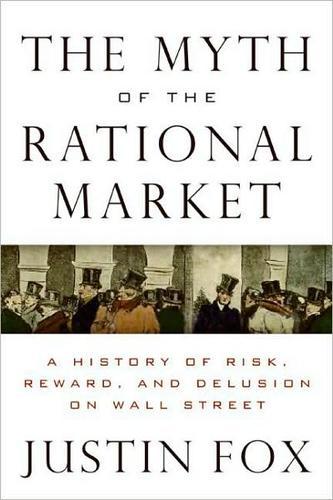
The Myth of the Rational Market: A History of Risk, Reward, and Delusion on Wall Street
by
Justin Fox
Published 29 May 2009
With the exception of cases where companies are about to be merged or otherwise removed from trading, the stock market is made up of securities conspicuously lacking in expiration dates. So how was it again that arbitrageurs are supposed to force stock prices back into line in the short term? Nobody had a good answer. Believers in the rational market often cited Milton Friedman’s 1951 plea for floating exchange rates or the 1950 paper by UCLA’s Armen Alchian that said inept economic actors would be weeded out by a Darwinistic process. Irrational traders would lose money and disappear from the scene, the thinking went, to be supplanted by rational ones. But this claim was basically just folklore. No one had ever offered a scientific explanation—let alone evidence—of how arbitrage was supposed to work on a market-wide scale.
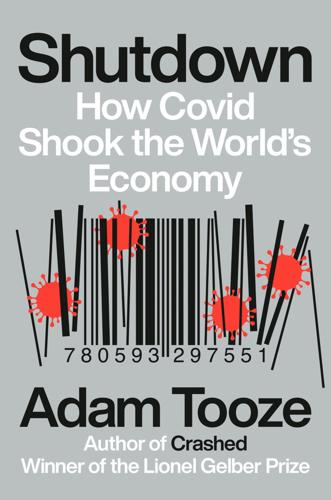
Shutdown: How COVID Shook the World's Economy
by
Adam Tooze
Published 15 Nov 2021
The place where this new era of ad hockery has been spelled out most clearly and with least inhibition is with regard to the toolkit of economic policy developed by the emerging markets. And no lesser authority than the IMF has put its seal on this development by publishing in 2020 what it called an “Integrated Policy Framework.” Abandoning any doctrinaire commitment to freedom of capital movement or freely floating exchange rates, the IMF outlined a tactical view of policy that acknowledged the need for pragmatic intervention. The challenge is to map and rationalize a path between “one size fits all” and “anything goes.”39 The condition of the freedom of maneuver enjoyed by the emerging markets in 2020 was the gigantic deluge of money unleashed by the advanced economies.
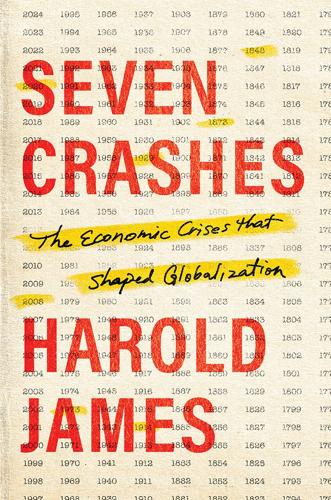
Seven Crashes: The Economic Crises That Shaped Globalization
by
Harold James
Published 15 Jan 2023
Pauly, The League of Nations and the Foreshadowing of the International Monetary Fund, Essays in International Finance 201 (Princeton: International Finance Section, Department of Economics, Princeton University, 1996). 116. Ragnar Nurkse, International Currency Experience: Lessons of the Interwar Experience (Geneva: League of Nations, 1944), 141; see also Michael D. Bordo and Harold James, “Haberler versus Nurkse: The Case for Floating Exchange Rates as an Alternative to Bretton Woods?” NBER Working Paper No. 8545, 2001. 117. Quoted in “British See Parley of ‘Real Issues,’” New York Times, July 10, 1944. 118. Quoted in Ed Conway, The Summit: The Biggest Battle of the Second World War (London: Little Brown, 2014), 278. 119. “Quota Issues Split World Trade Talks,” New York Times, July 5, 1944. 120.
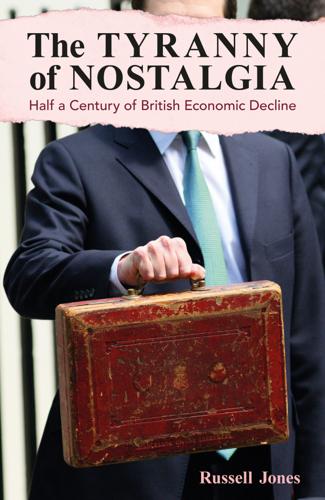
The Tyranny of Nostalgia: Half a Century of British Economic Decline
by
Russell Jones
Published 15 Jan 2023
Rather, the pros and cons of a devaluation within the existing system were already being explored within Whitehall as early as the autumn of 1991 – just a year after sterling had joined. The principal problem confronting the UK was German reunification. As the Bank of England acknowledged in early 1991, in a world of floating exchange rates, economic theory implied that reunification should result in a once-and-for-all increase in the Deutschmark’s real value.4 A realignment of the ERM based on a German revaluation lacked widespread support, however. Since the last general recalibration of central parities in January 1987, the ERM had increasingly been viewed by its members as a ‘fixed’, rather than a ‘fixed but adjustable’, exchange rate system.

Born in Flames
by
Bench Ansfield
Published 15 Aug 2025
But during the late 1960s, too many U.S. dollars were accumulating overseas due a host of factors: Vietnam War spending, an increase of imports relative to exports, the expansion of U.S. multinational corporations abroad, and the eagerness of U.S. banks to enter the London-based Eurodollar market, where they could benefit from higher interest rates than permitted by the Federal Reserve. Beginning in 1968, the gold-backed dollar endured crisis after crisis. In response, President Richard Nixon allowed the Bretton Woods system to collapse between 1971 and 1973, inaugurating our current era of floating exchange rates. The U.S. dollar remains the global reserve currency, but it is no longer convertible into gold.13 The fall of Bretton Woods made possible financialization in the United States and across the globe. Abandoning the gold standard “introduced both flexibility and volatility,” writes the scholar of neoliberalism David Harvey.
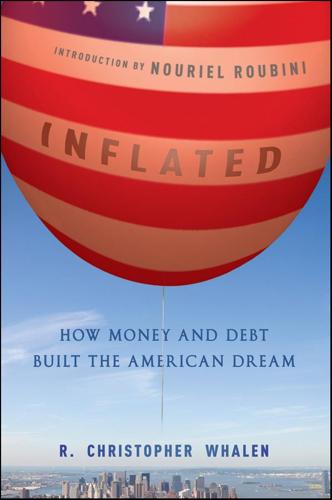
Inflated: How Money and Debt Built the American Dream
by
R. Christopher Whalen
Published 7 Dec 2010
Only a month after President Nixon announced his trip to China, he went on national television, announced that the United States was in the worst crisis since the Great Depression, and took the dollar off the gold standard. Nixon effectively devalued the U.S. currency for the second time in 40 years.28 In 1971 Nixon unilaterally ended the gold convertibility of the dollar, bringing an end to the Bretton Woods system of managed currencies and ushering in a period of floating exchange rates. Taking a page out of the Democratic playbook of Truman and FDR, Nixon also imposed a 90-day freeze on wages and prices and a 10 percent surcharge on imports. Following the Kennedy–Johnson administration in the United States, there was a massive effort to manage the marketplace, in part by controlling wages.
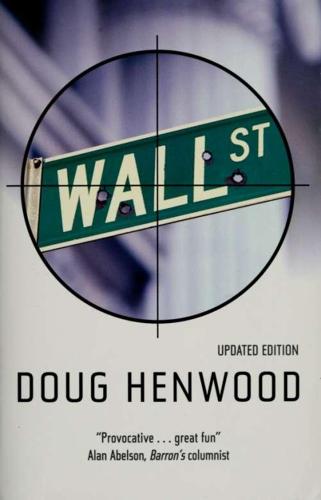
Wall Street: How It Works And for Whom
by
Doug Henwood
Published 30 Aug 1998
Cross-border movements of private capital were "driven to an important extent by expectations of exchange rate realignments," themselves driven largely by current-account considerations. Deficit countries, then, typically faced outflows, as capital tried to beat a coming devaluation; surplus countries faced inflows, as investors hoped to benefit from the likely revaluation. With the advent of floating exchange rates in 1973, these tendencies were only reinforced. Margaret Thatcher's prompt removal of exchange controls upon her ascension in 1979 set the tone for the 1980s. Ten years later, none of the major and few of the minor rich industrial countries significantly restricted the right of their citizens to hold foreign property.
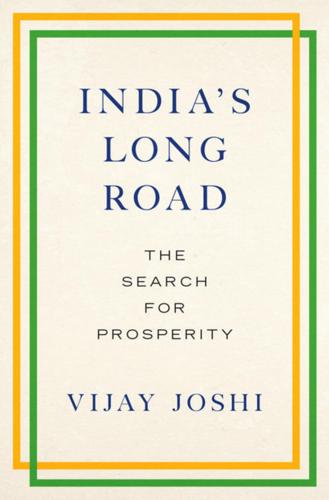
India's Long Road
by
Vijay Joshi
Published 21 Feb 2017
Then, strong inward capital flows resumed because a) it looked as if the worst of the crisis was over and India had come out of it in better shape than many countries; and b) Western governments slashed interest rates to very low levels and started ‘quantitative easing’, which raised the relative return on Indian assets. At this point, Subbarao appears to have had a change of heart. Perhaps he thought that a stronger rupee would be good for damping down inflation. Perhaps he was persuaded by the reports of some government committees that had advocated moving towards a floating exchange rate. He turned away from Reddy’s strategy of managing the rupee and allowed the exchange rate to be market-determined. In 12 months from April 2009, the rupee rose from $1 = Rs. 51 to $1 = Rs. 45, and remained around that level for another year. But Indian inflation was much faster than in other countries.
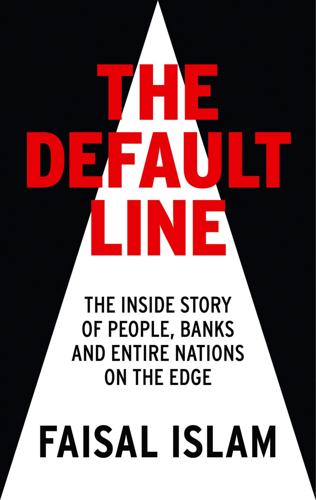
The Default Line: The Inside Story of People, Banks and Entire Nations on the Edge
by
Faisal Islam
Published 28 Aug 2013
The ultimate tool for Júlíusdóttir was to join the European Union and the Eurozone, but after losing the April 2013 general election, this seemed off the agenda. In the absence of the EU option, other economic thinkers on the island think that the way forward for a small open economy like Iceland is to copy the Asian countries. Iceland should have a managed floating exchange rate, and a large build-up of foreign-exchange reserves. ‘It has served the Asians well,’ says Guðmundsson at the Central Bank. So that’s an end to inflation targeting, and for the banks an end to the European single market. A single market without a single safety net in banking was one of the causes of Iceland’s excess.
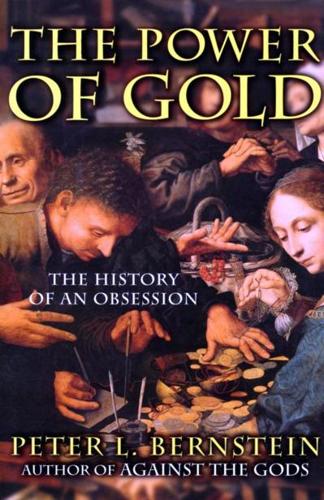
The Power of Gold: The History of an Obsession
by
Peter L. Bernstein
Published 1 Jan 2000
Isaac Newton: The Last Sorcerer. Reading, MA: AddisonWesley. Wilkie, A. D., 1994. "The Risk Premium on Ordinary Shares." A presentation to the Faculty of Actuaries and the Institute of Actuaries, London. Wimmer, Larry, 1975. "The Gold Crisis of 1869: Stabilizing or Destabilizing Speculation Under Floating Exchange Rates." Explorations in Economic History, 12, pp. 105-122. Wirth, Max, 1893. "The Crisis of 1890."Journal of Political Economy, 1, no. 2, pp. 214-235. Wright, Louis B., 1970. Gold, Glory, and the Gospel: The Adventurous Lives and Times of the Renaissance Explorers. New York: Atheneum. -A New History of Rome," Spectator 102 (January 2, 1909), pp. 20-21.
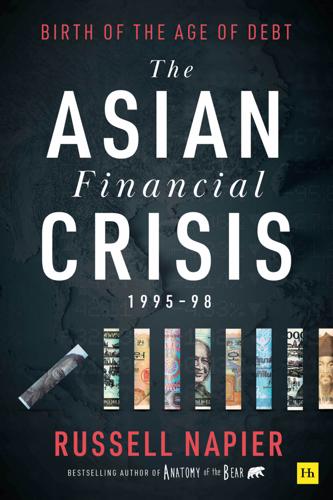
The Asian Financial Crisis 1995–98: Birth of the Age of Debt
by
Russell Napier
Published 19 Jul 2021
In Thailand in early 1997, inflation was stable to falling and investors expected it to move lower: by 1999, Thailand was reporting deflation. Many of those investing in Thailand still expected interest rates to decline as inflation expectations declined. This mistake was based upon an analysis that transferred their understanding of economics from the developed world, with floating exchange rates, to the emerging world, with managed exchange rates. One might have thought that lessons would be learned from using the same rules in two very different monetary systems. Perhaps for a while the lesson was learned, but in 1999 a new system of managed exchange rates was fixed in place through the creation of the euro.

The Quiet Coup: Neoliberalism and the Looting of America
by
Mehrsa Baradaran
Published 7 May 2024
To Hayek, all state action, especially toward “international cooperation,” was indistinguishable from serfdom. He favored the total privatization of industry, removing Bretton Woods barriers, and—although MPS members disagreed vehemently on this last part—a new monetary order, which would be based on either purely private money or a floating exchange rate of currencies. Hayek’s system would free capital to be invested worldwide, weakening state social safety-net spending but maintaining the economic strength of the Global North, given its vast capital advantage. If the new “sovereign” nations wished to build their native industries, they could apply for a “development loan” from the IMF and World Bank.
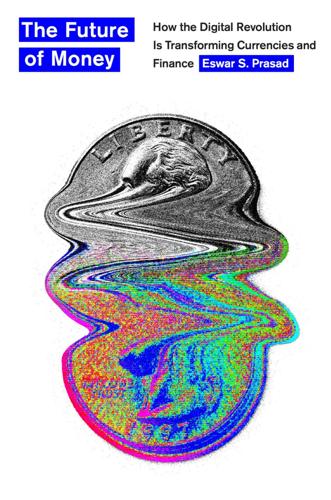
The Future of Money: How the Digital Revolution Is Transforming Currencies and Finance
by
Eswar S. Prasad
Published 27 Sep 2021
The PBC, however, continues to provide a morning fixing price for the renminbi-dollar exchange rate, which serves as the baseline price for trading on the Shanghai foreign exchange trading system. This fixing is in principle based on a survey of commercial banks. Miao (2019) argues that moving toward a freely floating exchange rate regime would benefit China and ought to take precedence over full capital account opening. Miao and Deng (2019) provide an insider perspective on China’s capital account liberalization. Is the e-CNY a Game Changer? For an alternative perspective on this subject, see Aditi Kumar and Eric Rosenbach, “Could China’s Digital Currency Unseat the Dollar?
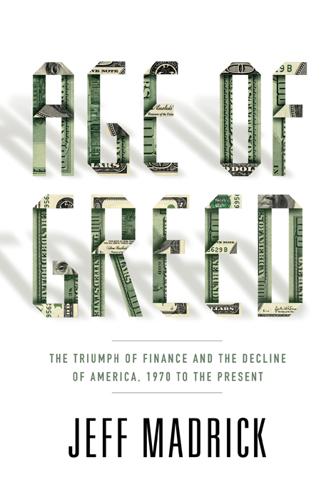
Age of Greed: The Triumph of Finance and the Decline of America, 1970 to the Present
by
Jeff Madrick
Published 11 Jun 2012
He wrote that Volcker’s harder-nosed monetarist approach was more or less dictated by the advisory group of bankers who met with the Fed regularly. Greider, Secrets of the Temple, p. 145. 12 OVERSIMPLIFICATION WAS PRECISELY WHY: Volcker later wrote, with what became characteristic ambiguity, “I was as skeptical of the extreme claims of that school about the virtues of constant money growth as I had been about the efficacy of floating exchange rates.… But shorn of some of those extreme claims, the approaches that had been debated (and half forgotten) seemed worth looking at again.” Volcker and Gyohten, Changing Fortunes, p. 167. 13 IN THE SAME BROOKINGS DISCUSSION: Volcker, “Monetary Policy,” in Feldstein, ed., American Economic Policy in the 1980s, p. 160. 14 VOLCKER FACED A DIFFICULT TASK: Greider, Secrets of the Temple, p. 105. 15 VOLCKER RETURNED EARLY: Schmidt and others wanted higher rates in the United States partly because the value of the U.S. dollar was falling against their currencies, reducing their exports to the U.S. 16 THE MONEY SUPPLY GREW MORE SLOWLY: There is typically a lag, but its duration is debatable. 17 “THE OCTOBER [1979] SPURT”: Greider, Secrets of the Temple, p. 140. 18 THE CREDIT CONTROLS WERE STRONGLY SUPPORTED: W.

The Rise of the Network Society
by
Manuel Castells
Published 31 Aug 1996
For the first time in history, a unified global capital market, working in real time, has emerged.16 The explanation, and the real issue, of the phenomenal volume of trans-border financial flows, as shown in chapter 2, lies in the speed of the transactions.17 The same capital is shuttled back and forth between economies in a matter of hours, minutes, and sometimes seconds.18 Favored by deregulation, disintermediation, and the opening of domestic financial markets, powerful computer programs and skillful financial analysts/computer wizards, sitting at the global nodes of a selective telecommunications network, play games, literally, with billions of dollars.19 The main card room in this electronic casino is the currency market, which has exploded in the past decade, taking advantage of floating exchange rates. In 1998, US$1.3 trillion were exchanged every day in the currency market.20 These global gamblers are not obscure speculators, but major investment banks, pension funds, multinational corporations (of course including manufacturing corporations), and mutual funds organized precisely for the sake of financial manipulation.21 François Chesnais identified about 50 major players in the global financial markets.22 Yet, as argued above, once turbulences are generated in the market, flows take over, as central banks have repeatedly learned to their heavy cost.

Winds of Change
by
Peter Hennessy
Published 27 Aug 2019
Hannay described the UK and France as ‘both boxing a bit above their weight, which demands a good deal of ingenuity and fleetness of foot if it is to be done successfully’.76 Hannay, who also served in Brussels as the UK’s Permanent Representative to the European Communities (he was cutting his diplomatic teeth in the Kabul Embassy in the early 1960s), is an accomplished calibrator of British influence across the multiple floating exchange rates of the world’s diplomatic markets. In the last days of 2017 – during another period of considerable anguish about our place in the world – he offered the MPs on the House of Commons Foreign Affairs Select Committee’s inquiry into ‘The UK’s influence in the UN’, a new metaphor-cum-performance indicator that he called ‘the trepidation index: do people mind about trampling on your toes more than on someone else’s toes?

Roller-Coaster: Europe, 1950-2017
by
Ian Kershaw
Published 29 Aug 2018
Bretton Woods was no longer sustainable. On 15 August 1971 President Richard Nixon suddenly announced a dramatic shift in American policy: amid a raft of anti-inflationary measures, he suspended the gold convertibility of the dollar. With that move, the Bretton Woods system – the basis of the post-war economy – was dead. Floating exchange rates were the future. But they entailed further uncertainties for the international economy. How to manage them was the new problem – and would rapidly create difficulties. No patent solution was found. All proposals foundered on the issue, faced by economies of quite varying strength and not least by the central US economy, of combating the worrying rise in inflation without resorting to classical deflationary measures of such severity that they would undermine growth, hugely increase unemployment (with all its attendant social and political consequences), and perhaps plunge the world into a new great depression.

A History of Modern Britain
by
Andrew Marr
Published 2 Jul 2009
Had the IMF crisis not happened would the ‘winter of discontent’ and the Bennite uprising have followed? Healey later said he forgave the Treasury for its mistakes in calculating public sector borrowing needs, because nobody had got their forecasts right. He and they were operating in a new economic world of floating exchange rates, huge capital flows and speculation still little understood. It made him highly critical of monetarism, however, and all academic theories which depended on accurate measurement and forecasting of the money supply. He liked to quote President Johnson, who at about this time reflected that making a speech on economics ‘is a lot like pissing down your leg.
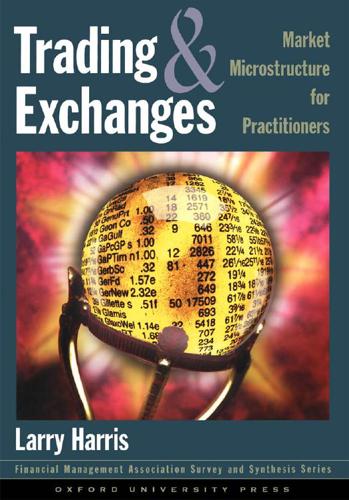
Trading and Exchanges: Market Microstructure for Practitioners
by
Larry Harris
Published 2 Jan 2003
* * * ▶ The Peso Problem The following story is part of the folklore of the Economics Department at the University of Chicago. I have no idea of its veracity. In the 1960s and 1970s, inflation in Mexico was significantly higher than in the United States. Interest rates therefore were higher in Mexico than in the United States. Had there been a floating exchange rate regime then, the Mexican peso would have depreciated relative to the dollar at a rate that would have made investors roughly indifferent between investing in the United States and in Mexico. For example, a U.S. investor would have earned higher interest in Mexico than in the United States, but the premium would have been offset by a decrease in the dollar value of the peso over the period of the investment.
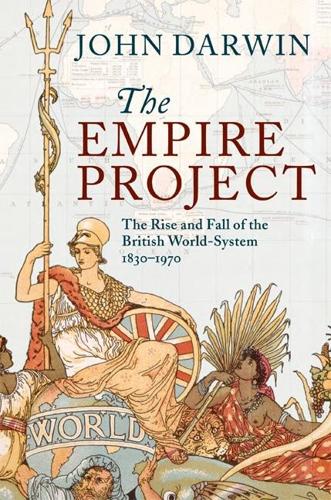
The Empire Project: The Rise and Fall of the British World-System, 1830–1970
by
John Darwin
Published 23 Sep 2009
First, although there had been ambiguous signals from across the Atlantic, floating the pound would breach the first commandment of the Bretton Woods doctrine. It was hard to believe that the American response would not be severe. Secondly, it was far from certain that all the other countries in the sterling area would adopt a floating exchange rate. Far from forming a bloc of like-minded states, the sterling countries might break up in anger and acrimony. Thirdly, floating the pound might lead to the break-up of the European Payments Union (a currency pool along sterling area lines) if the pound was devalued against some European currencies.